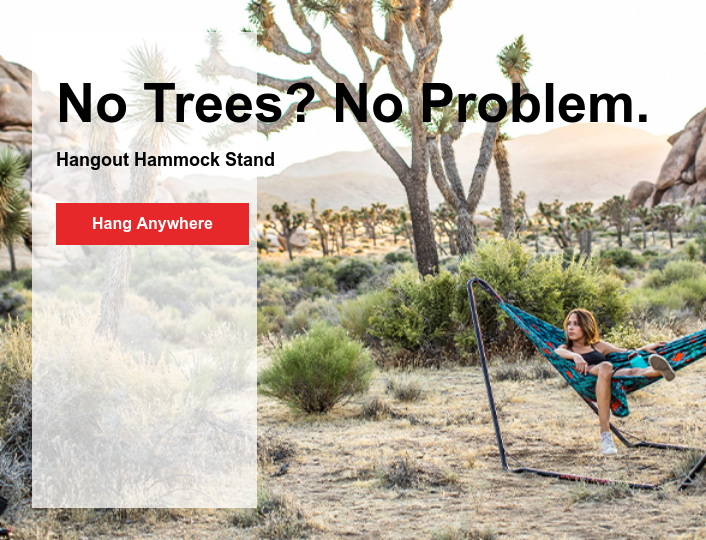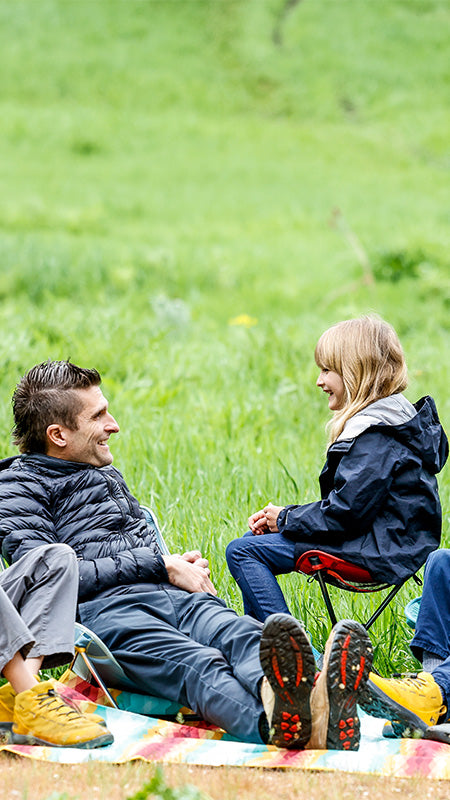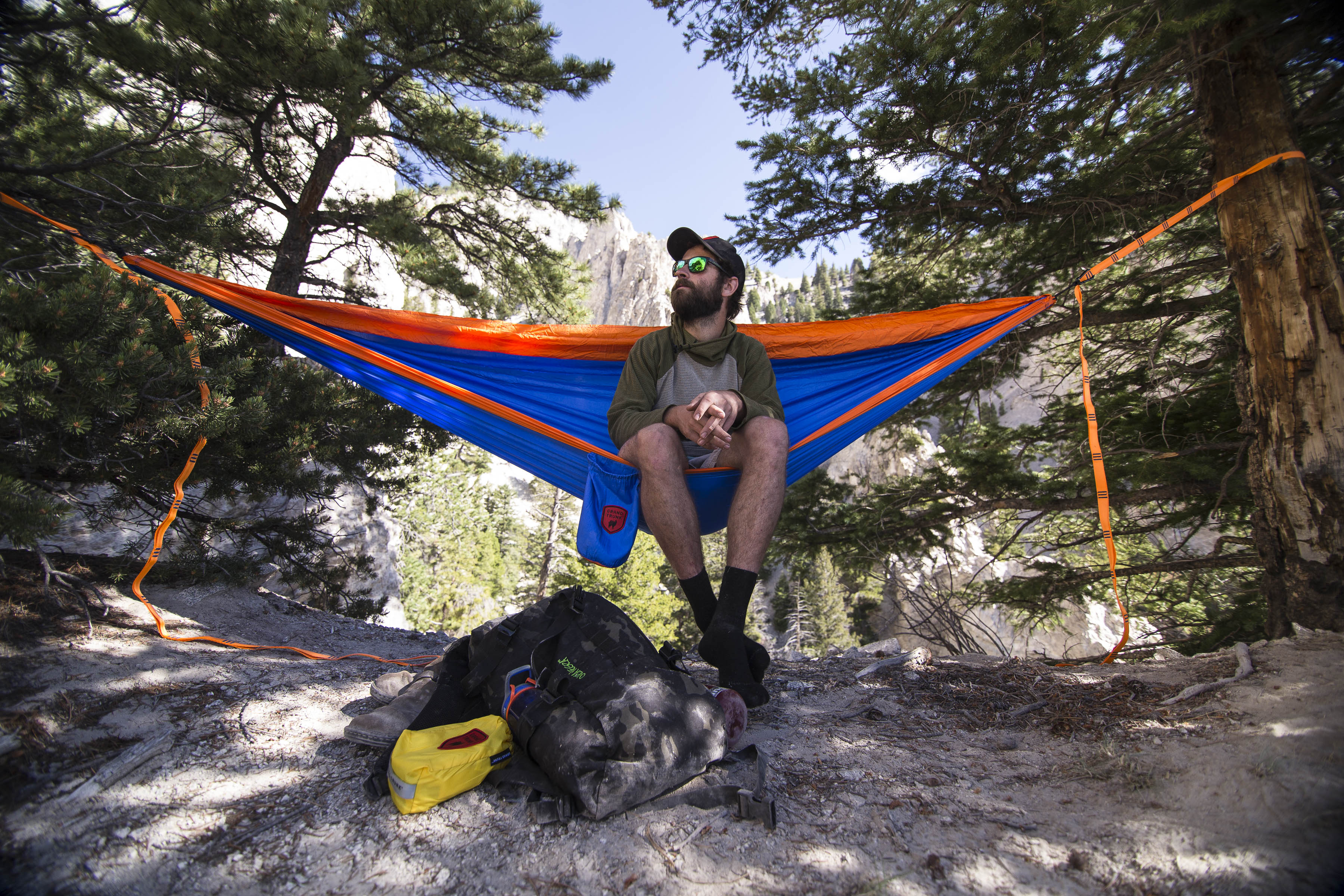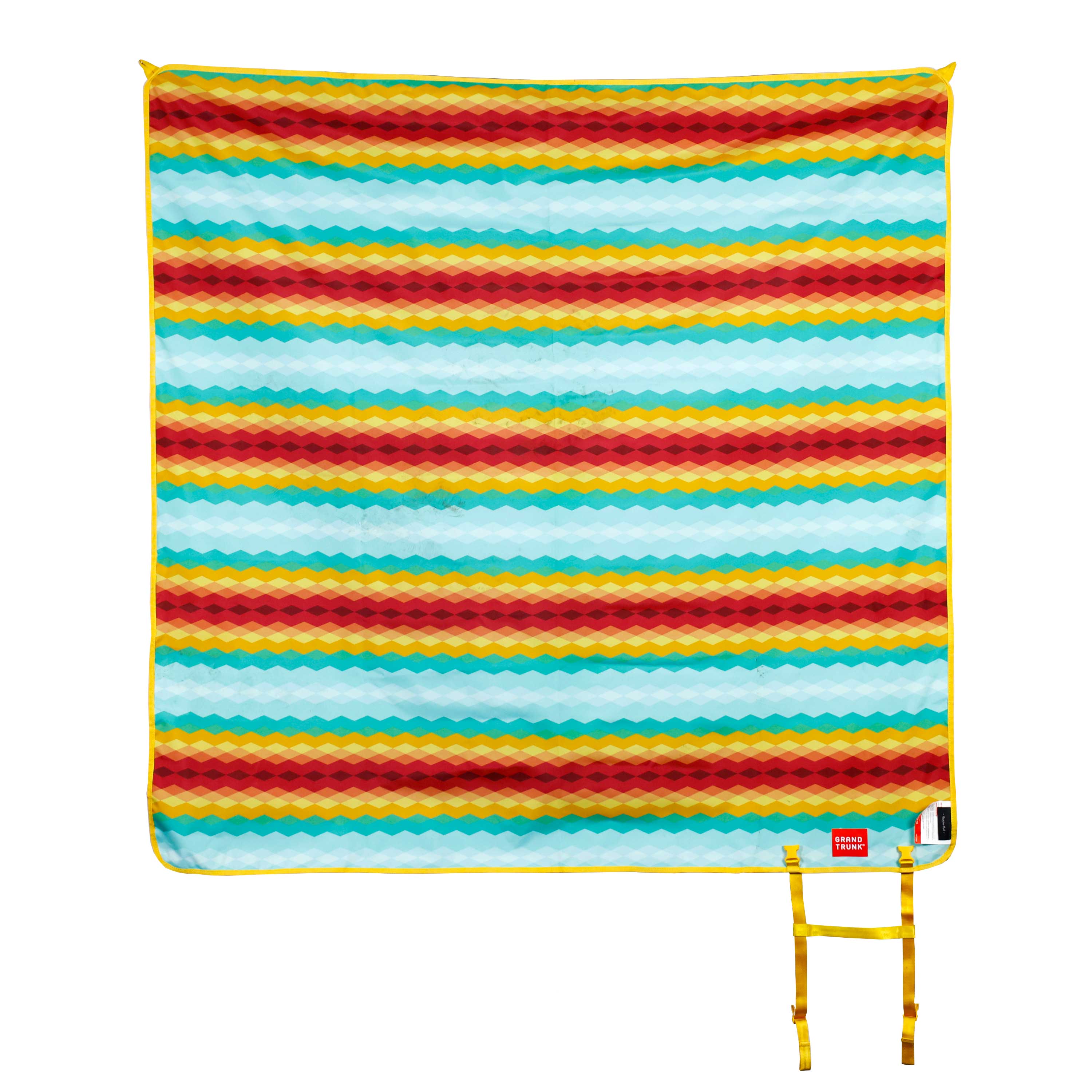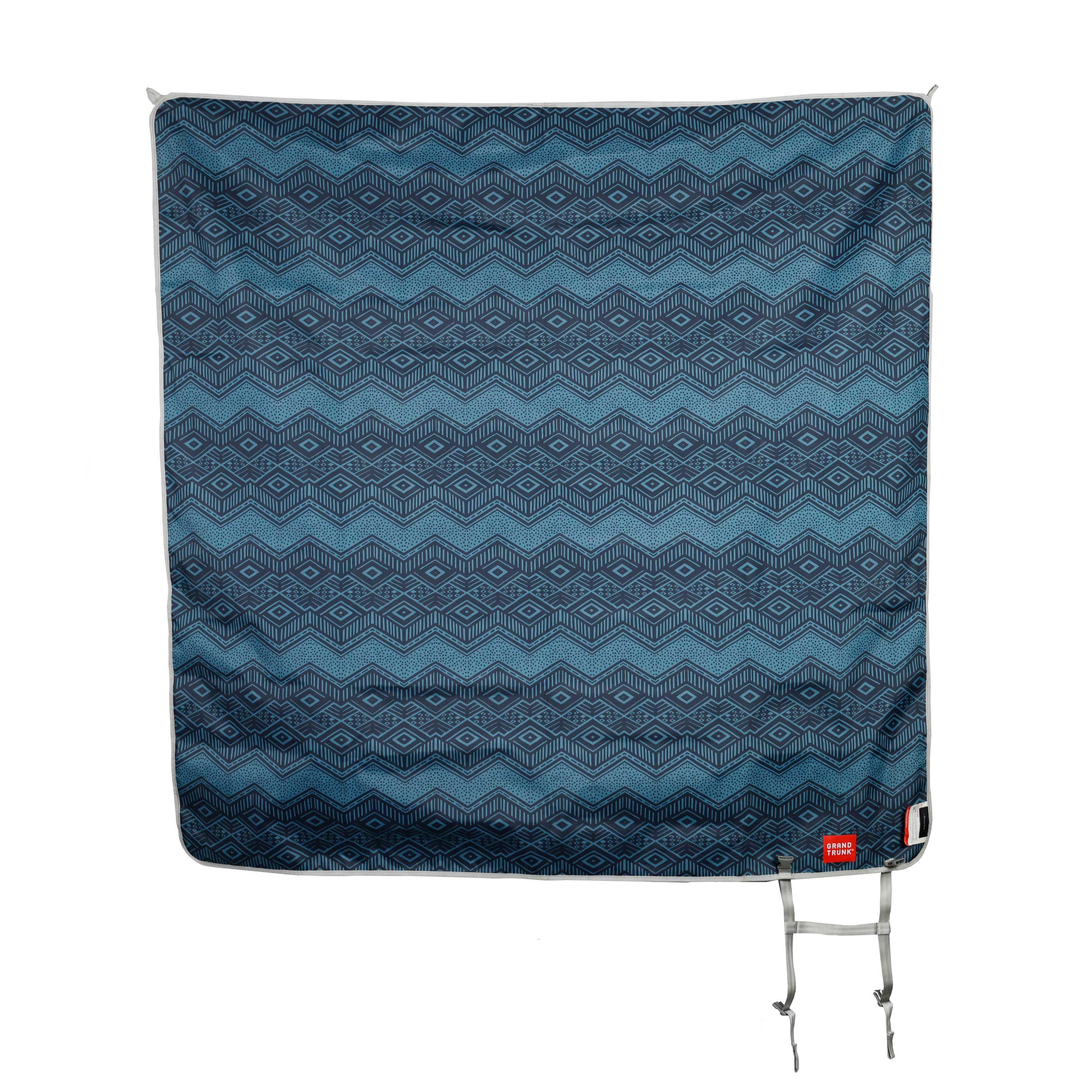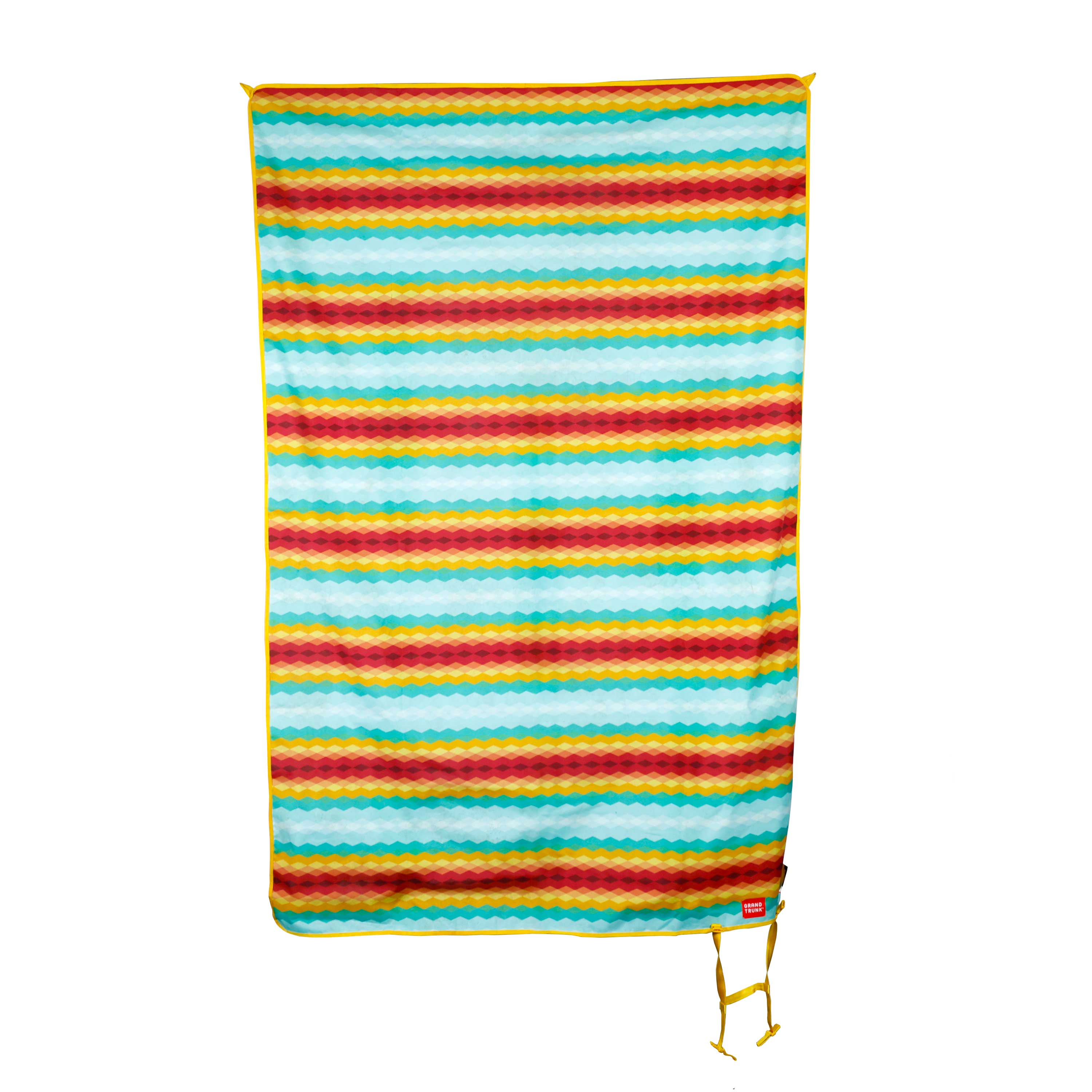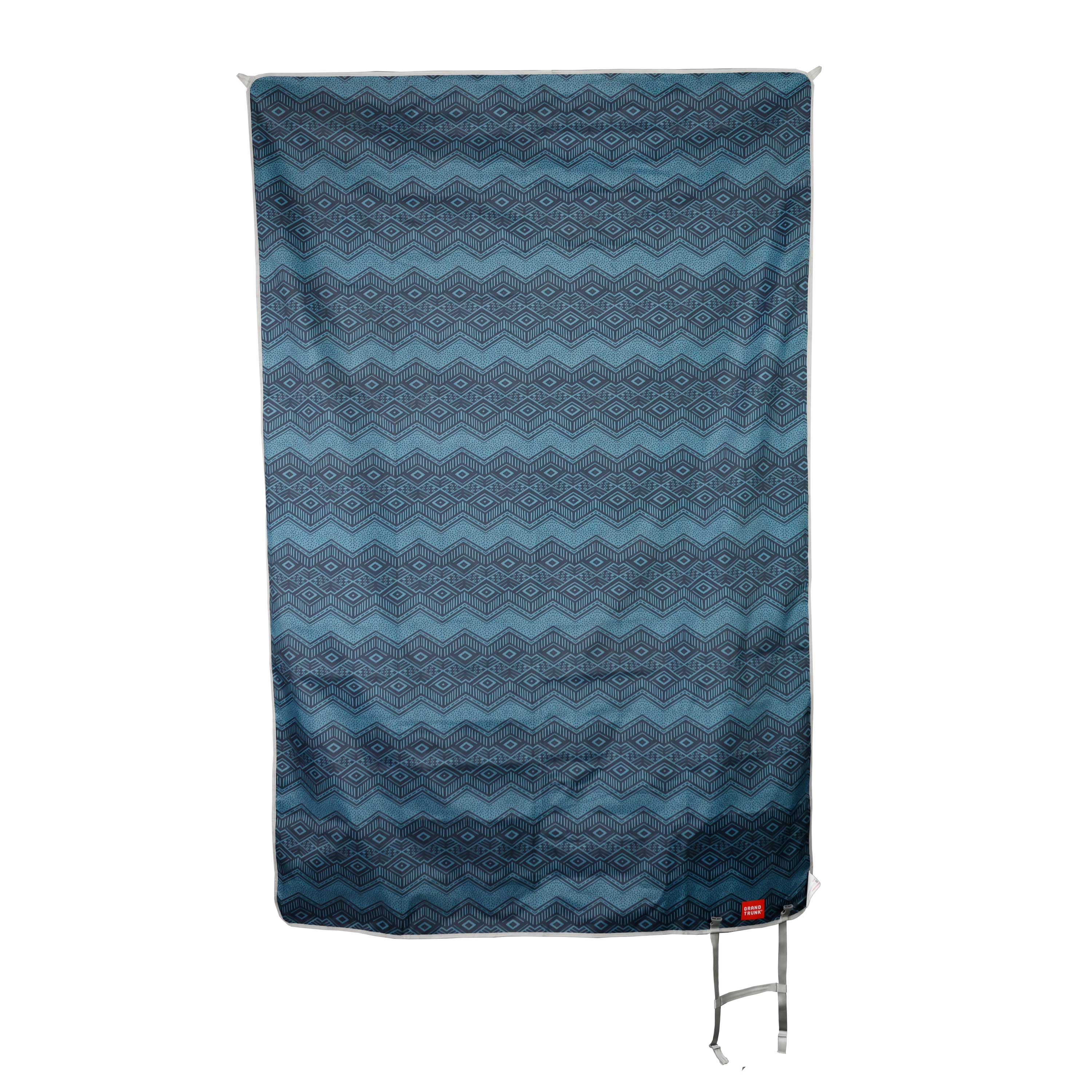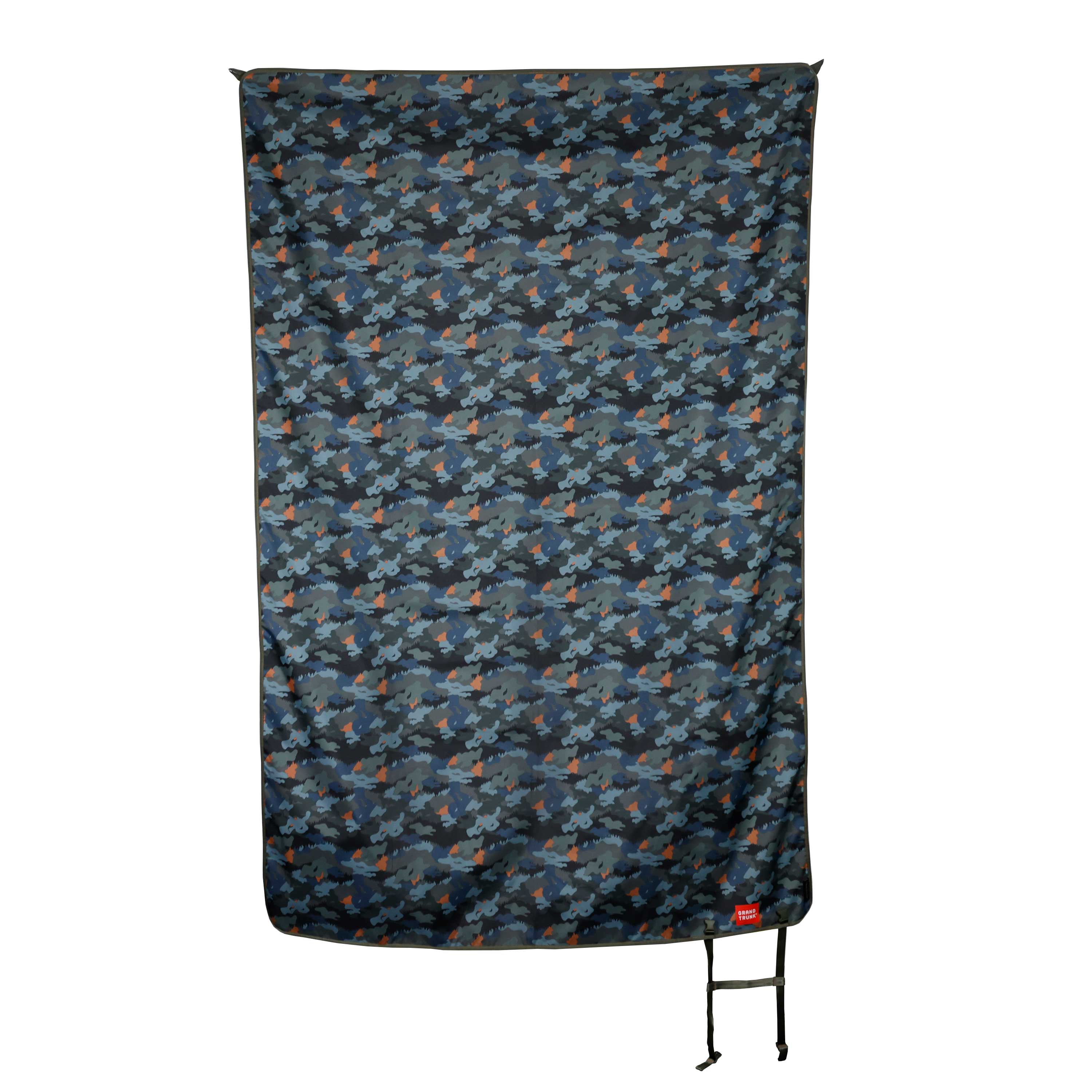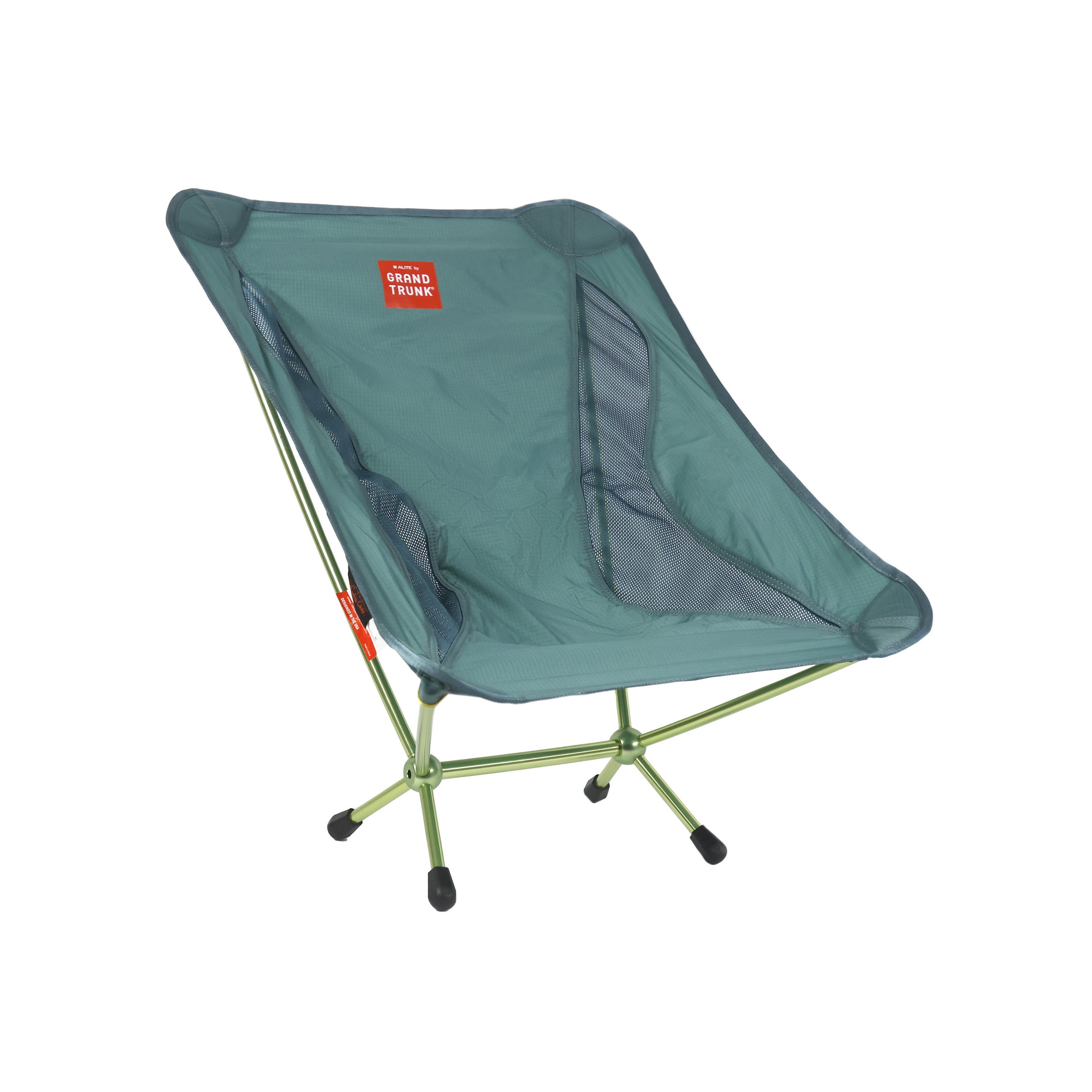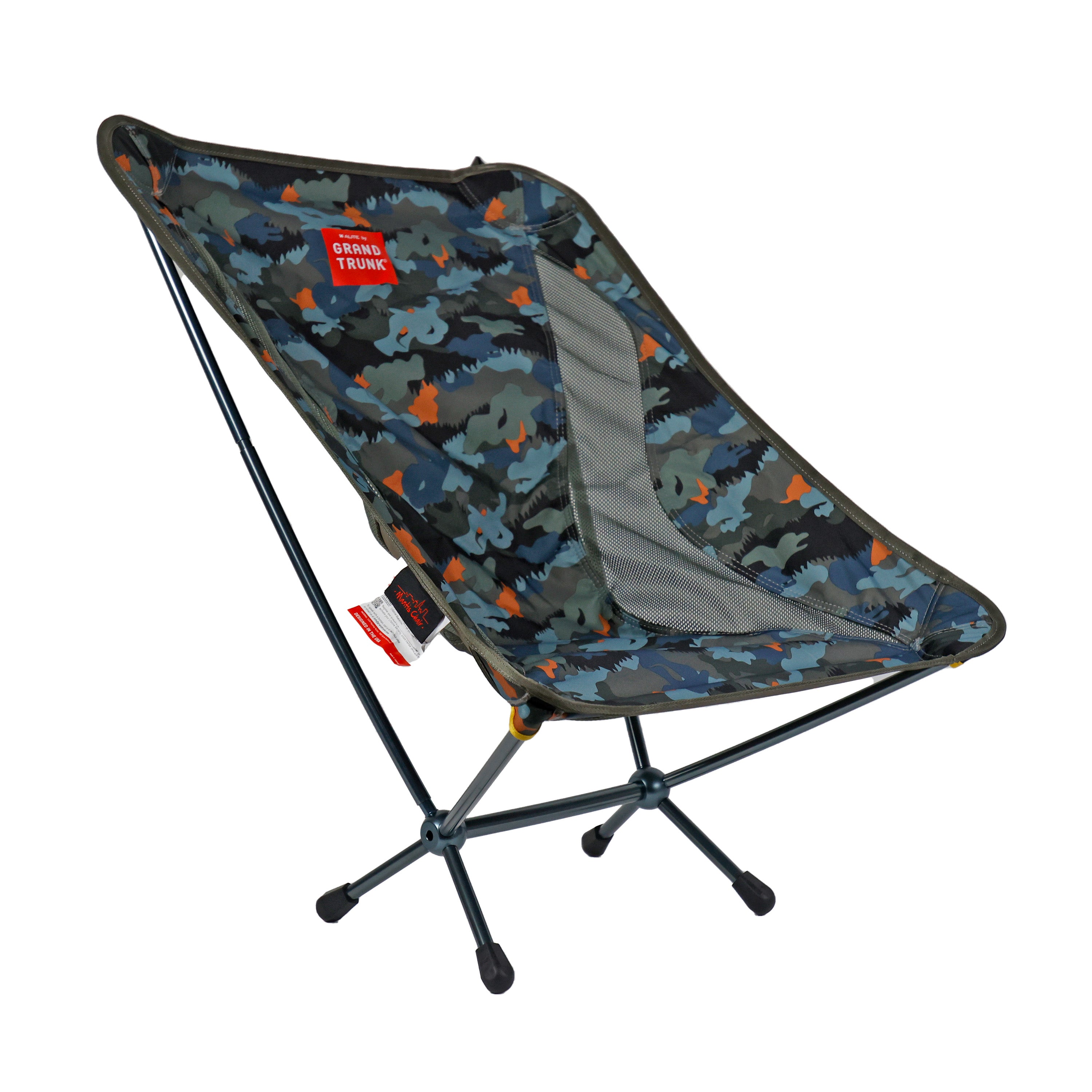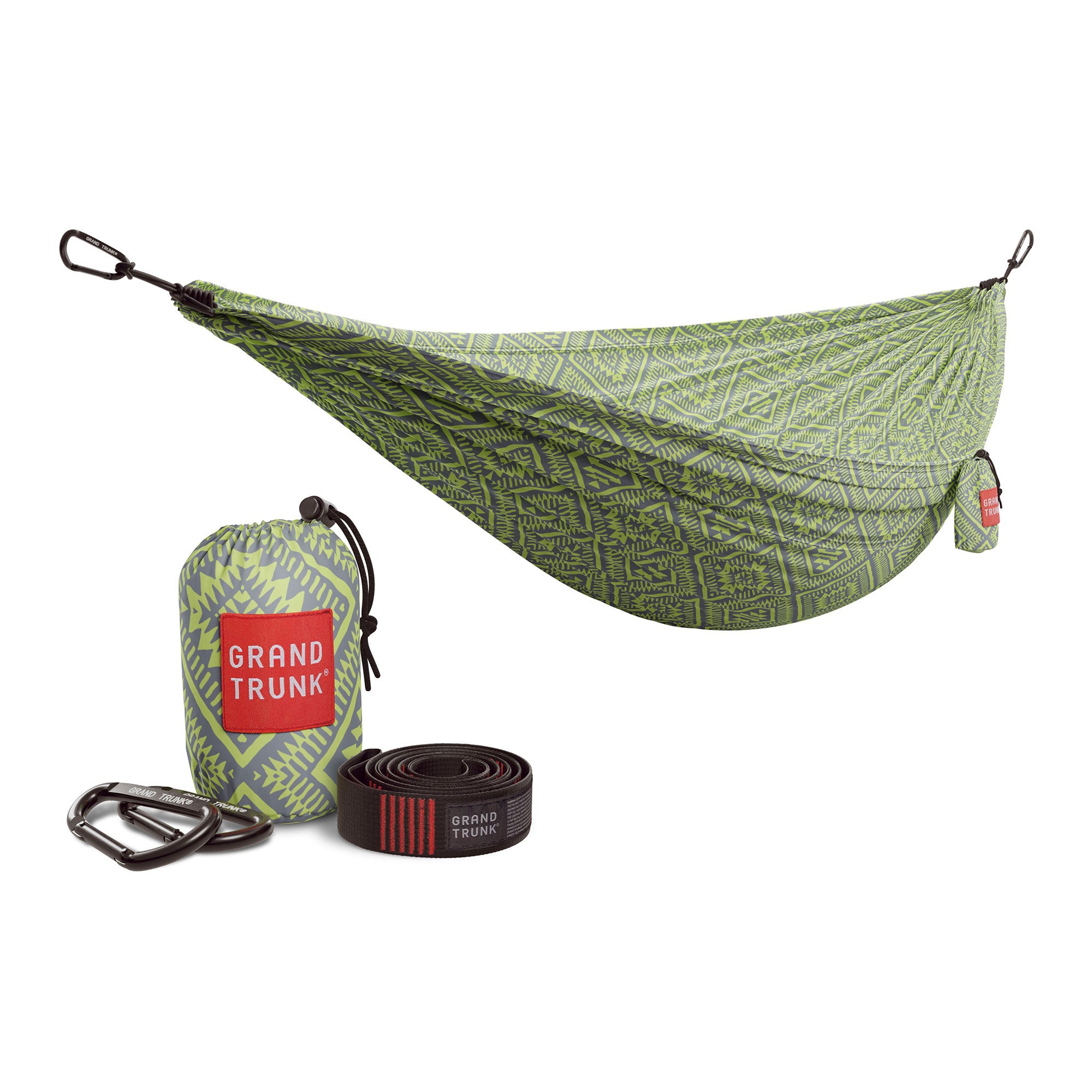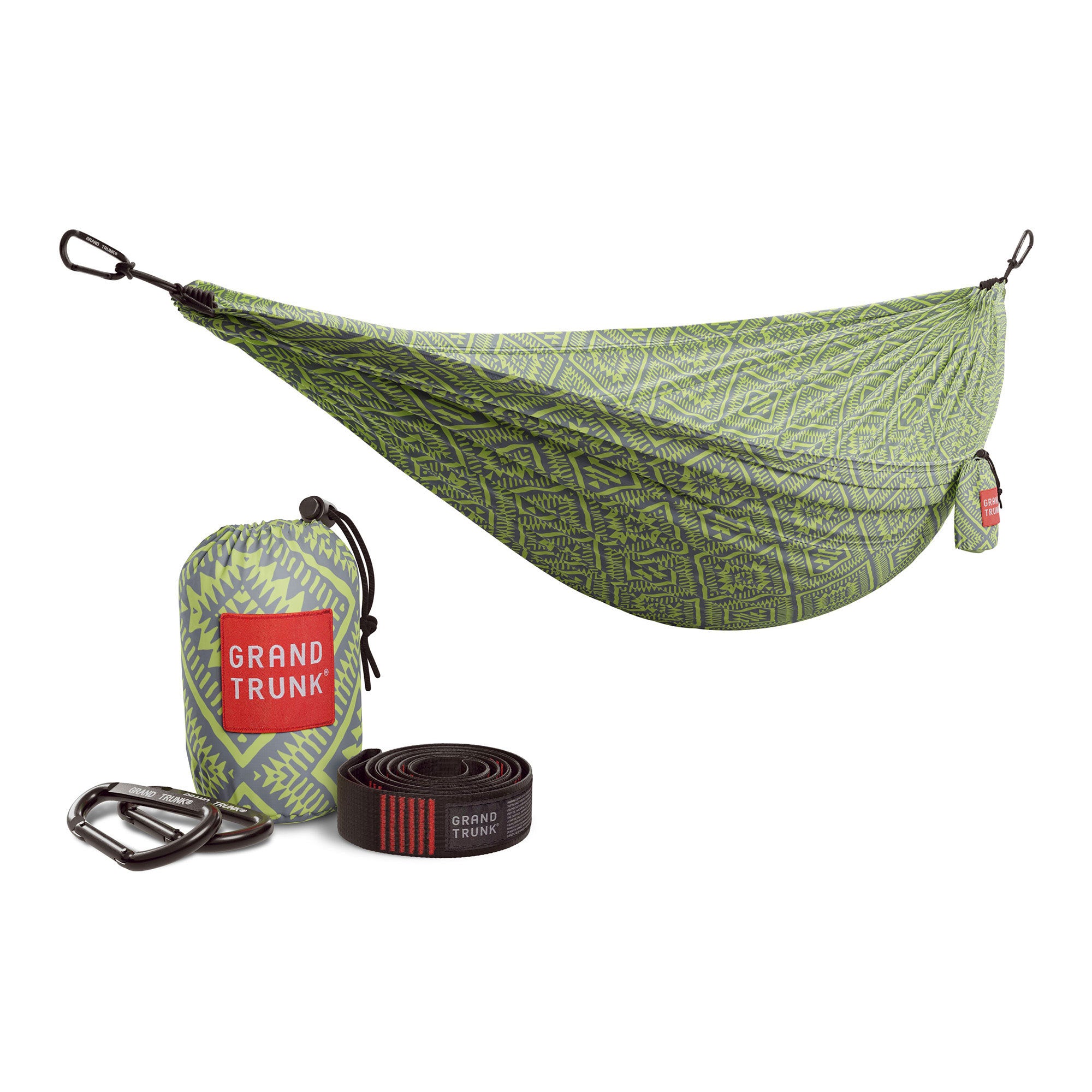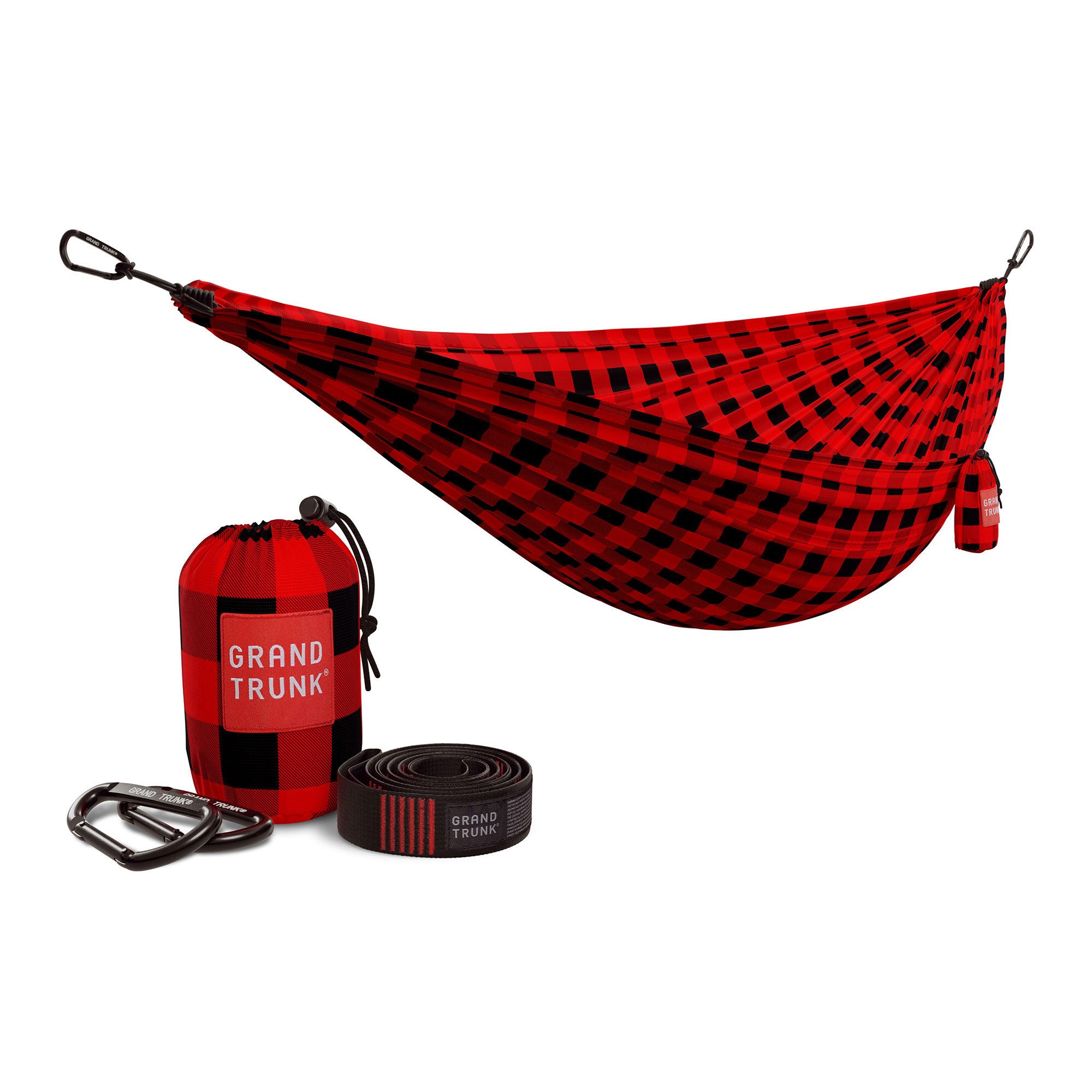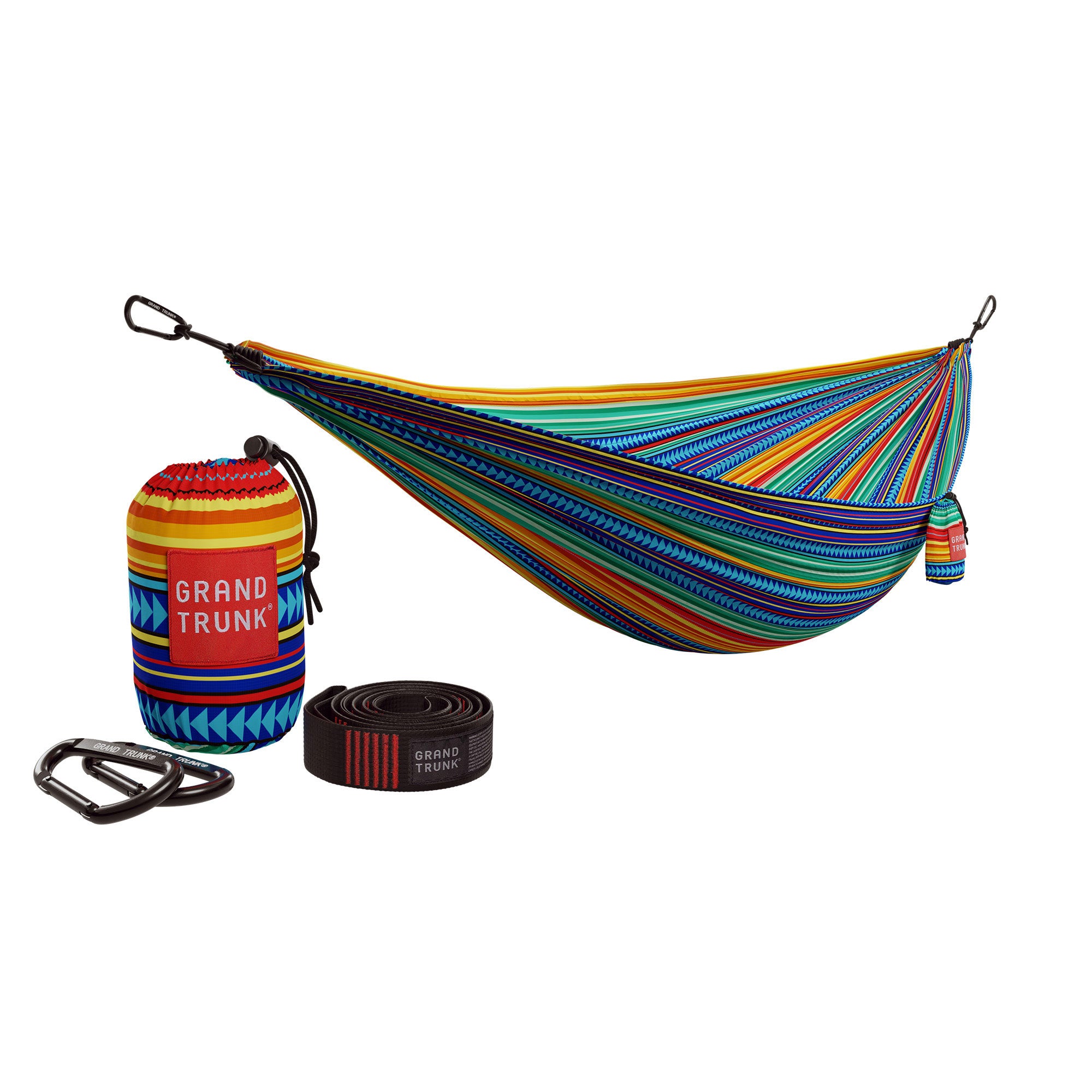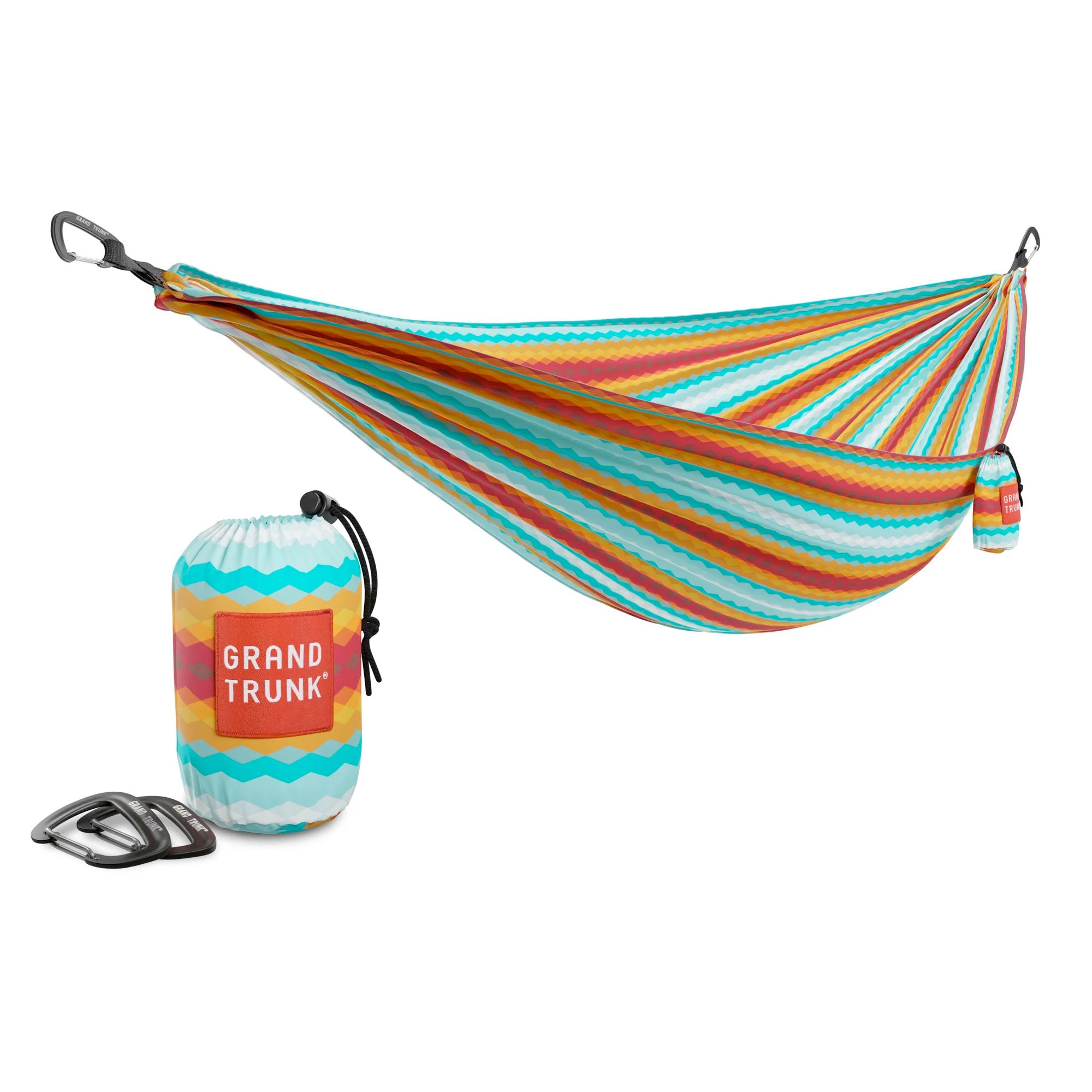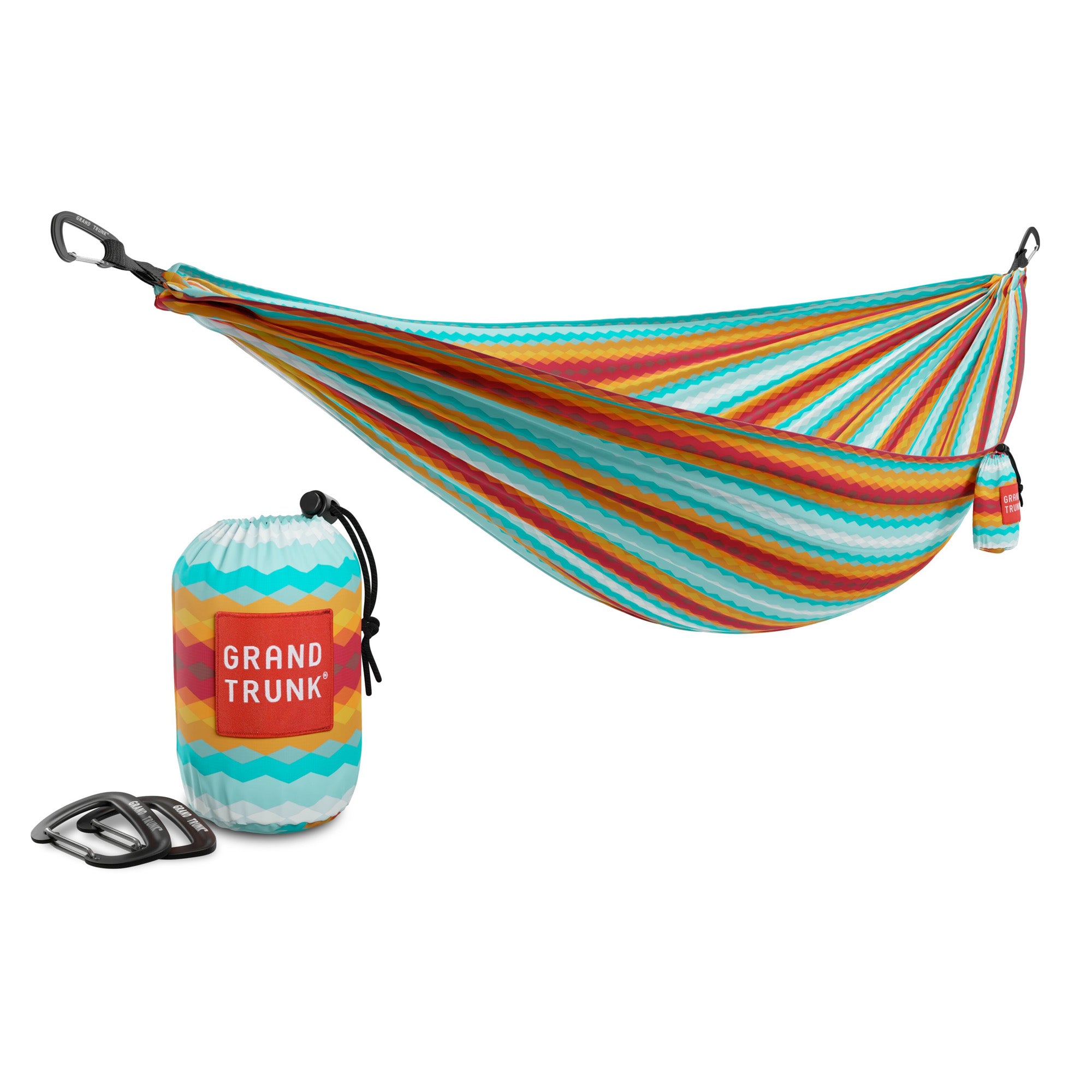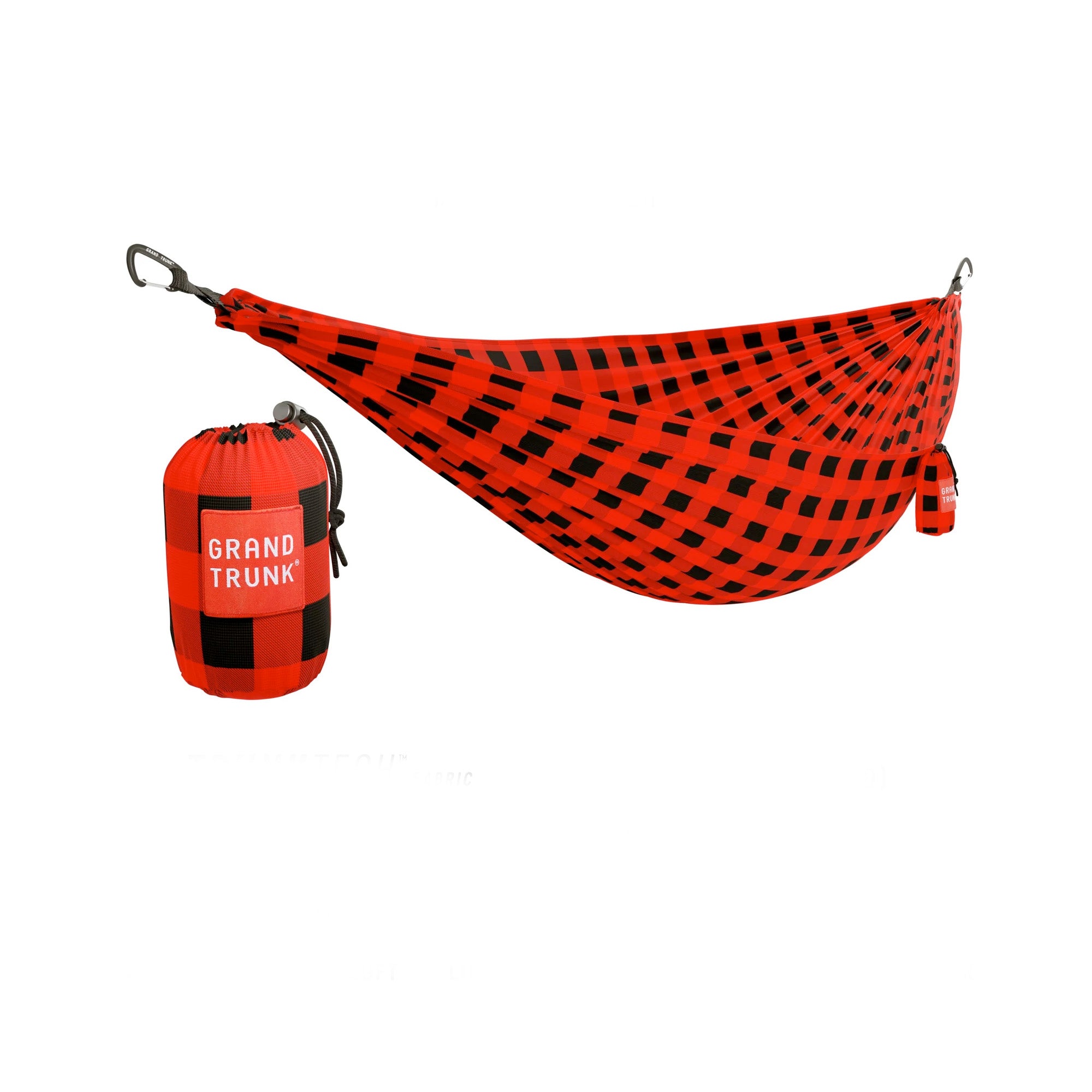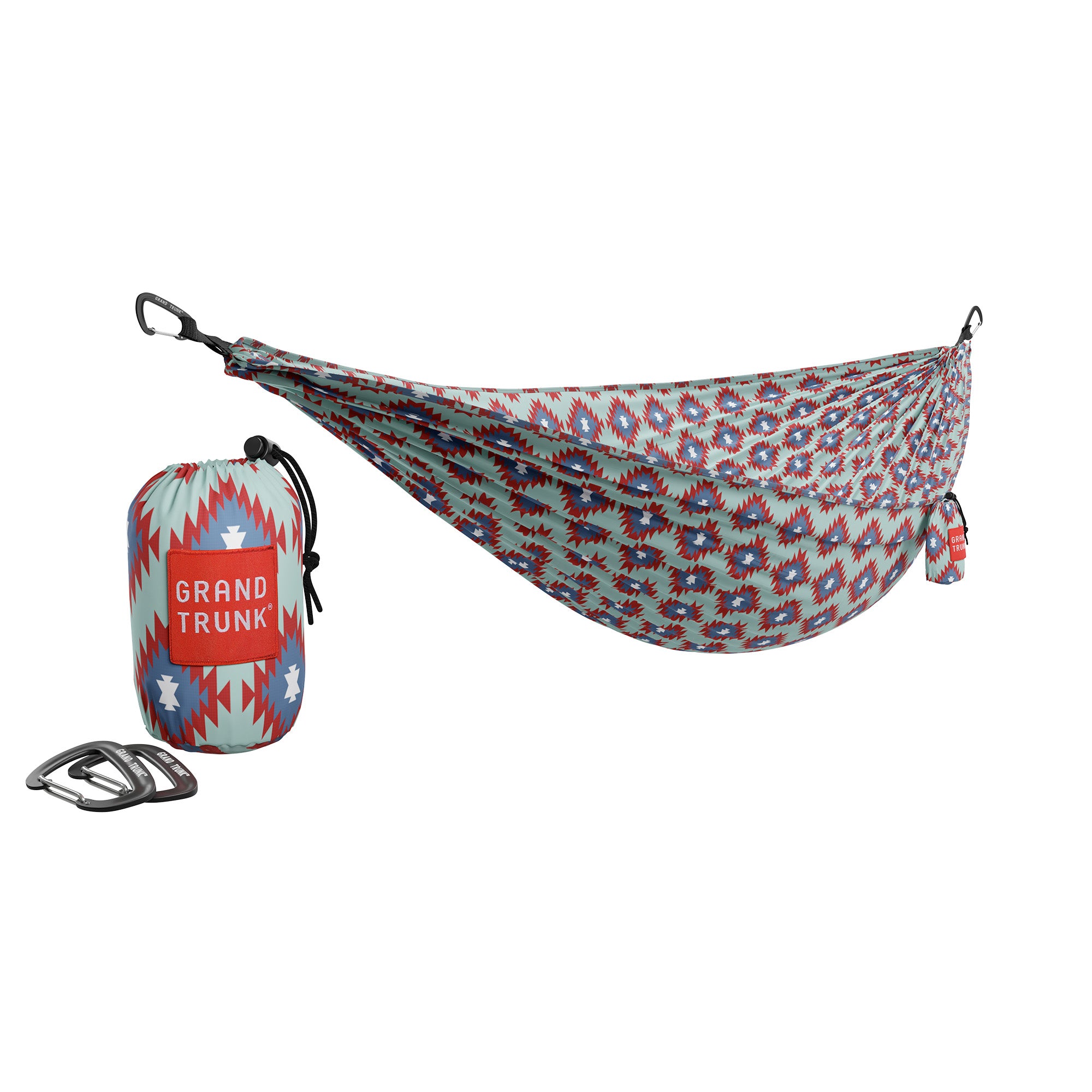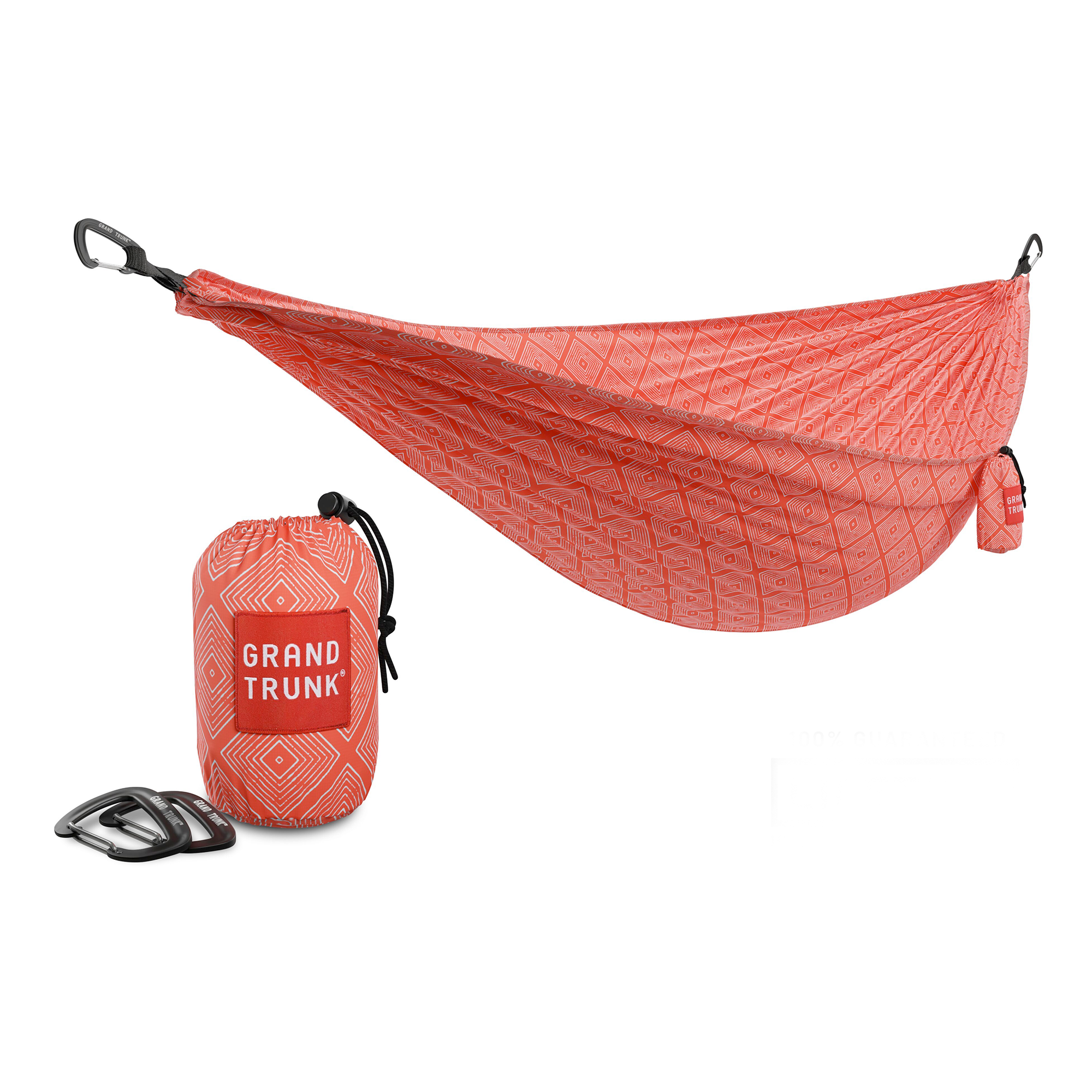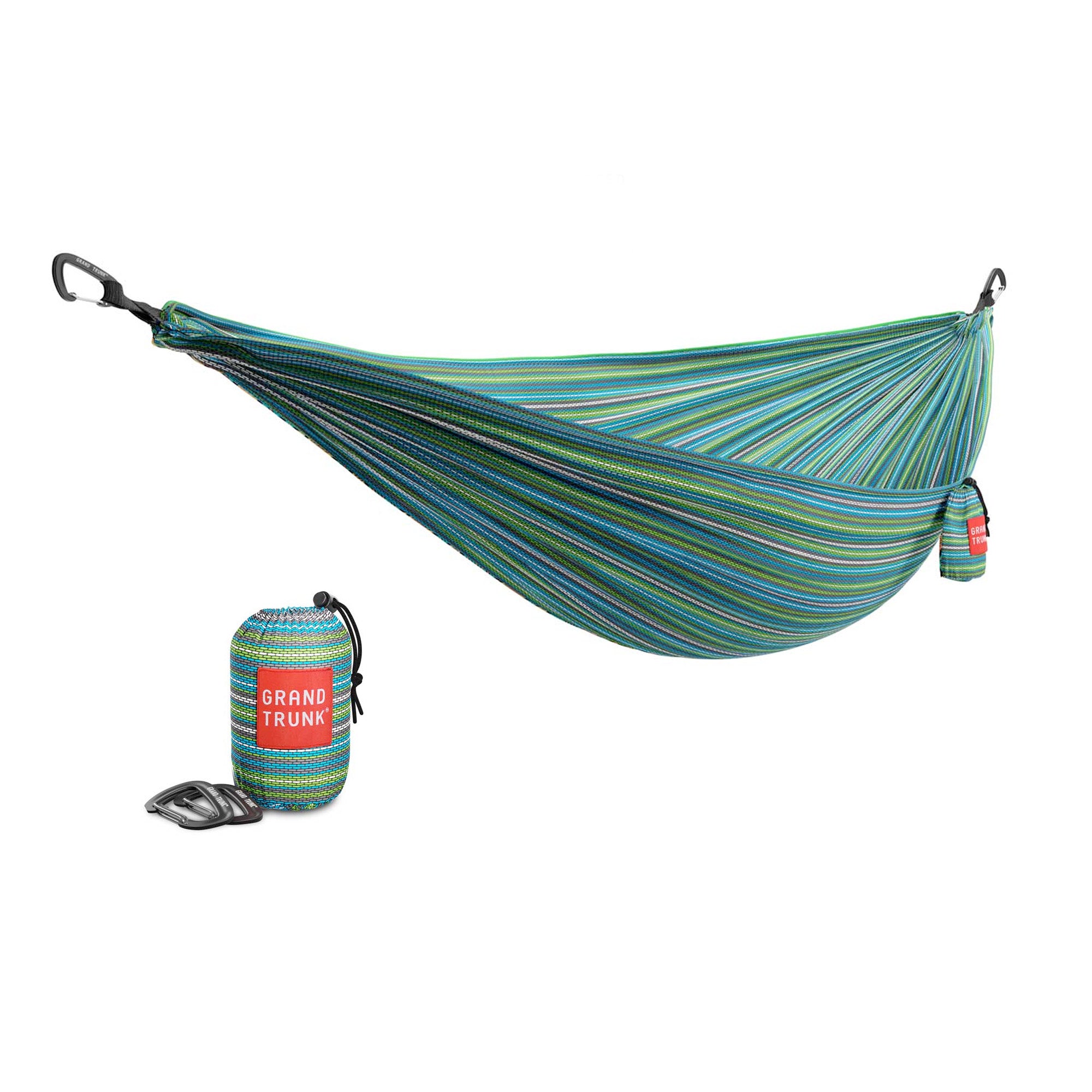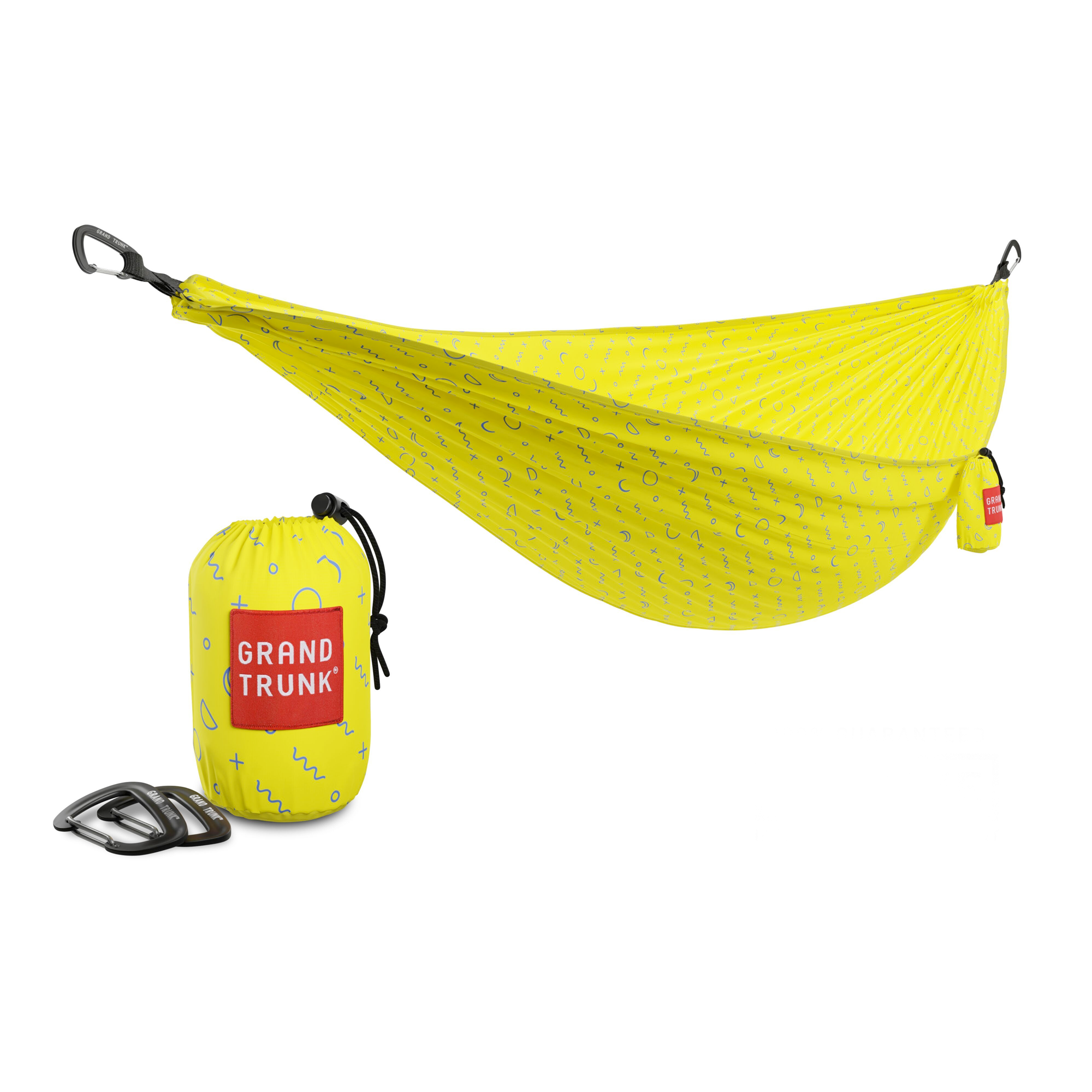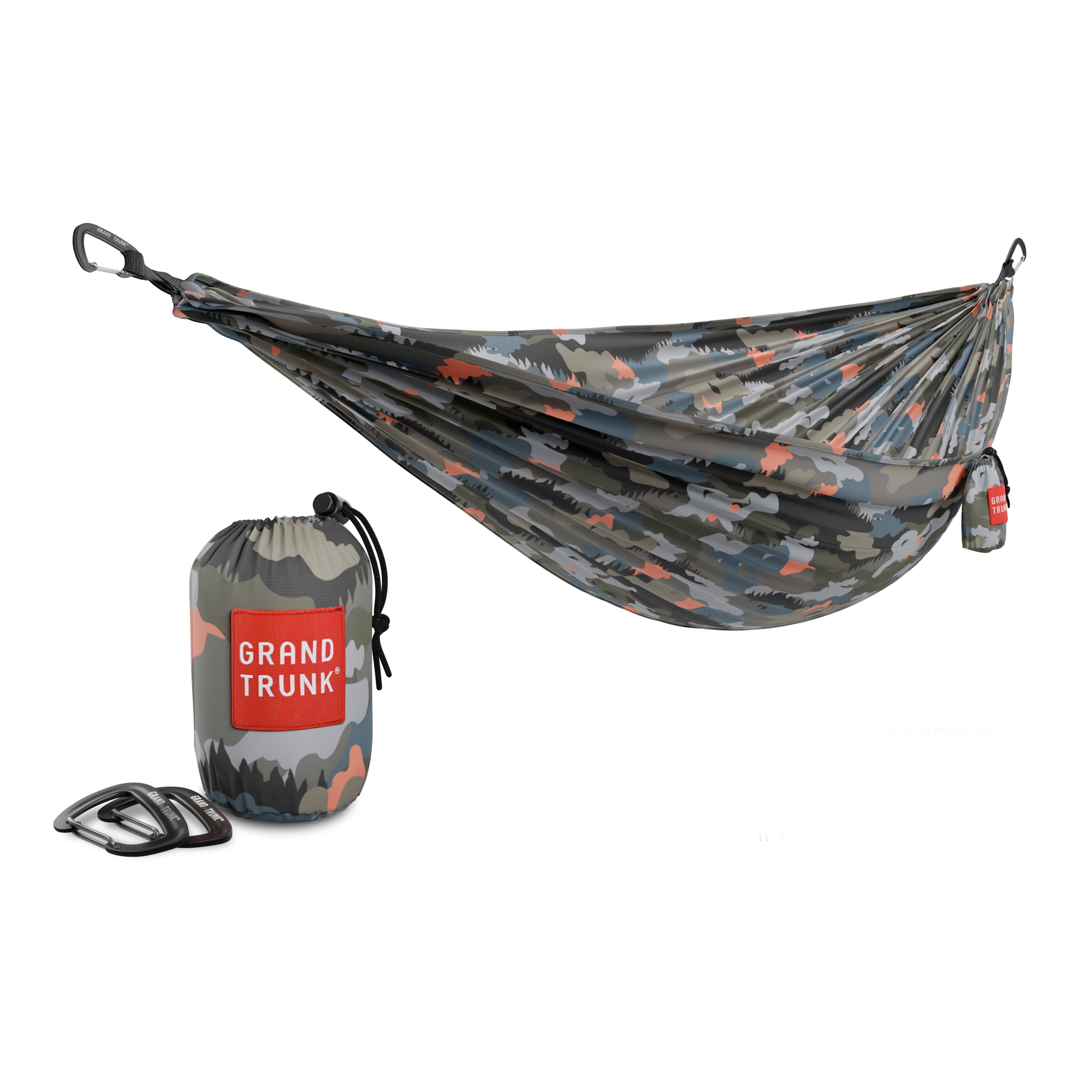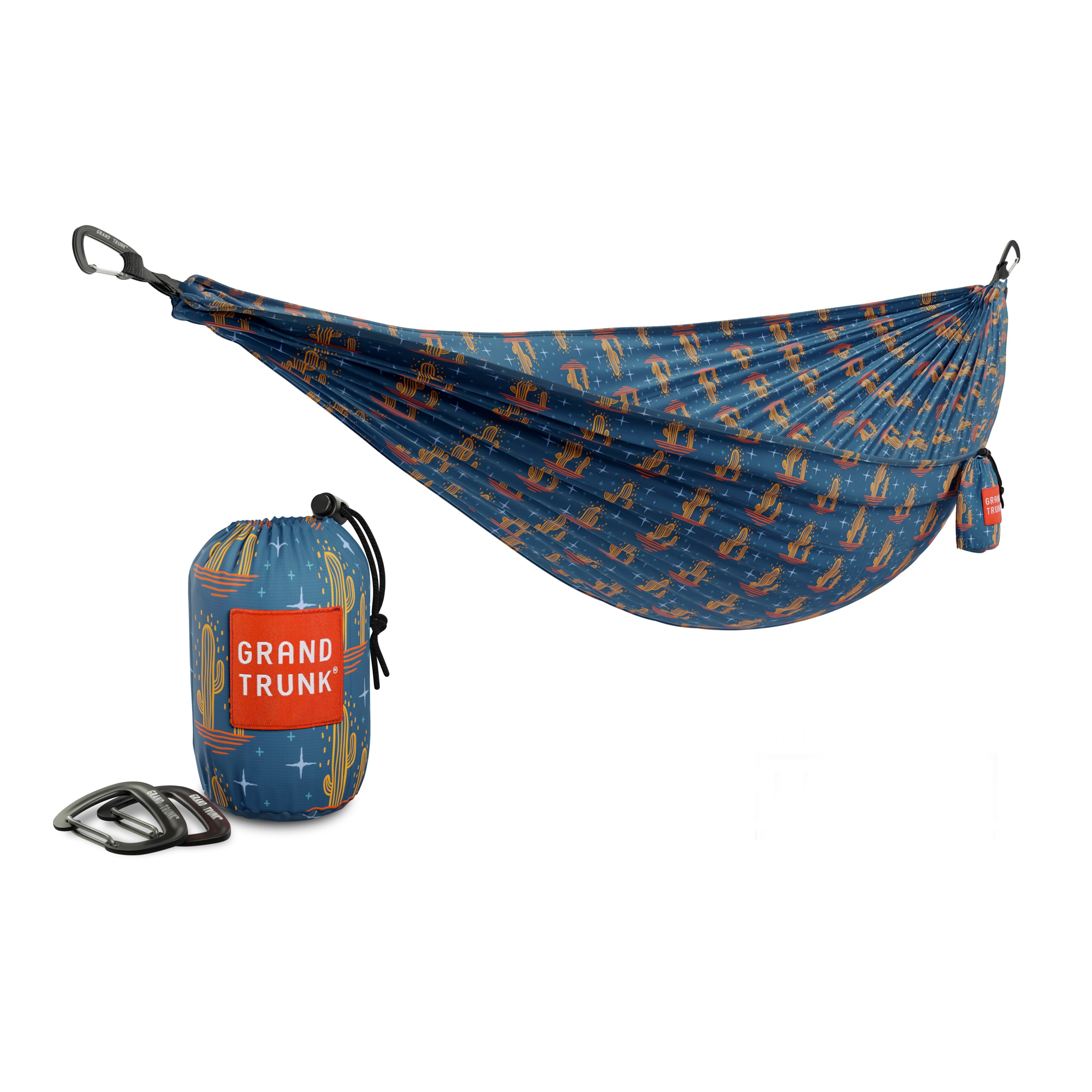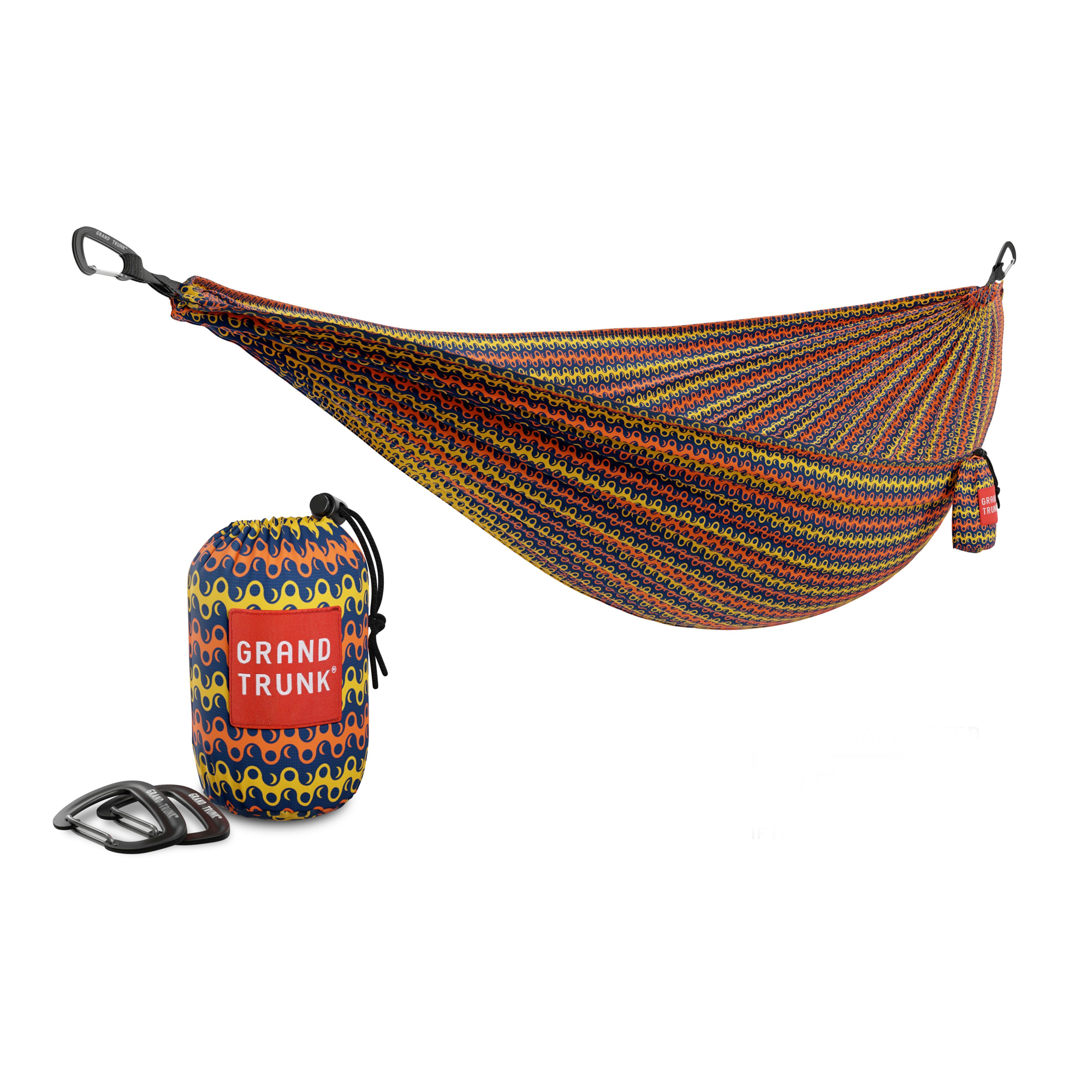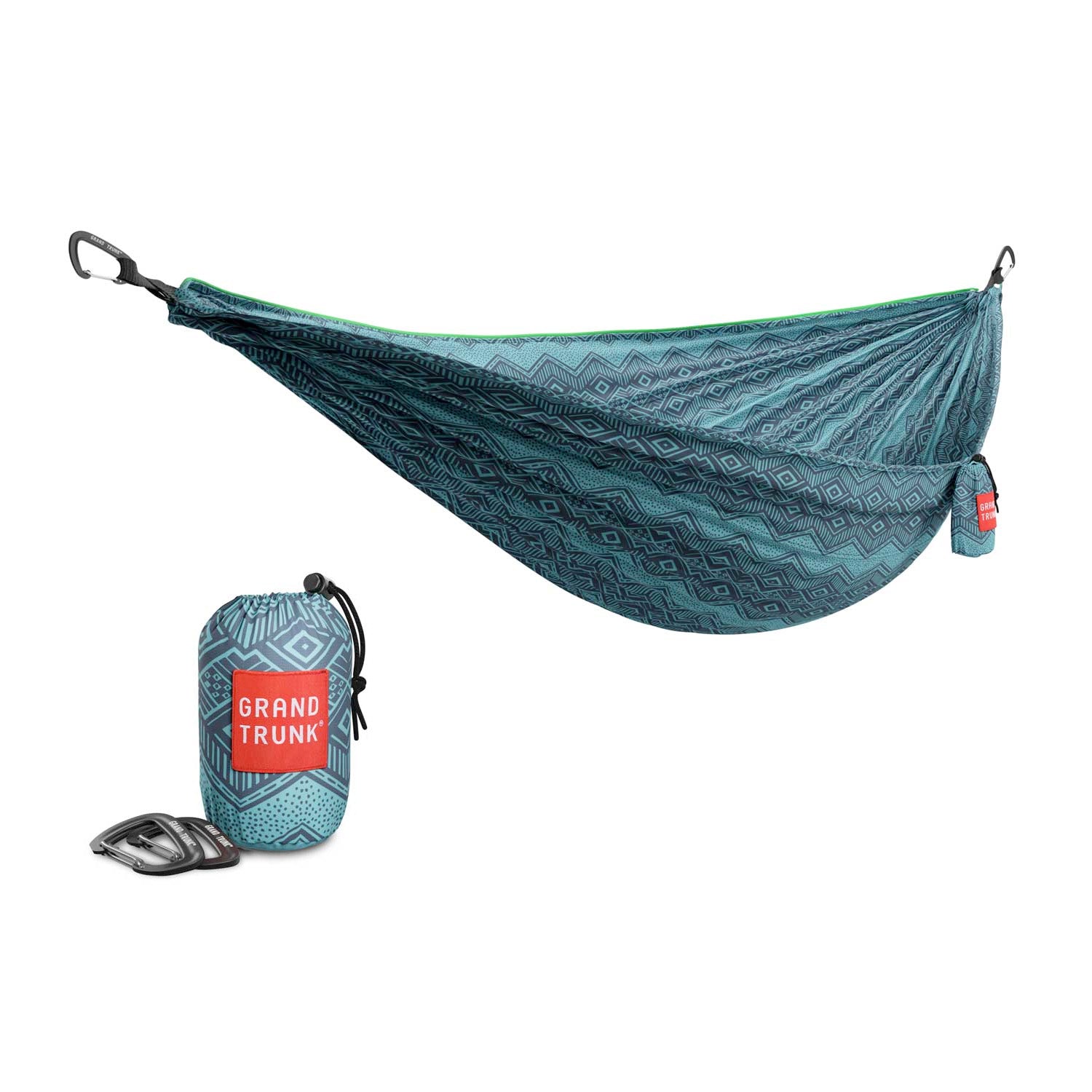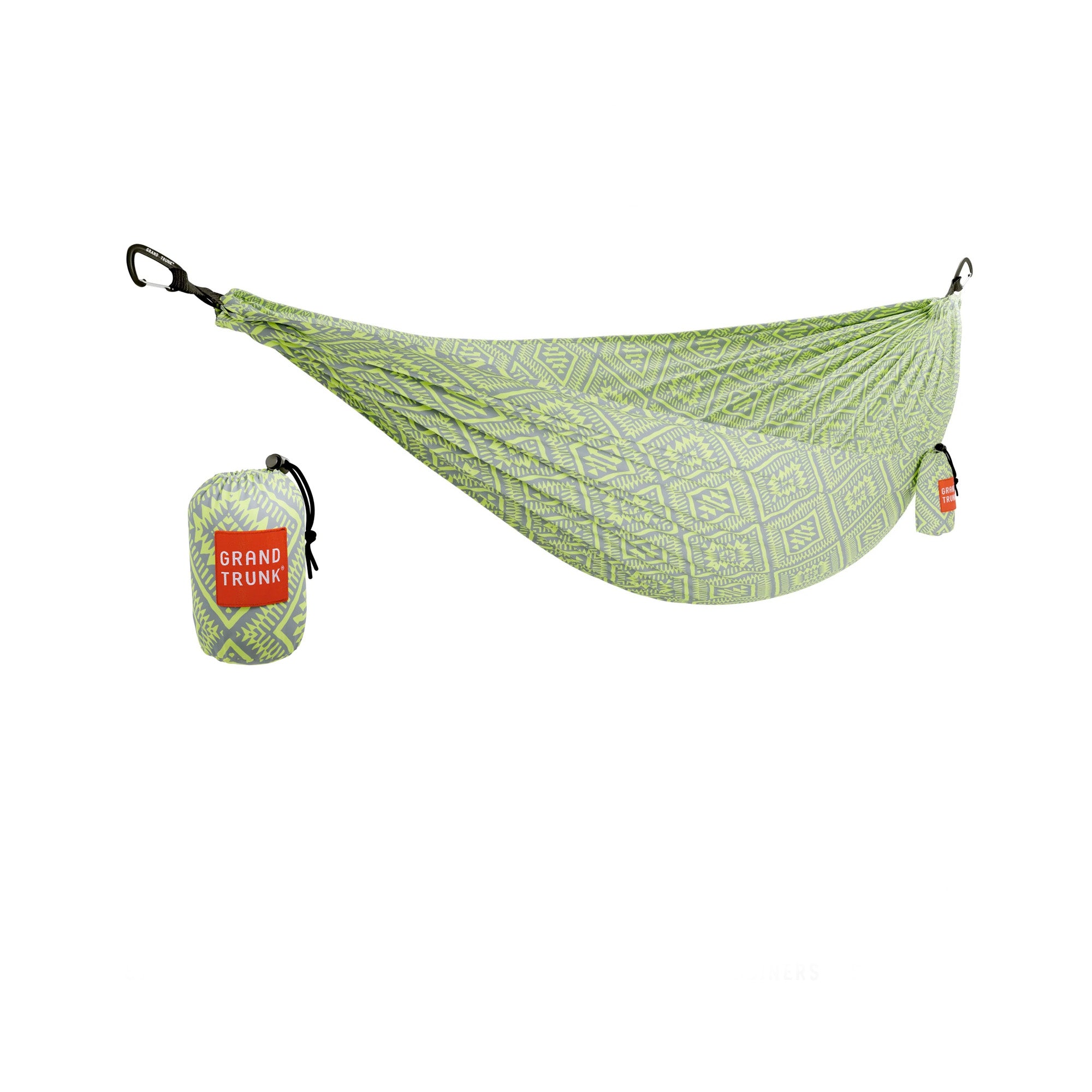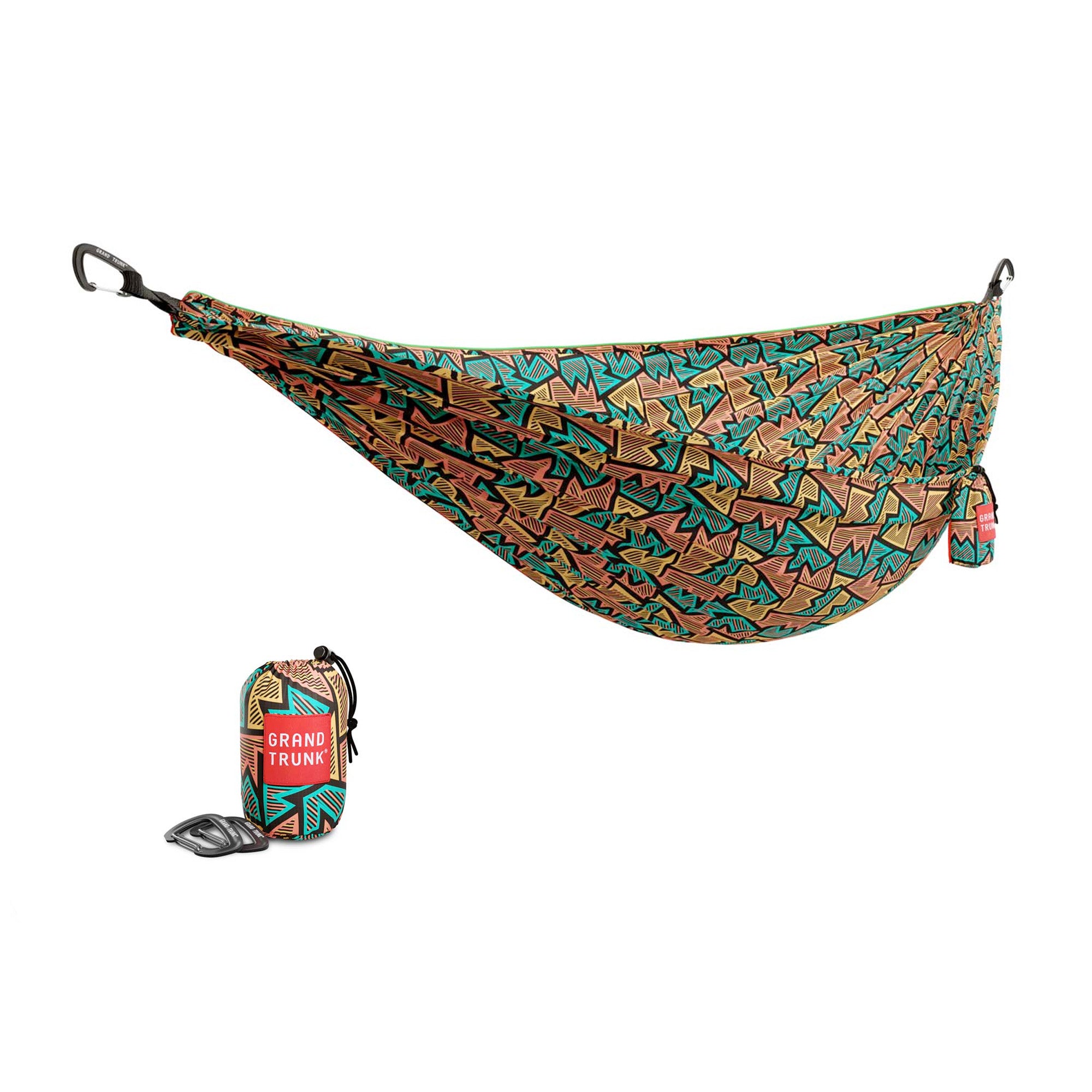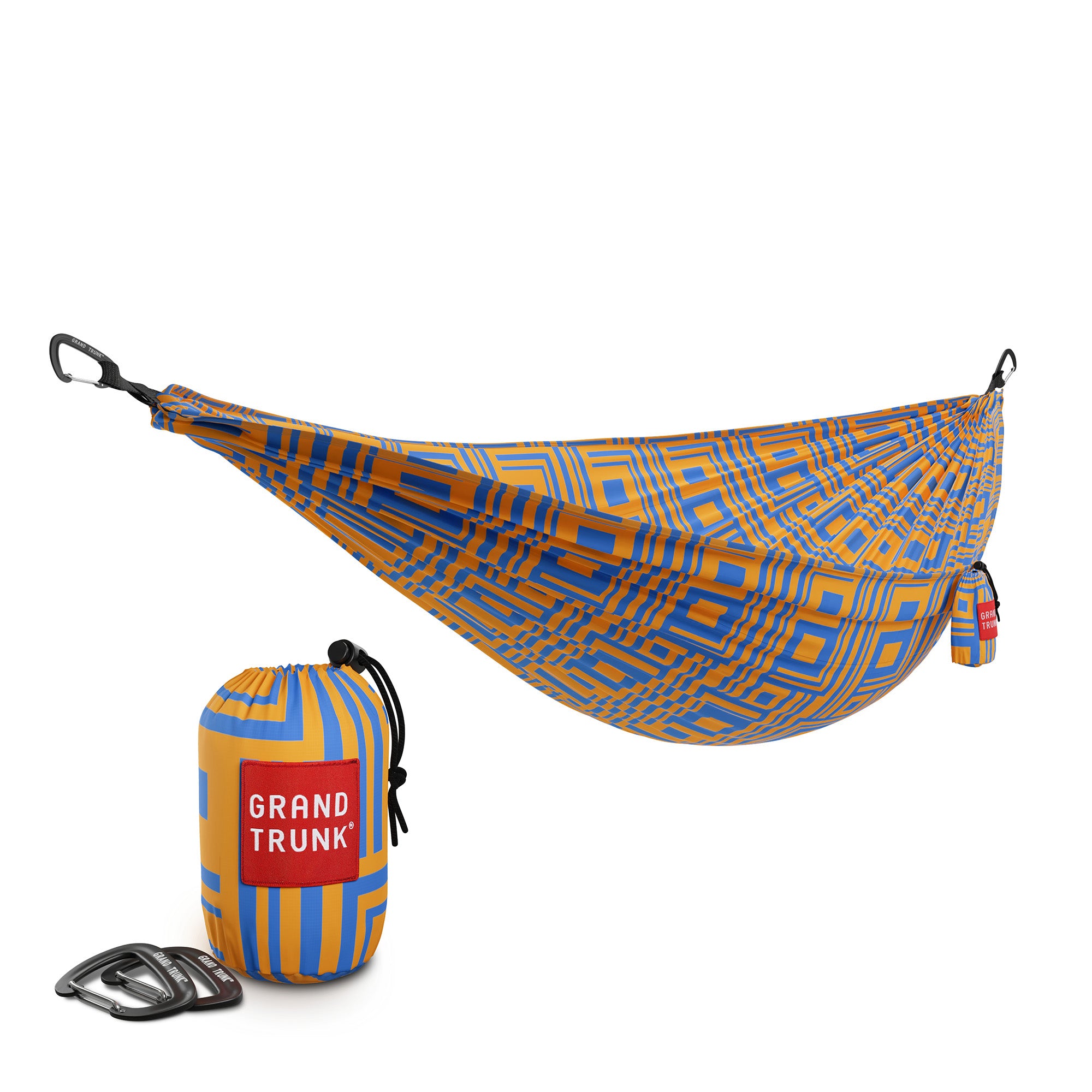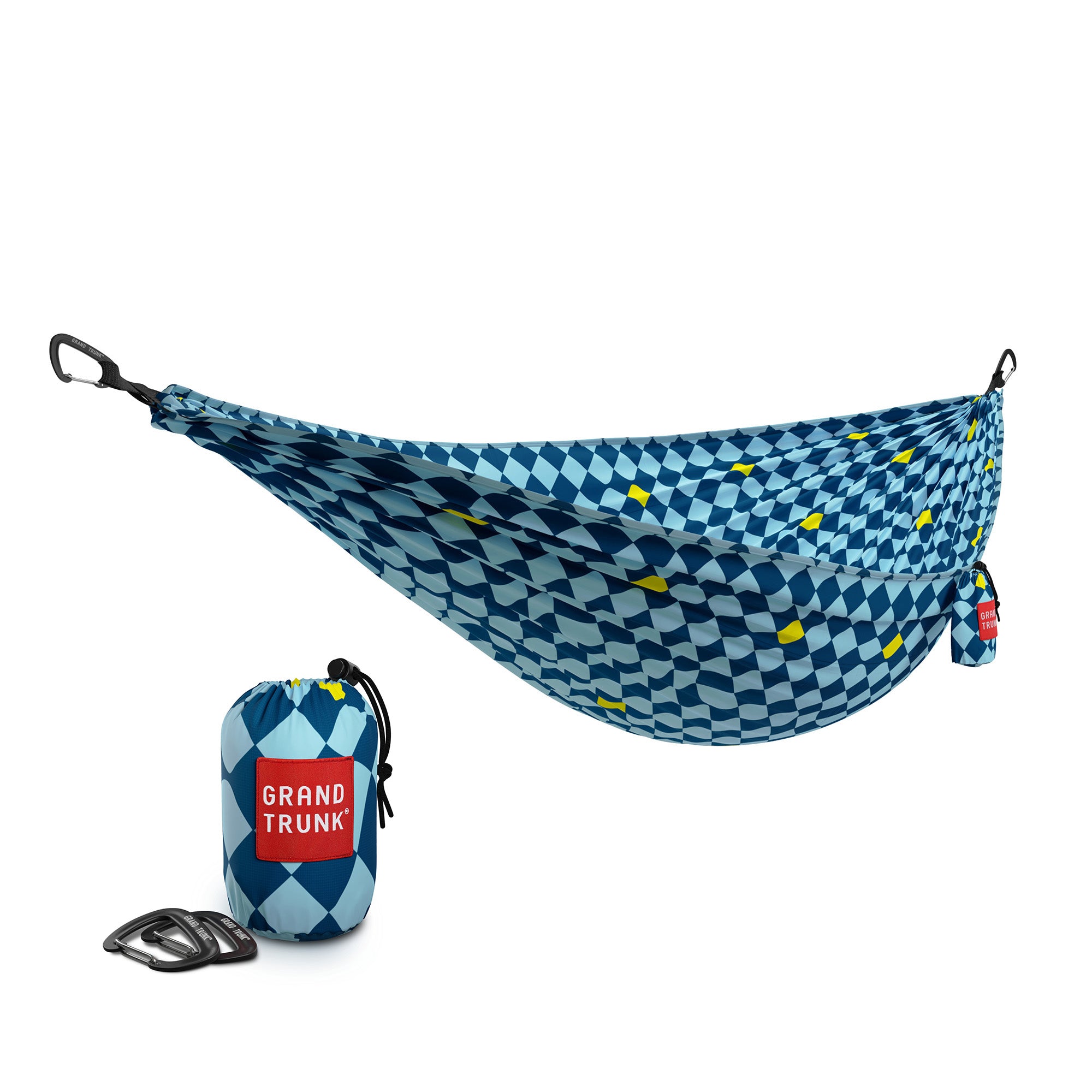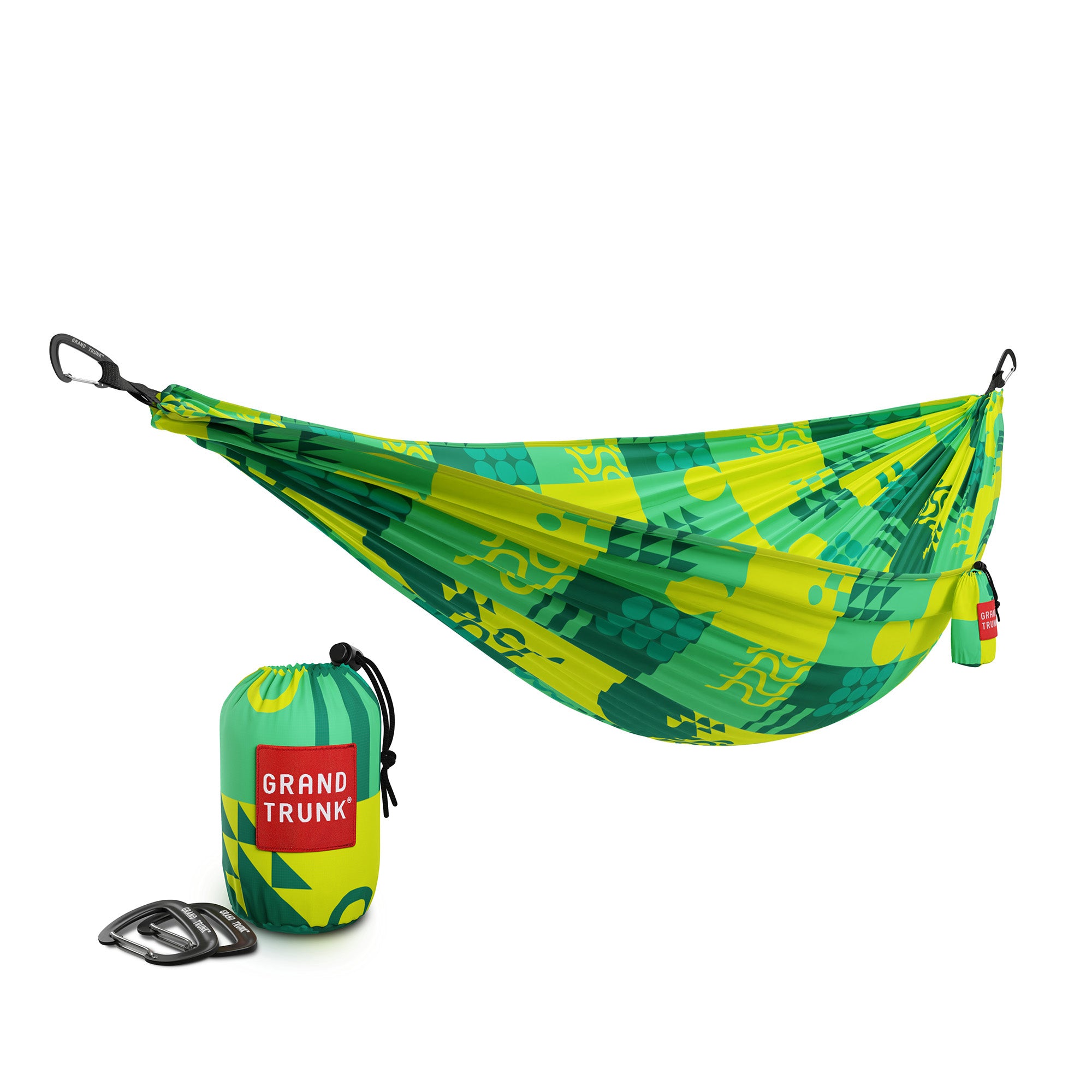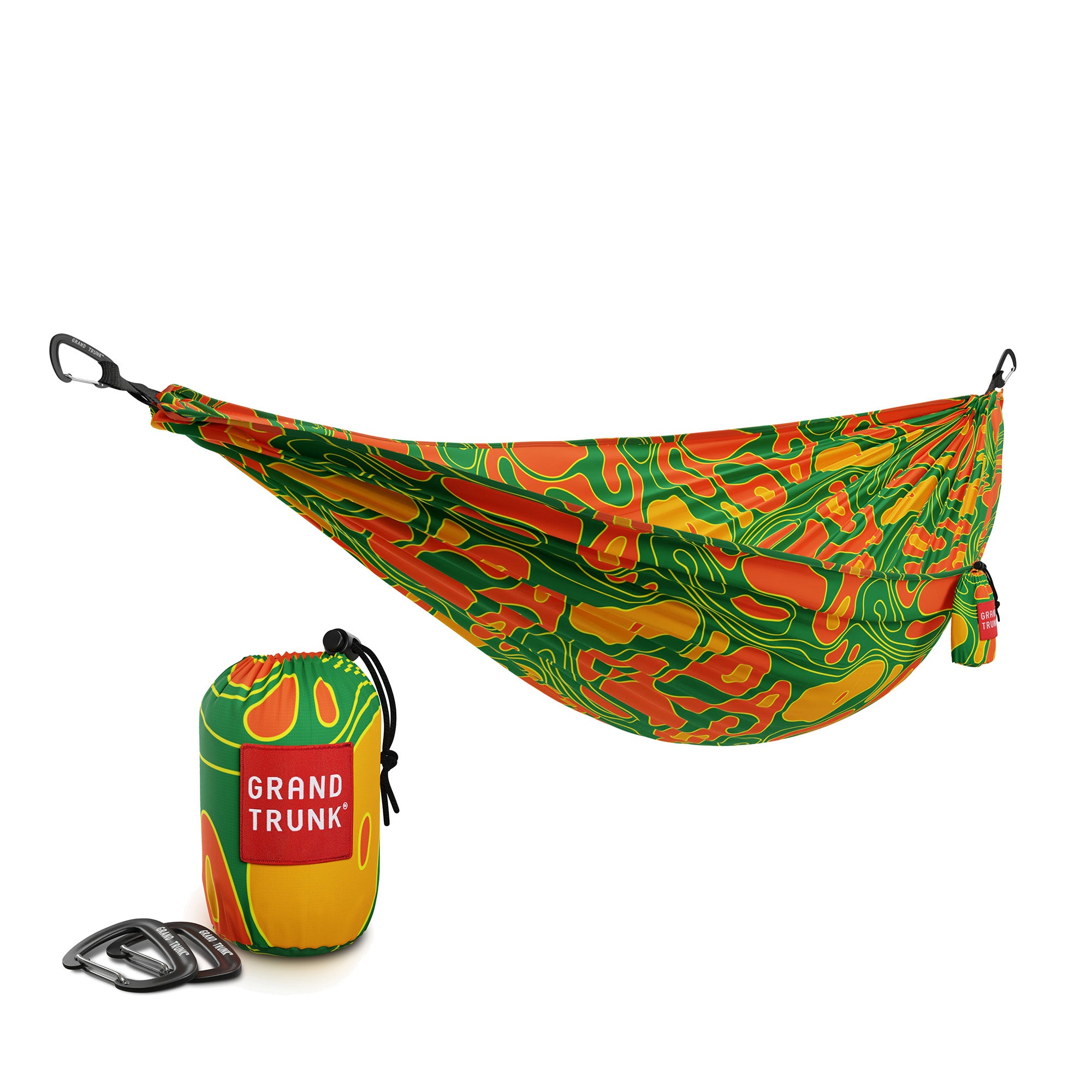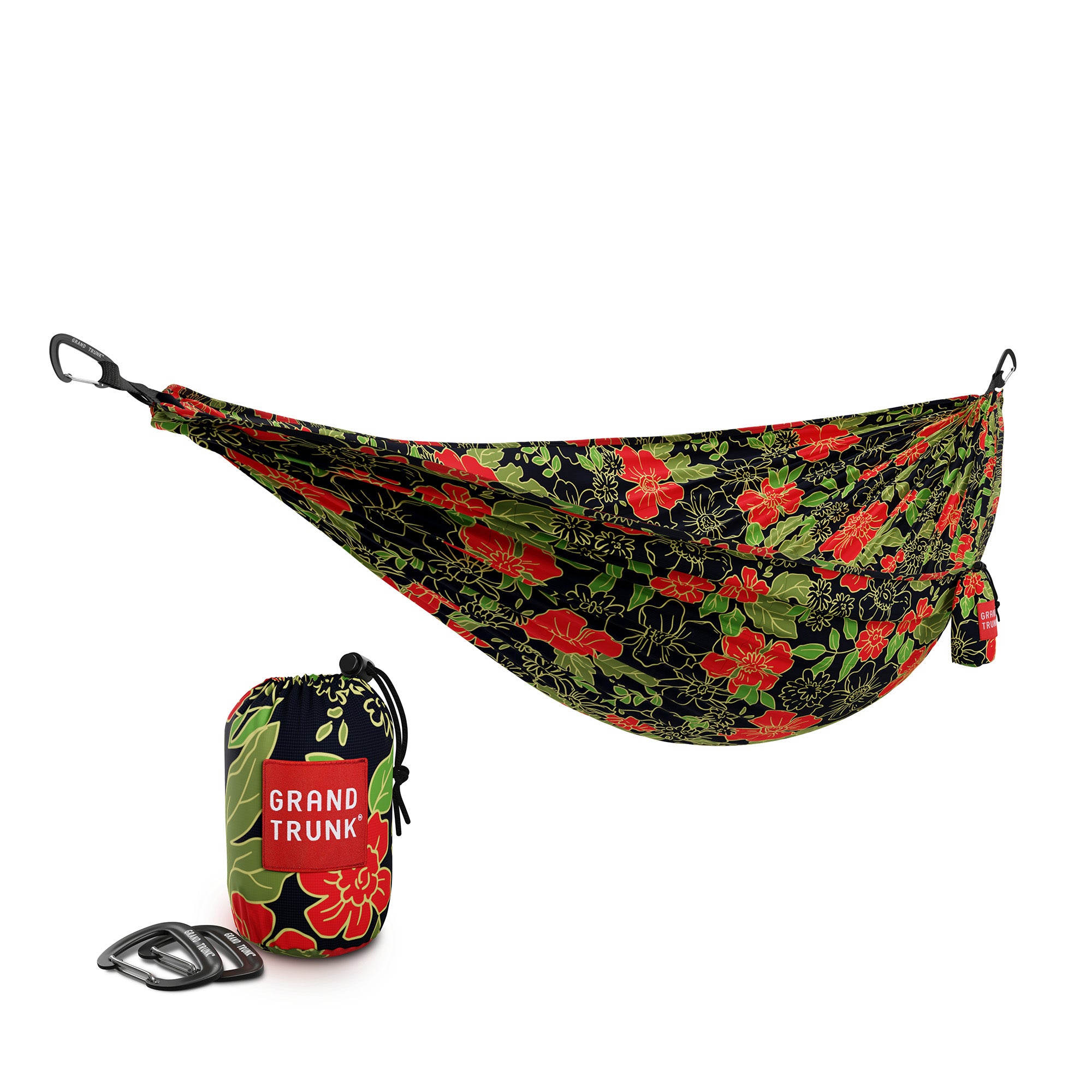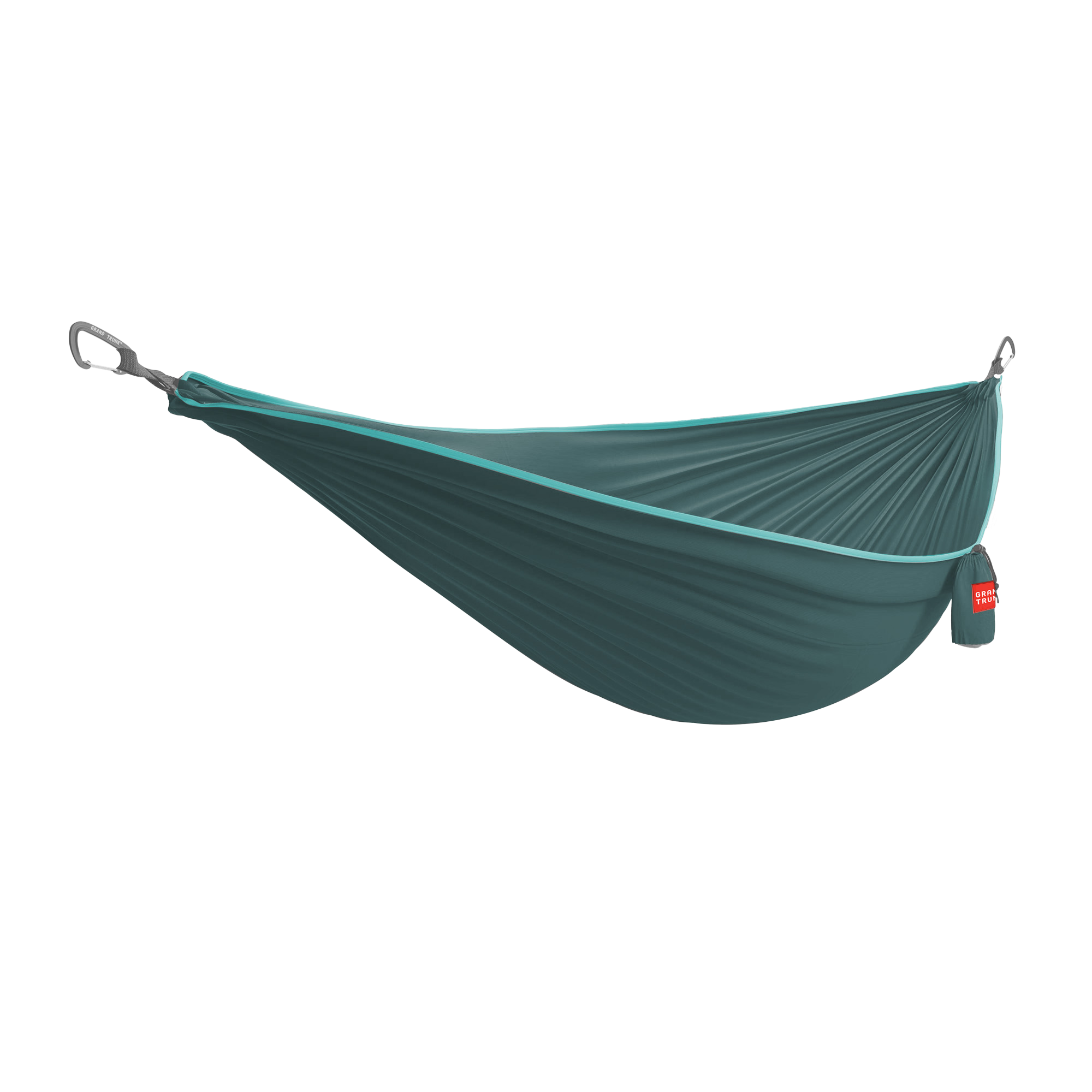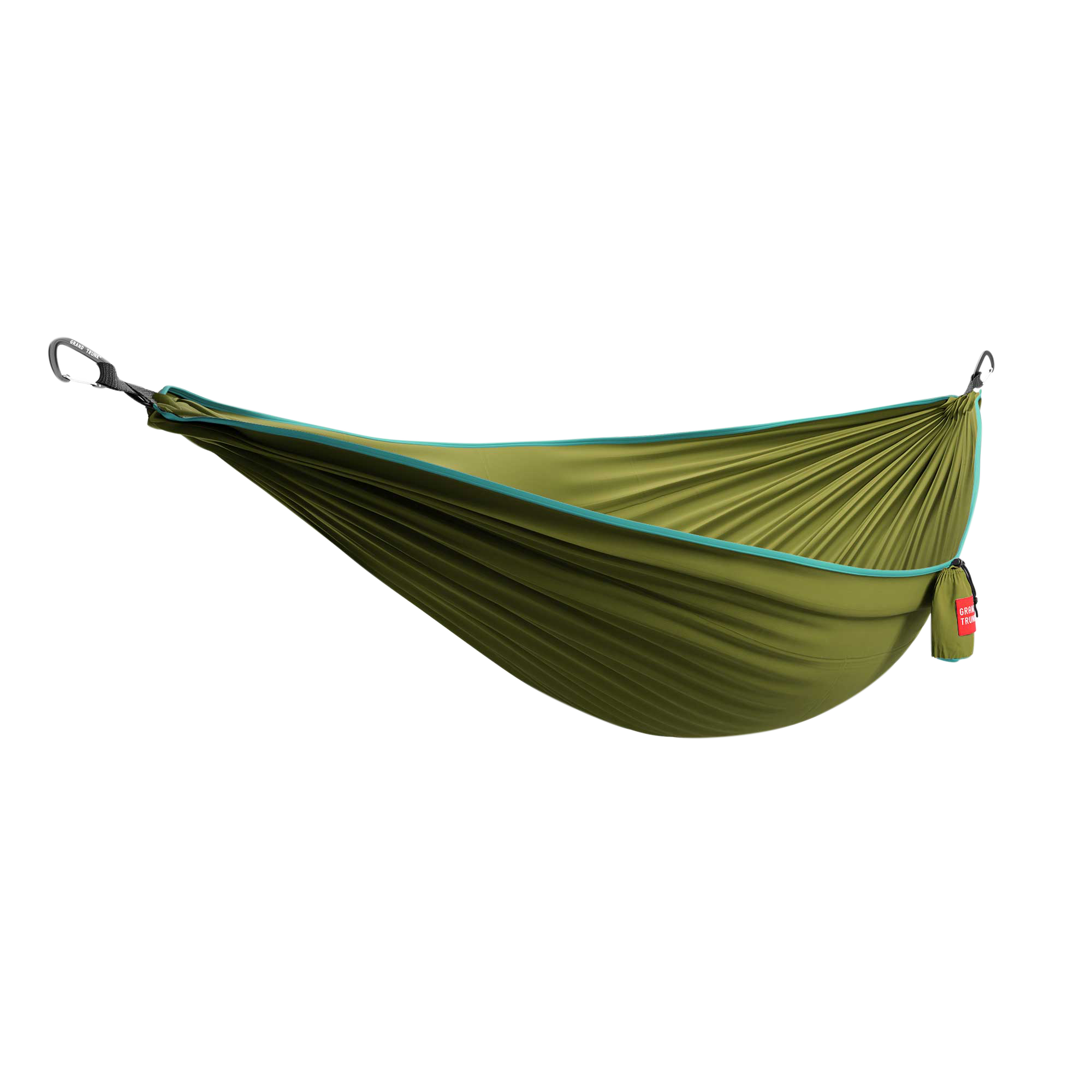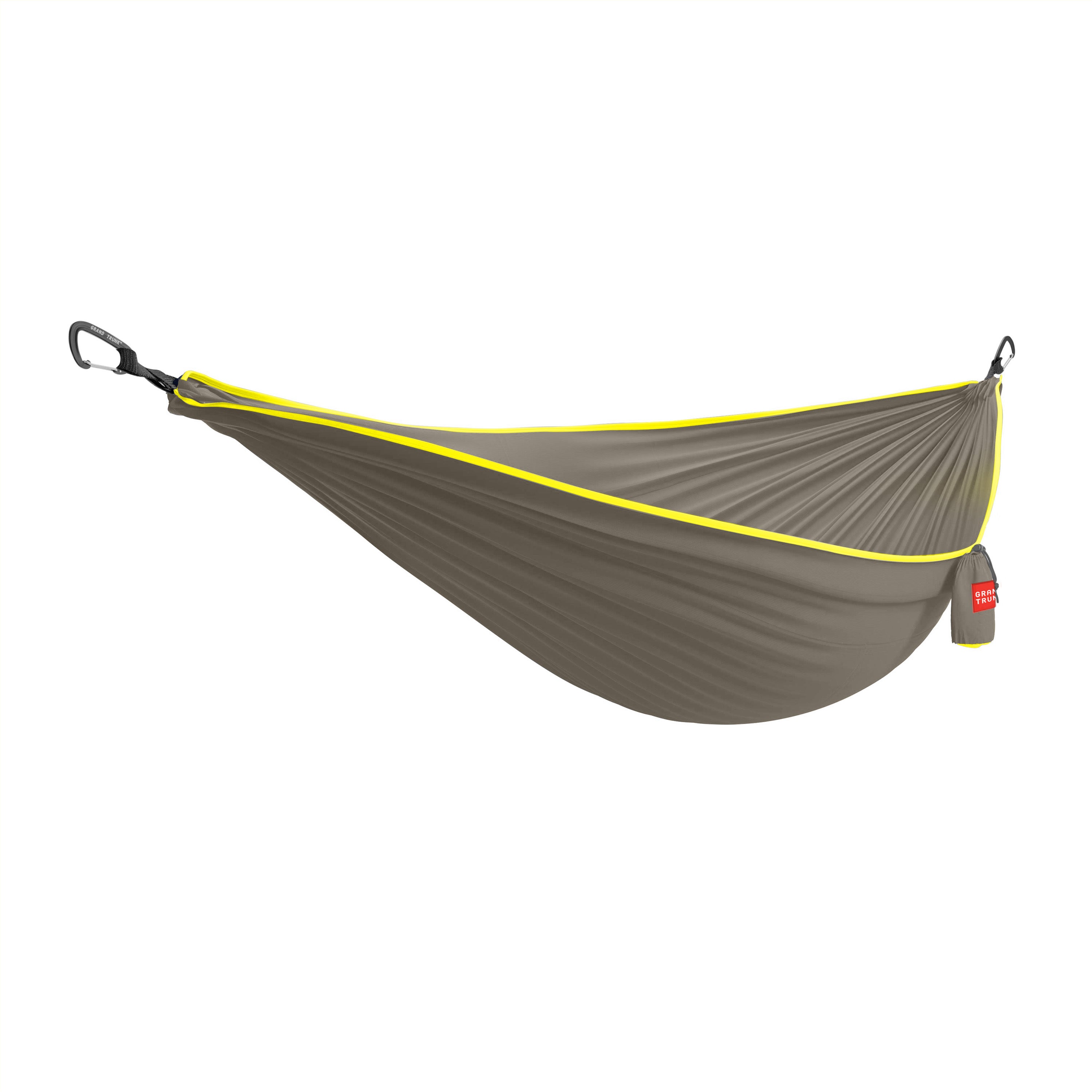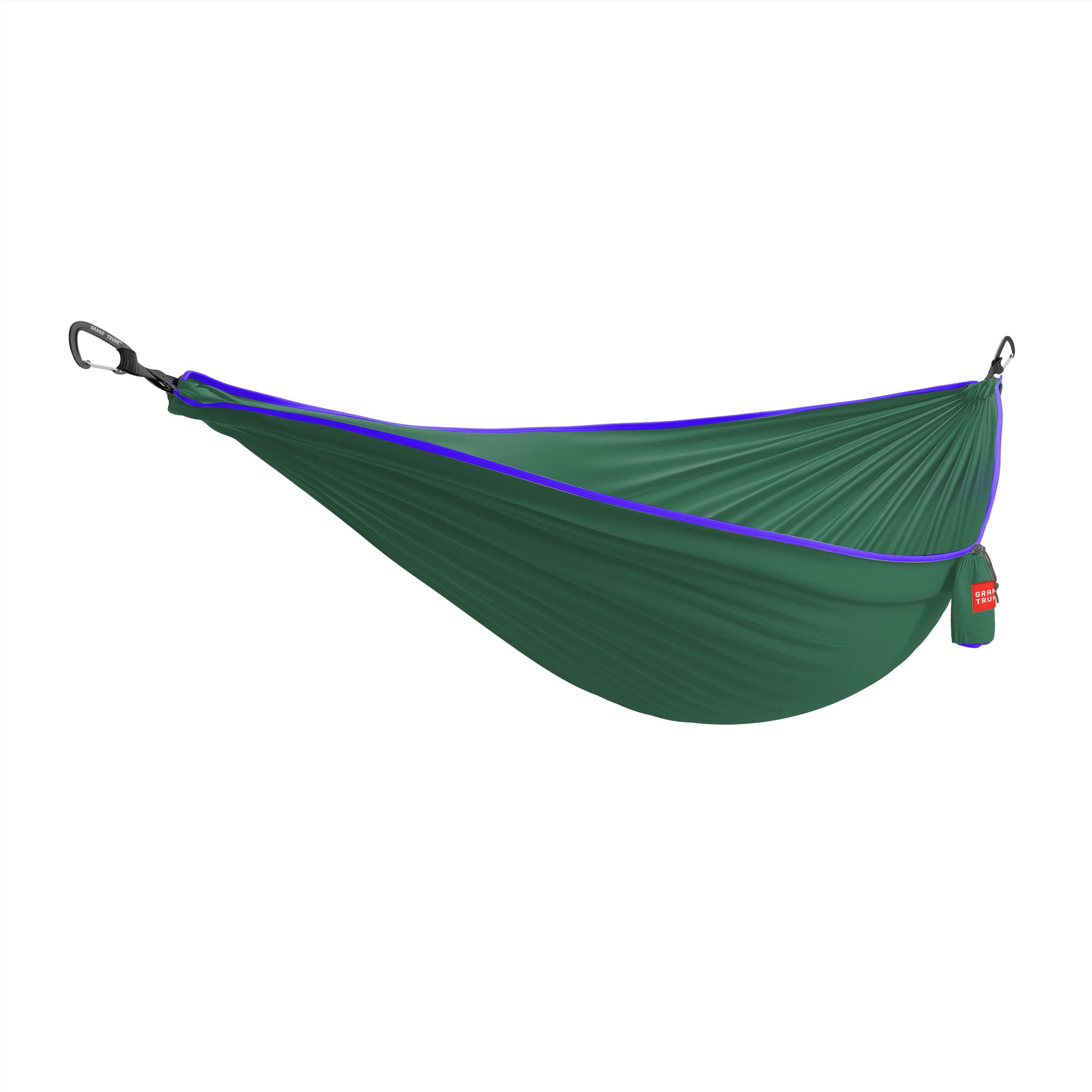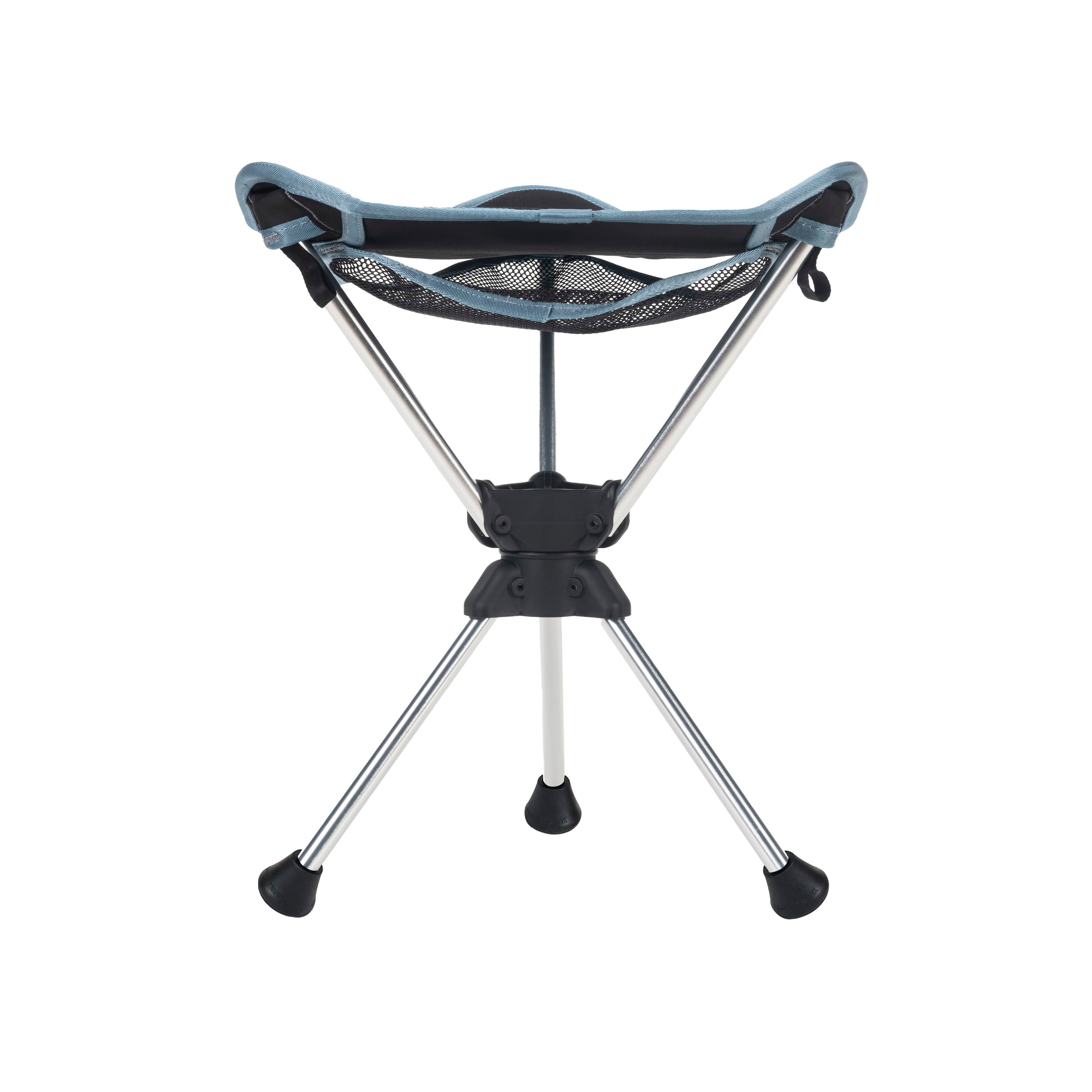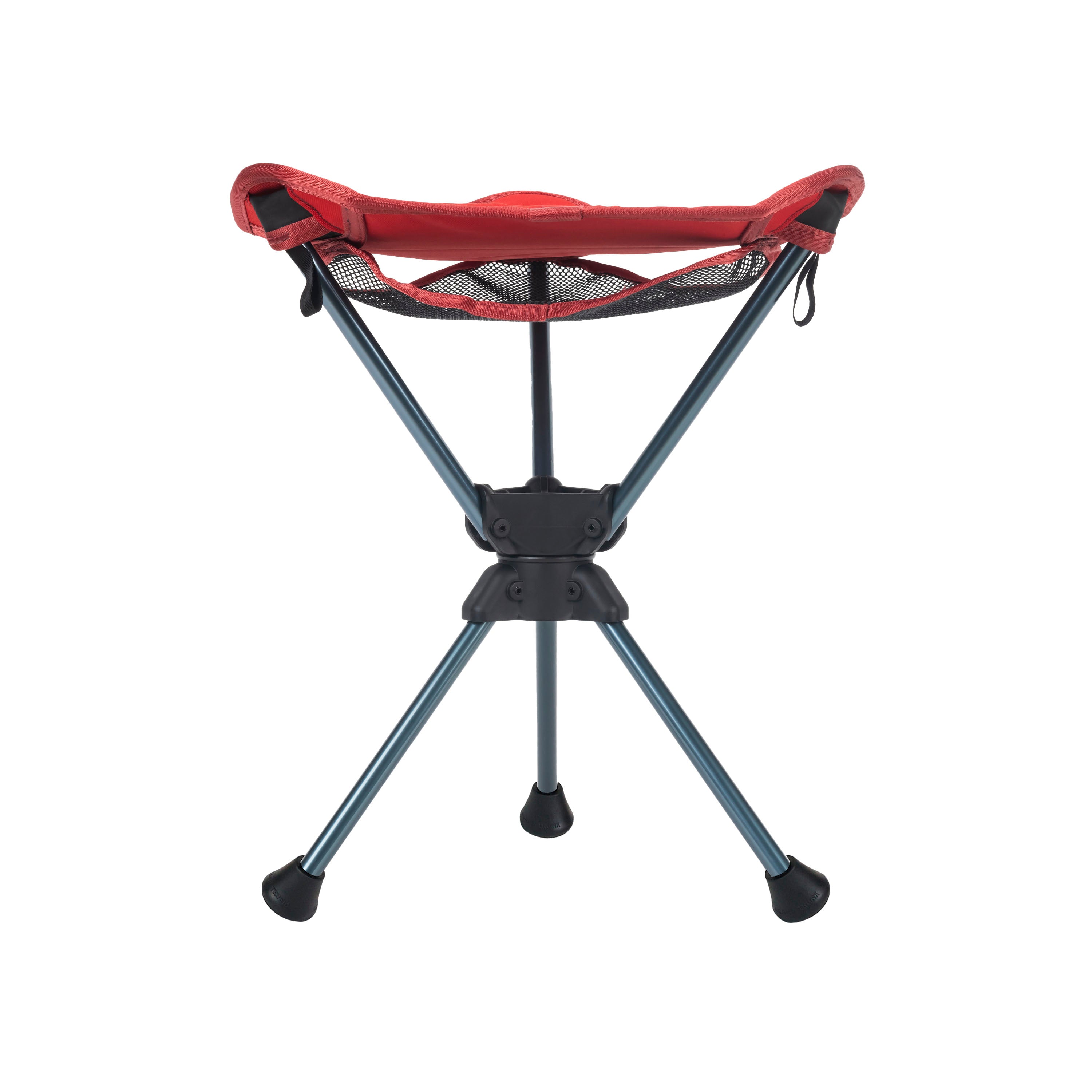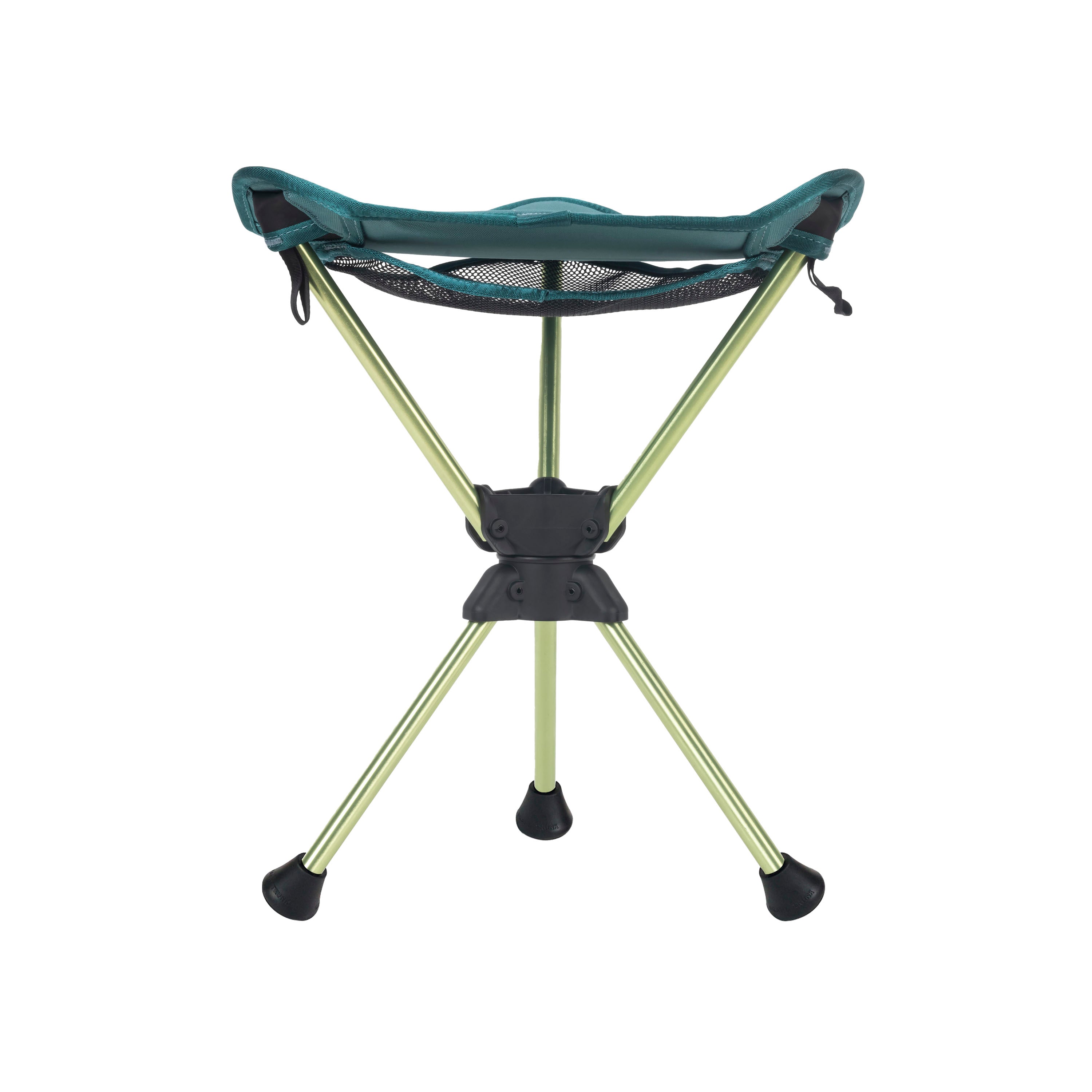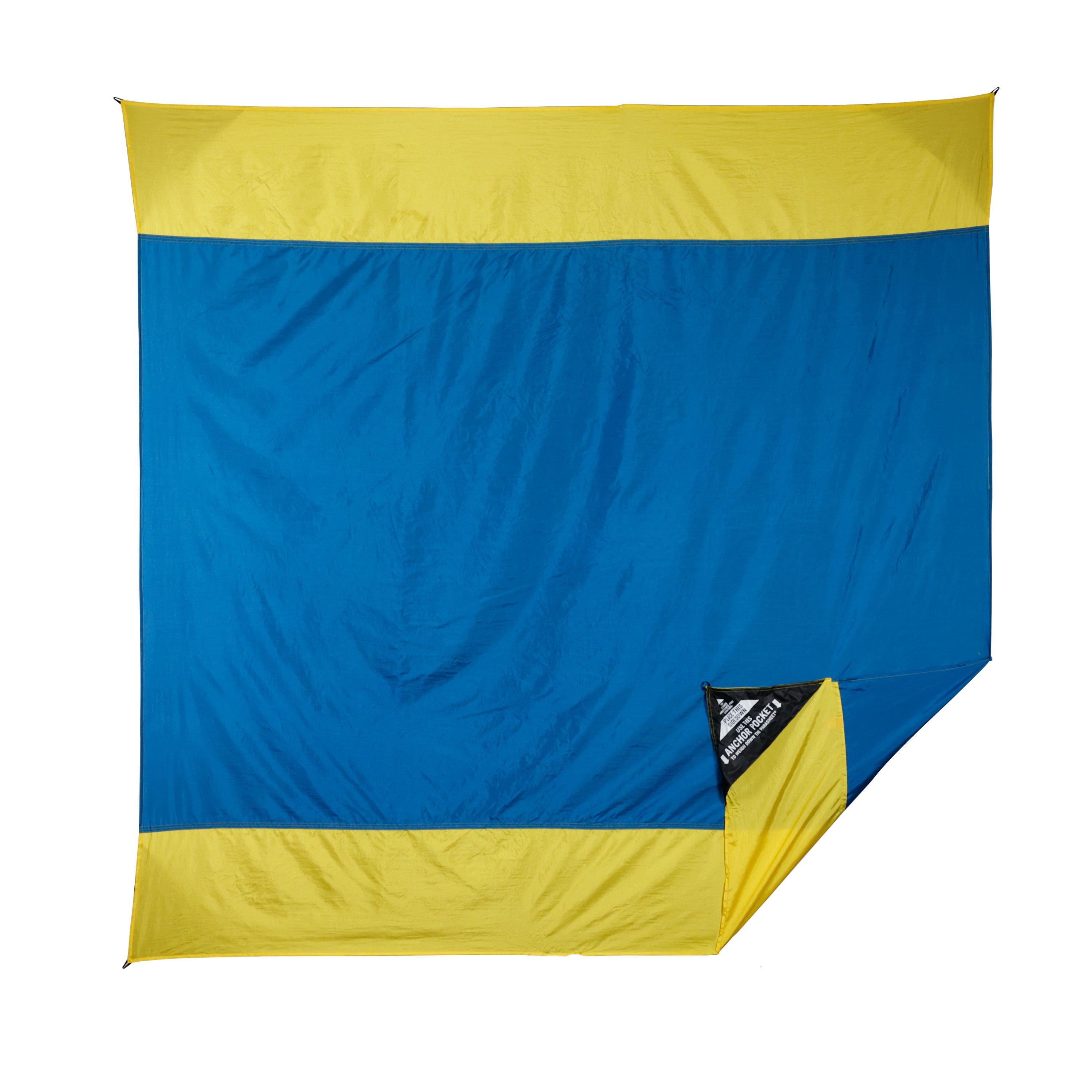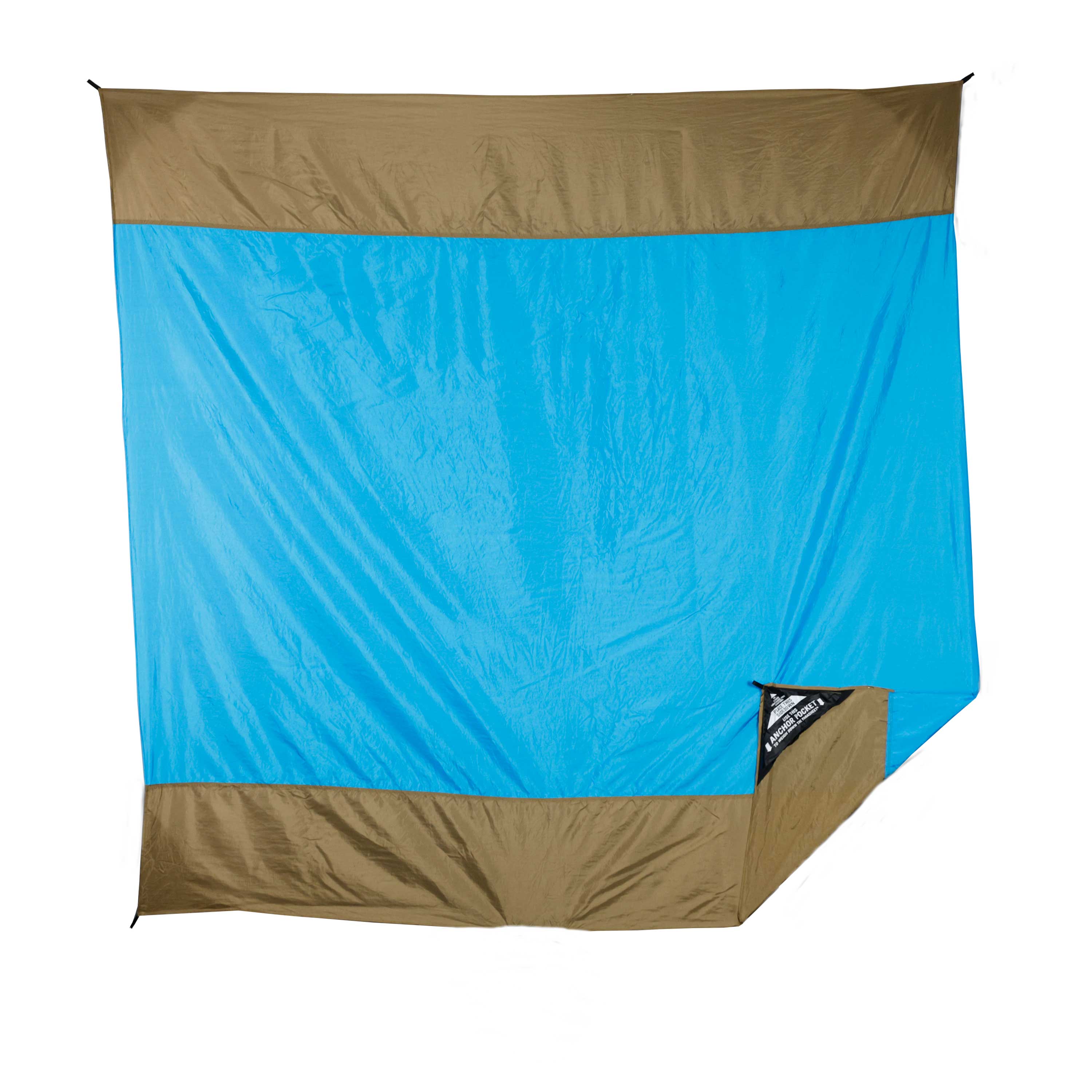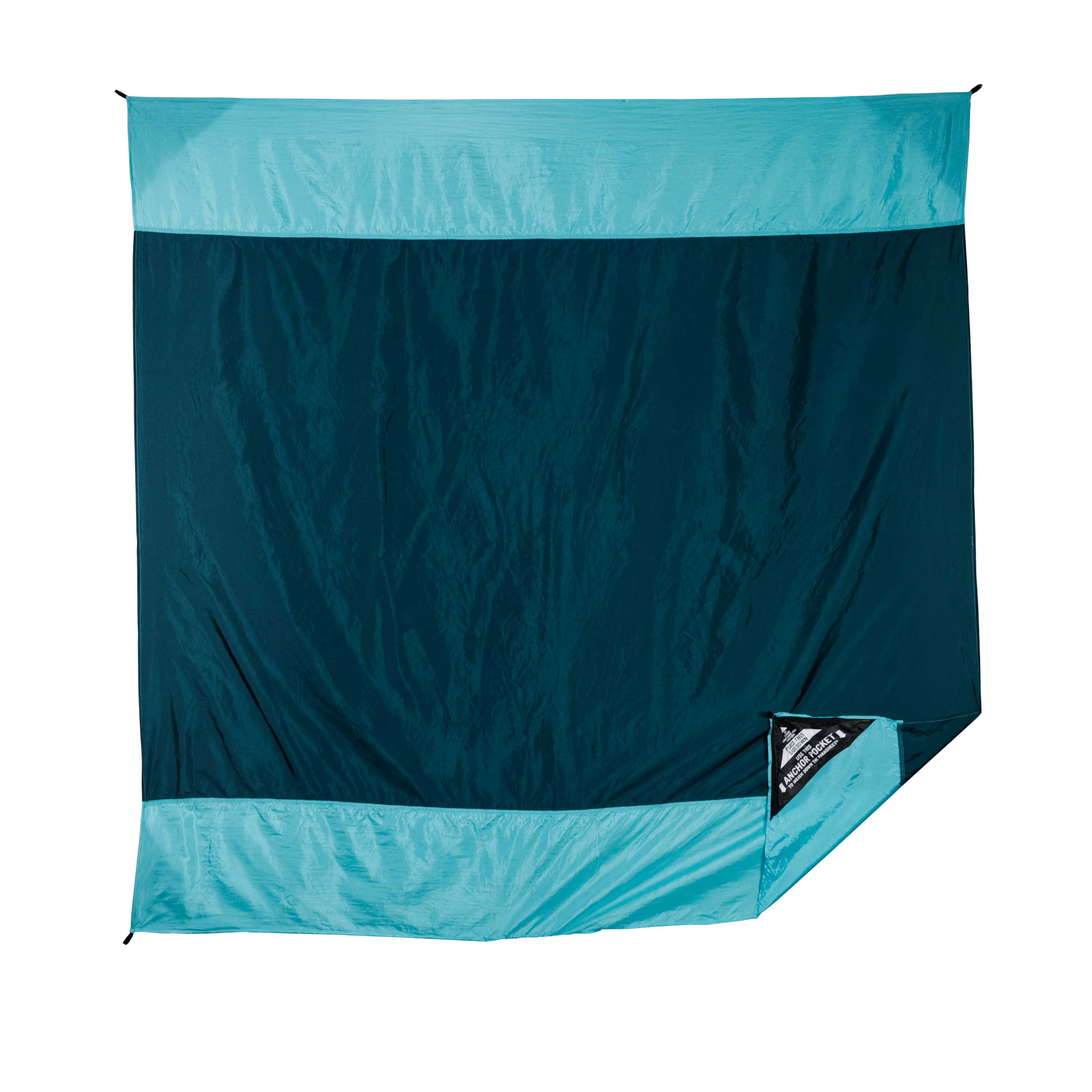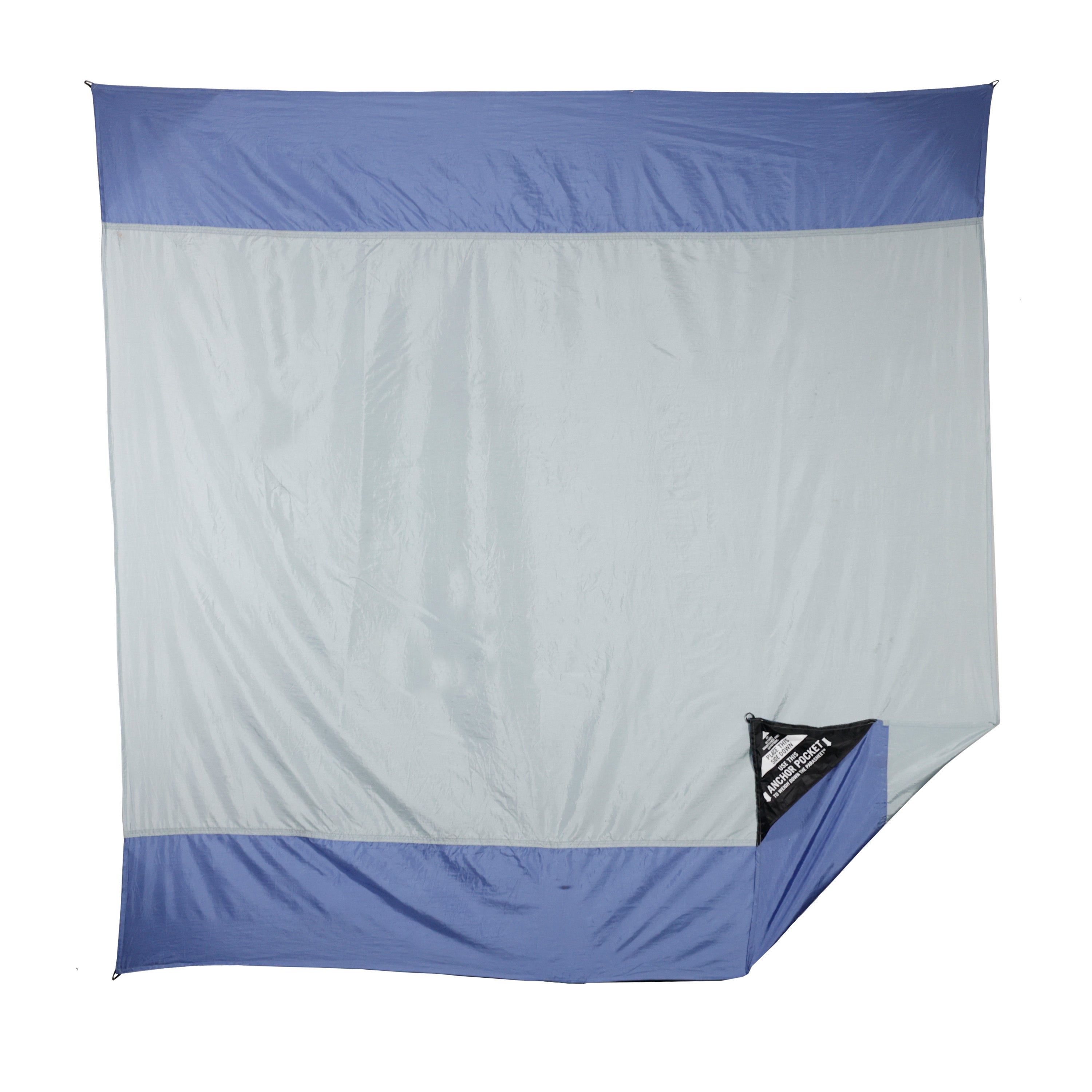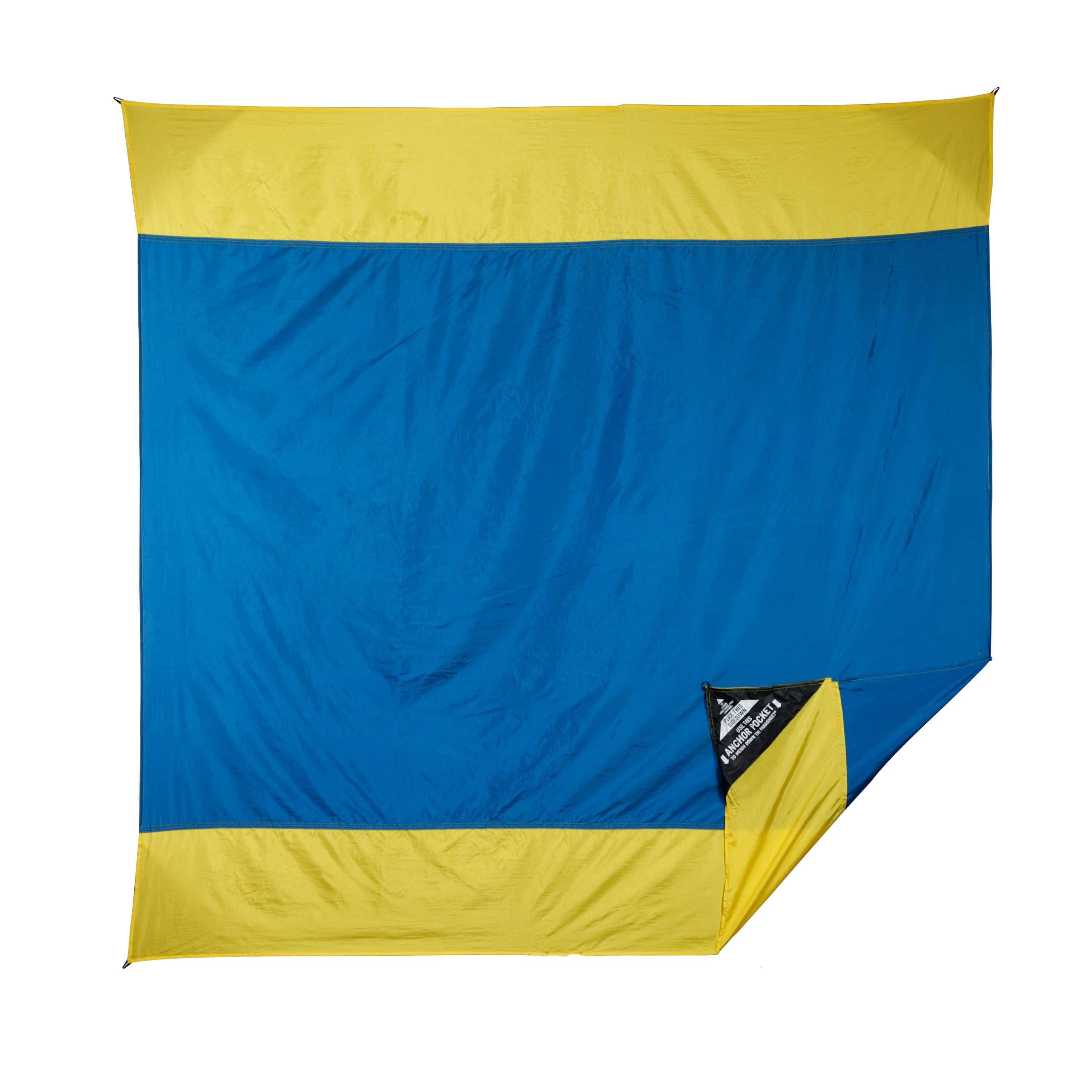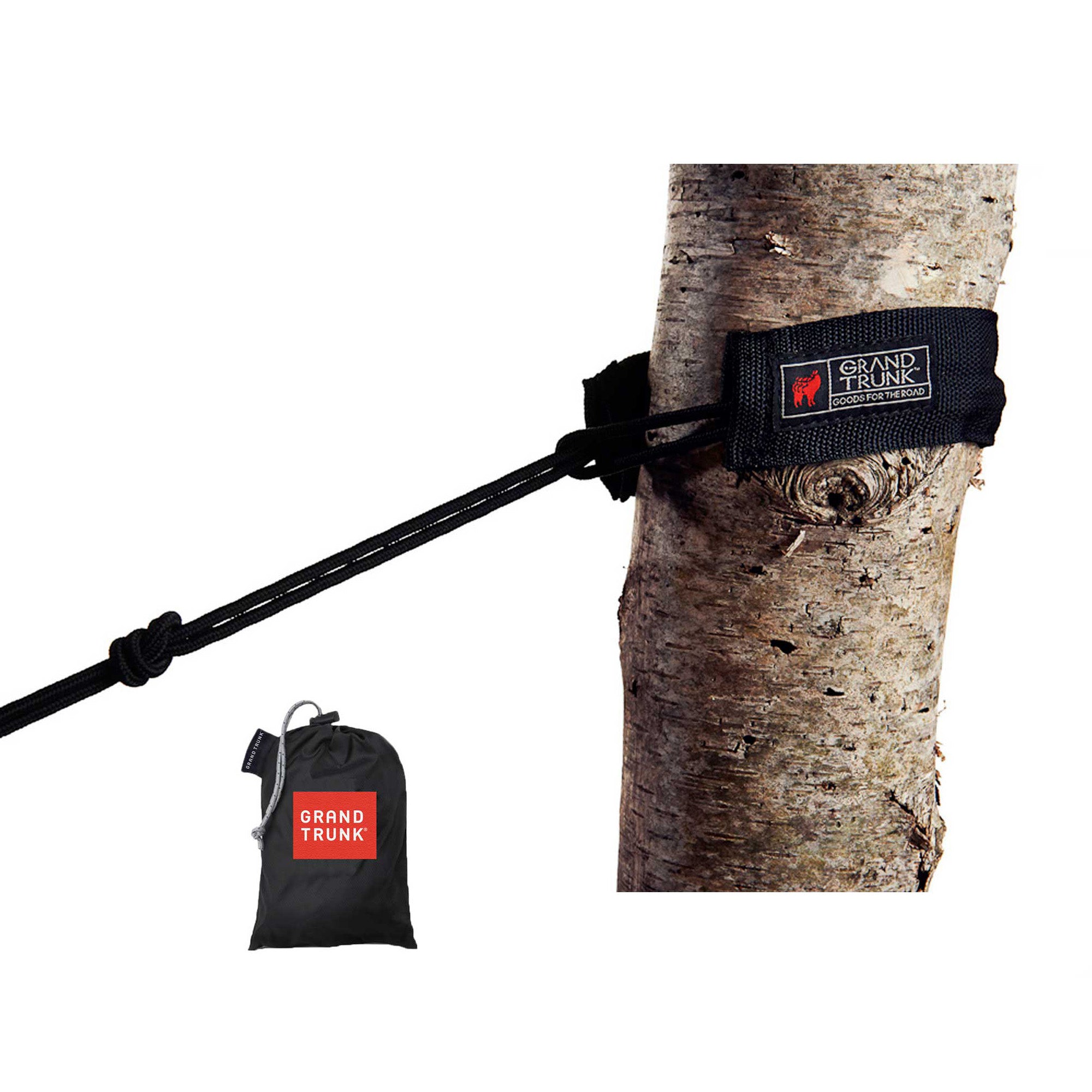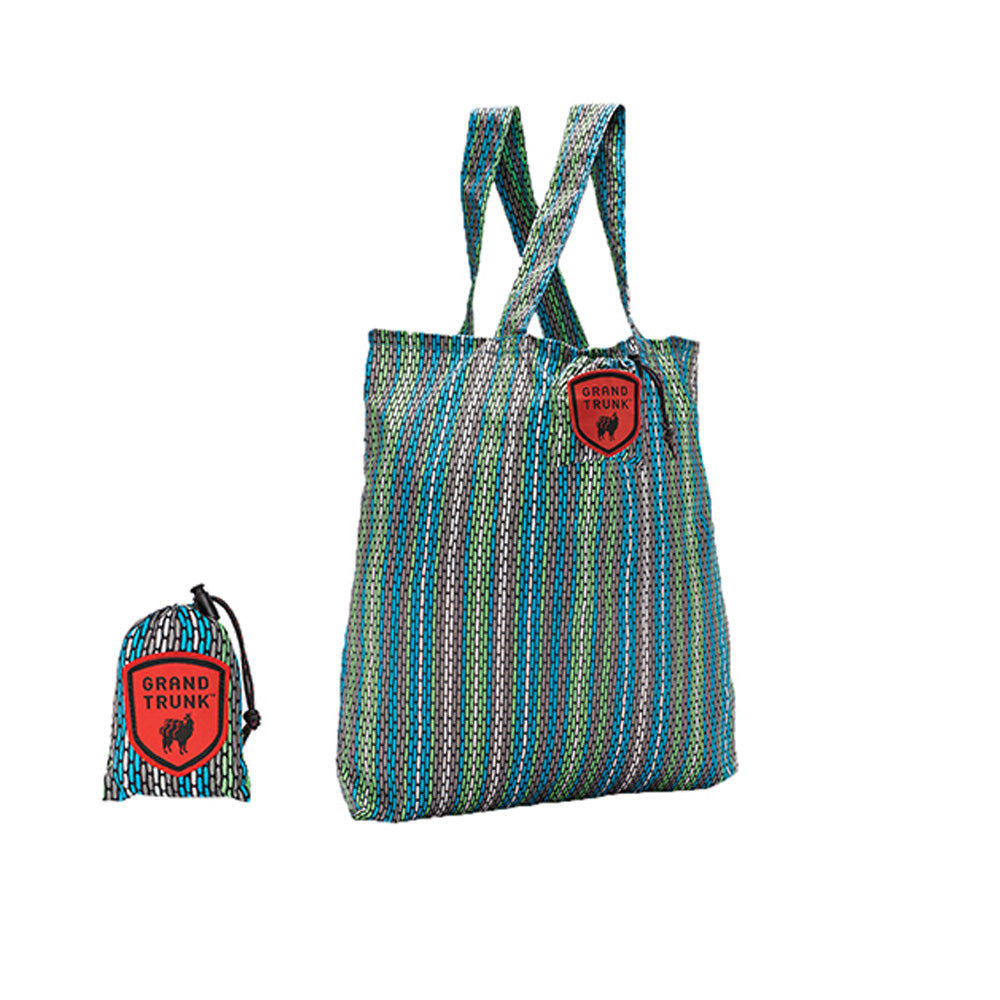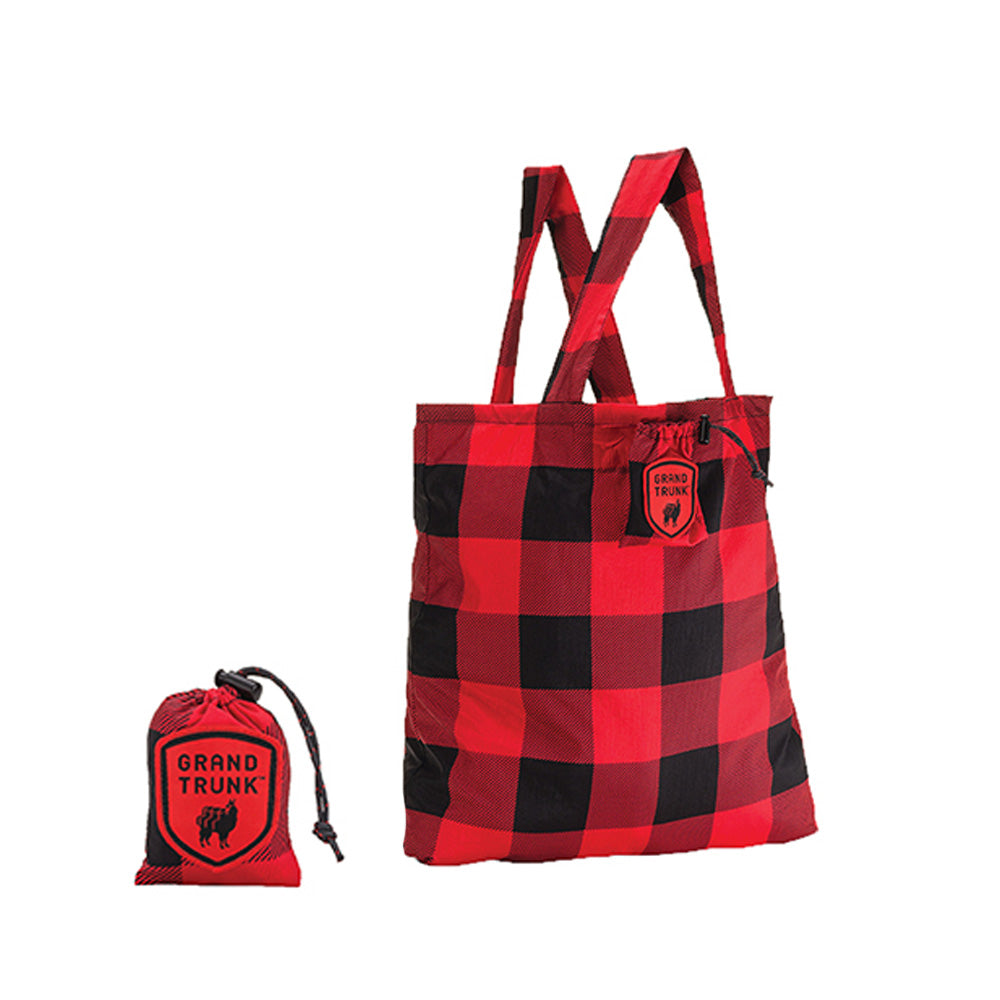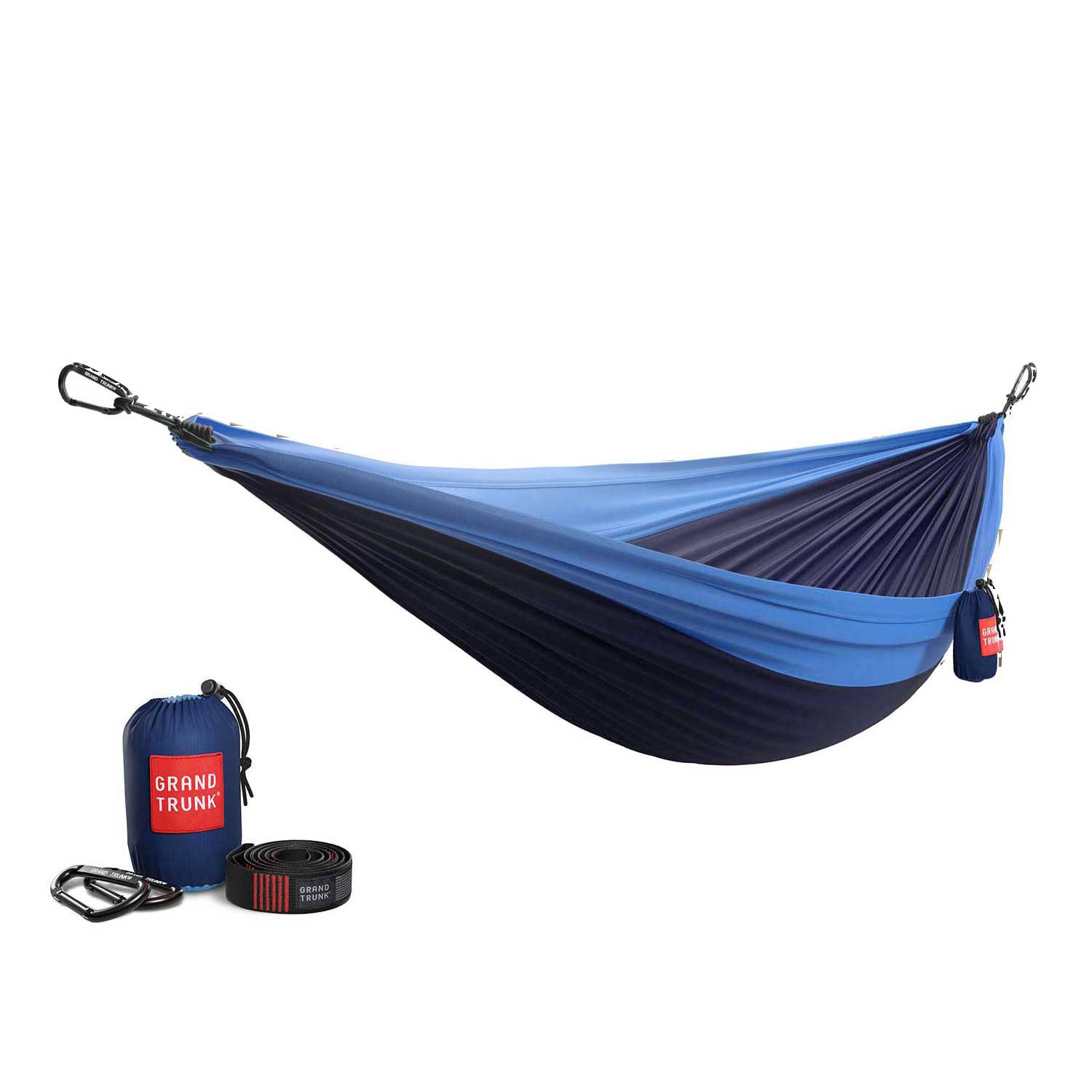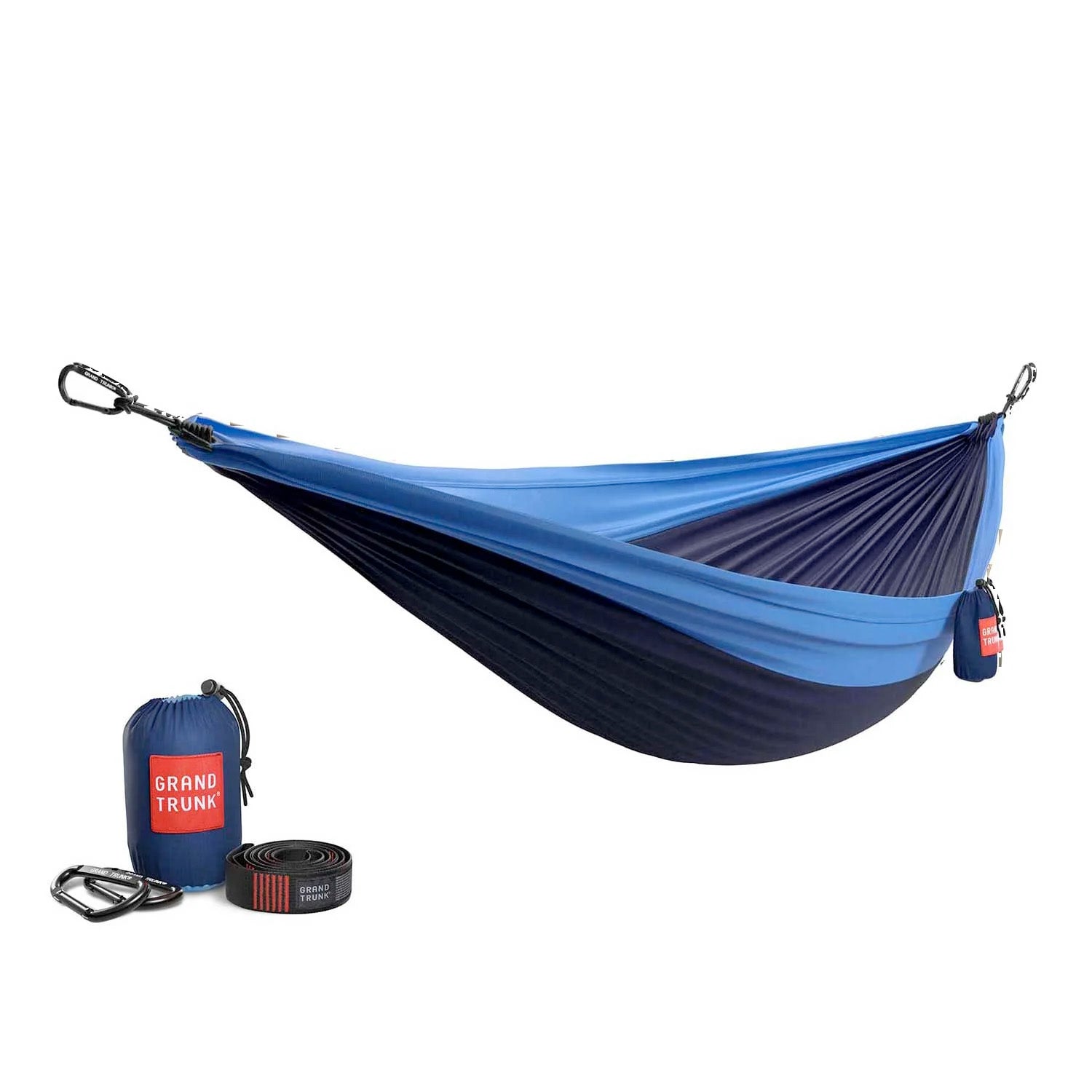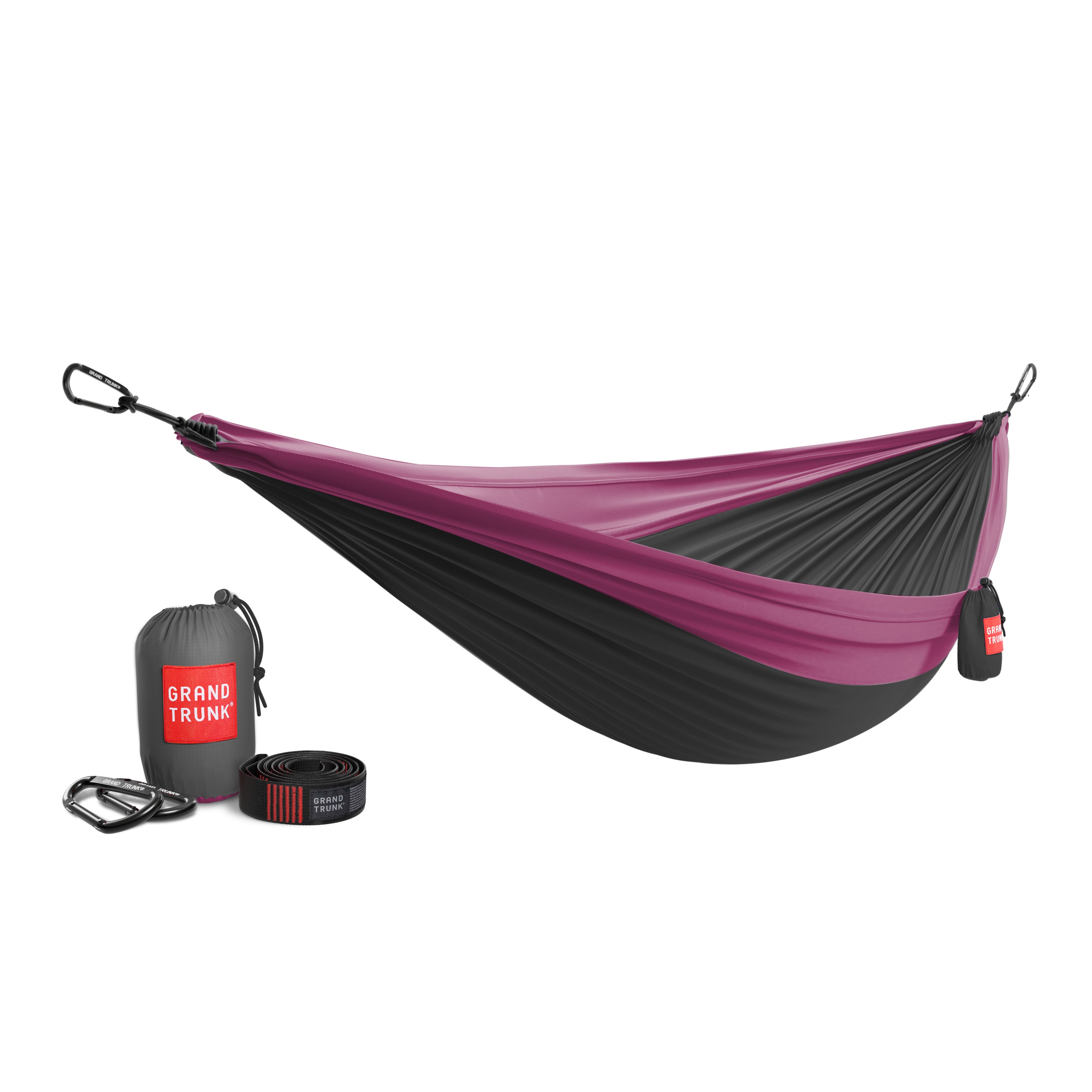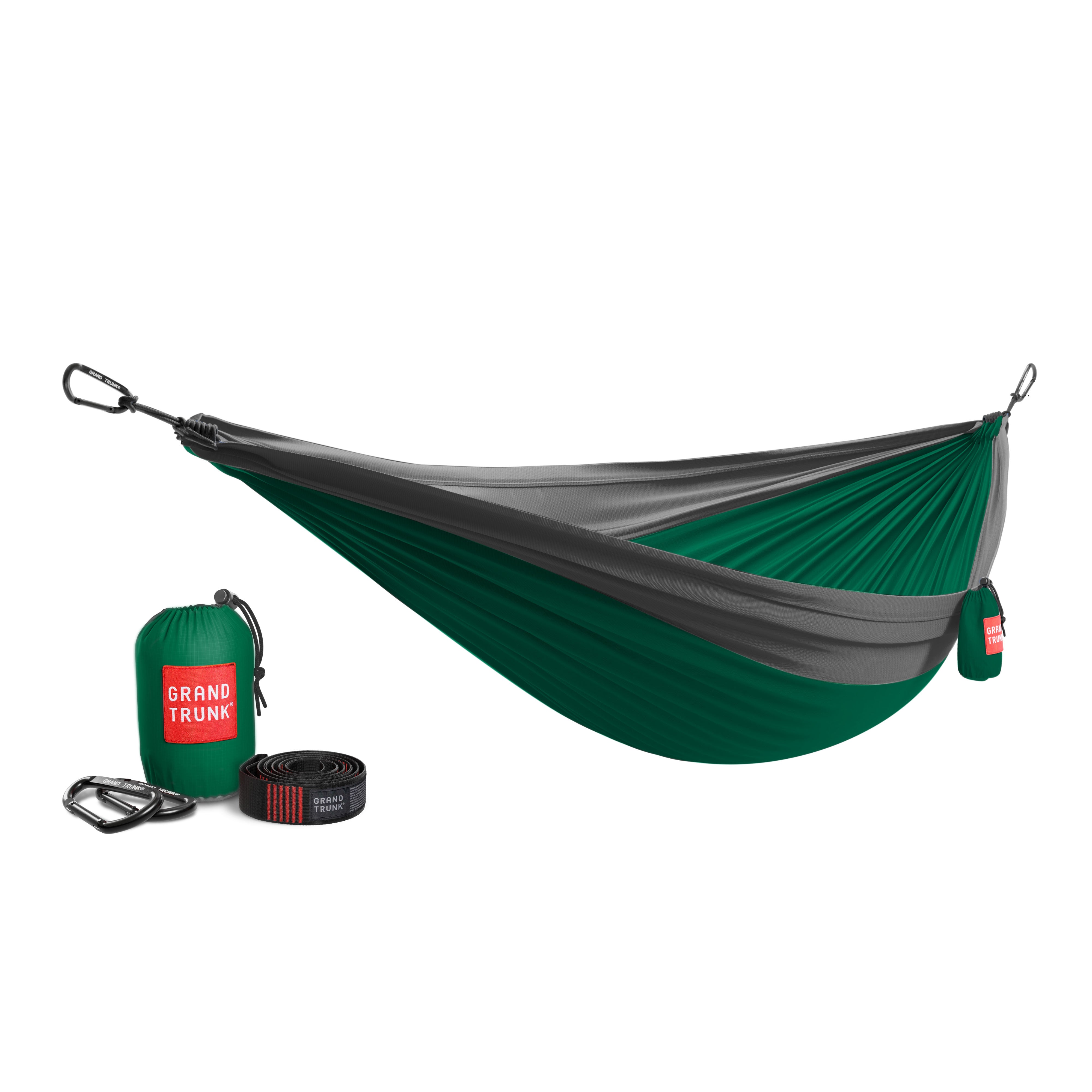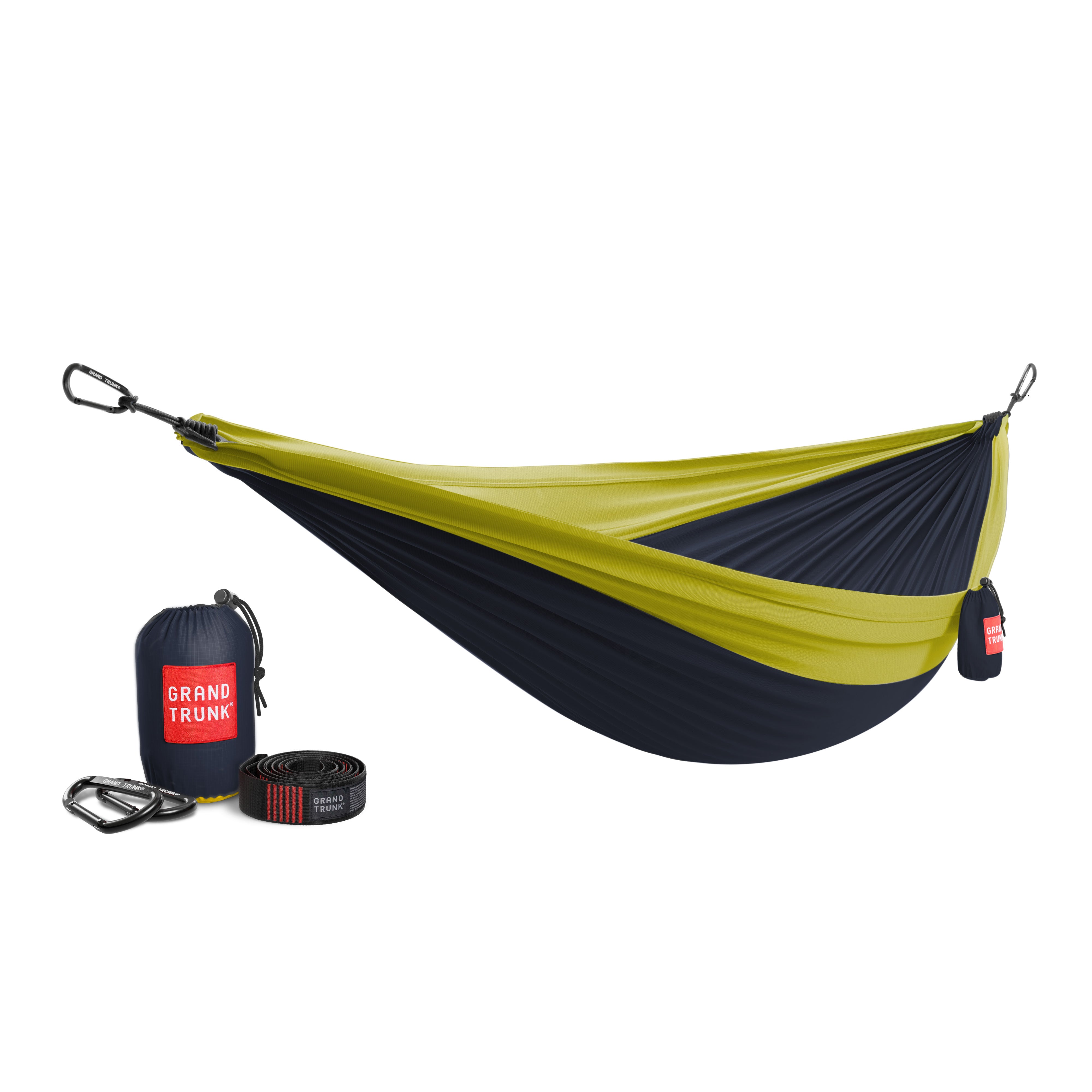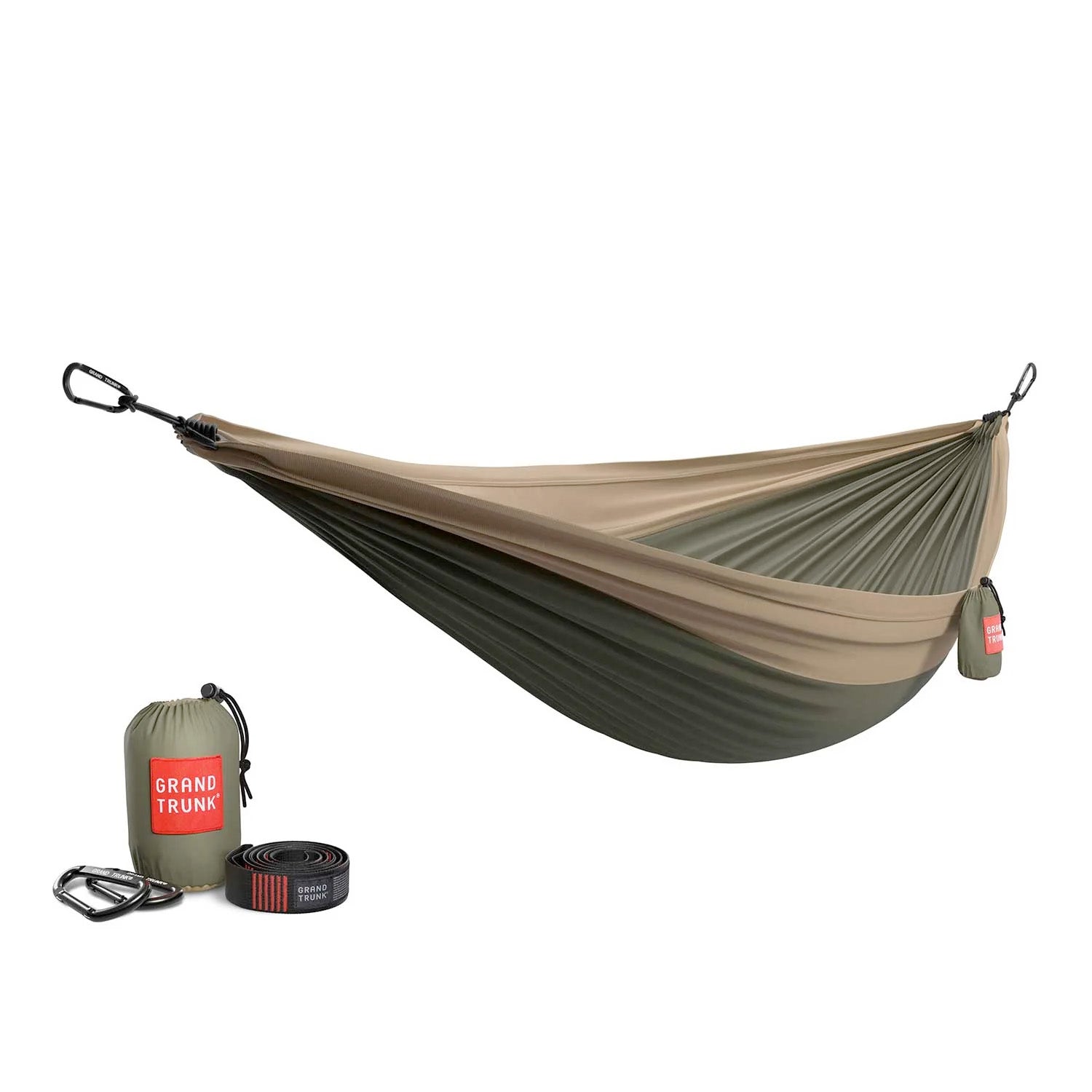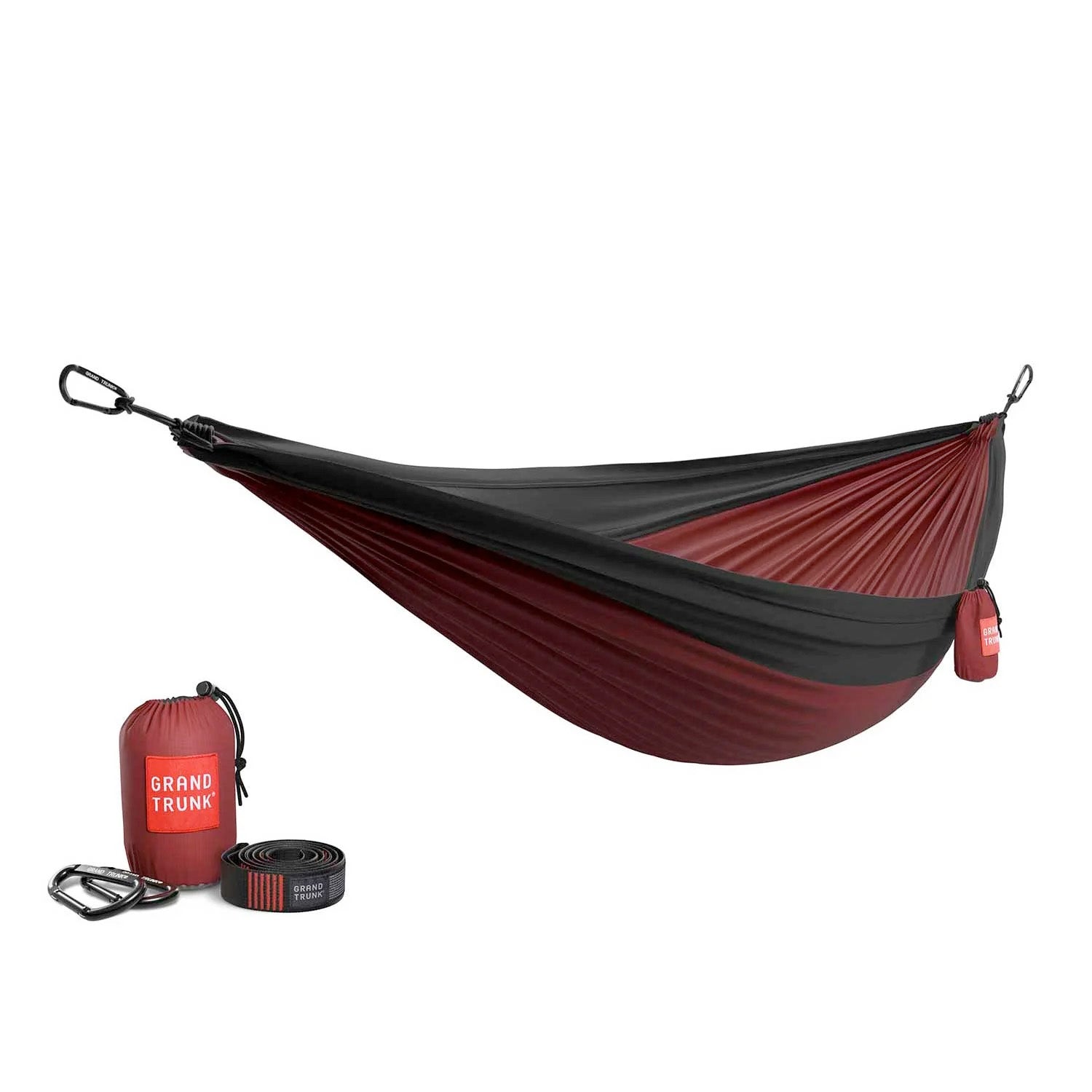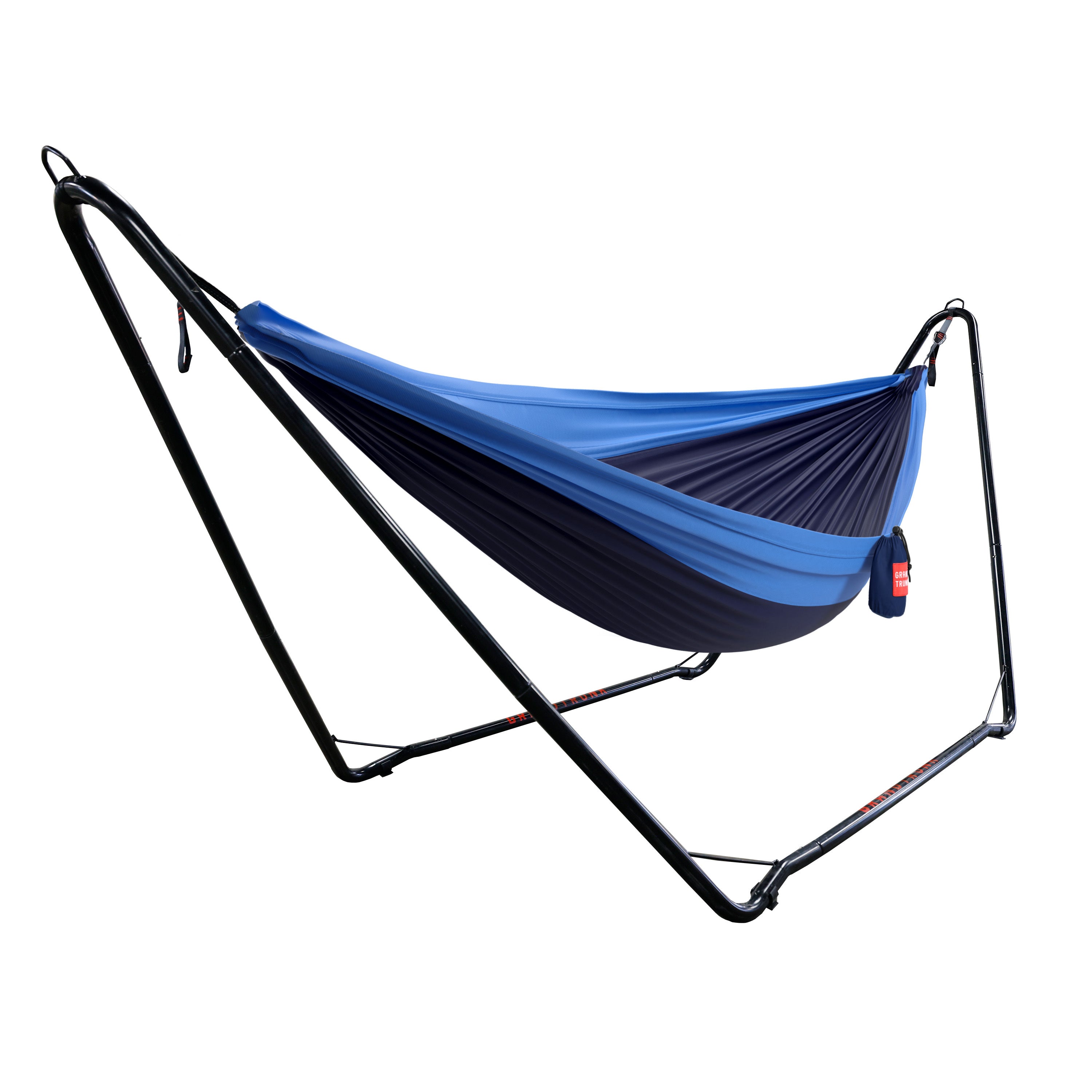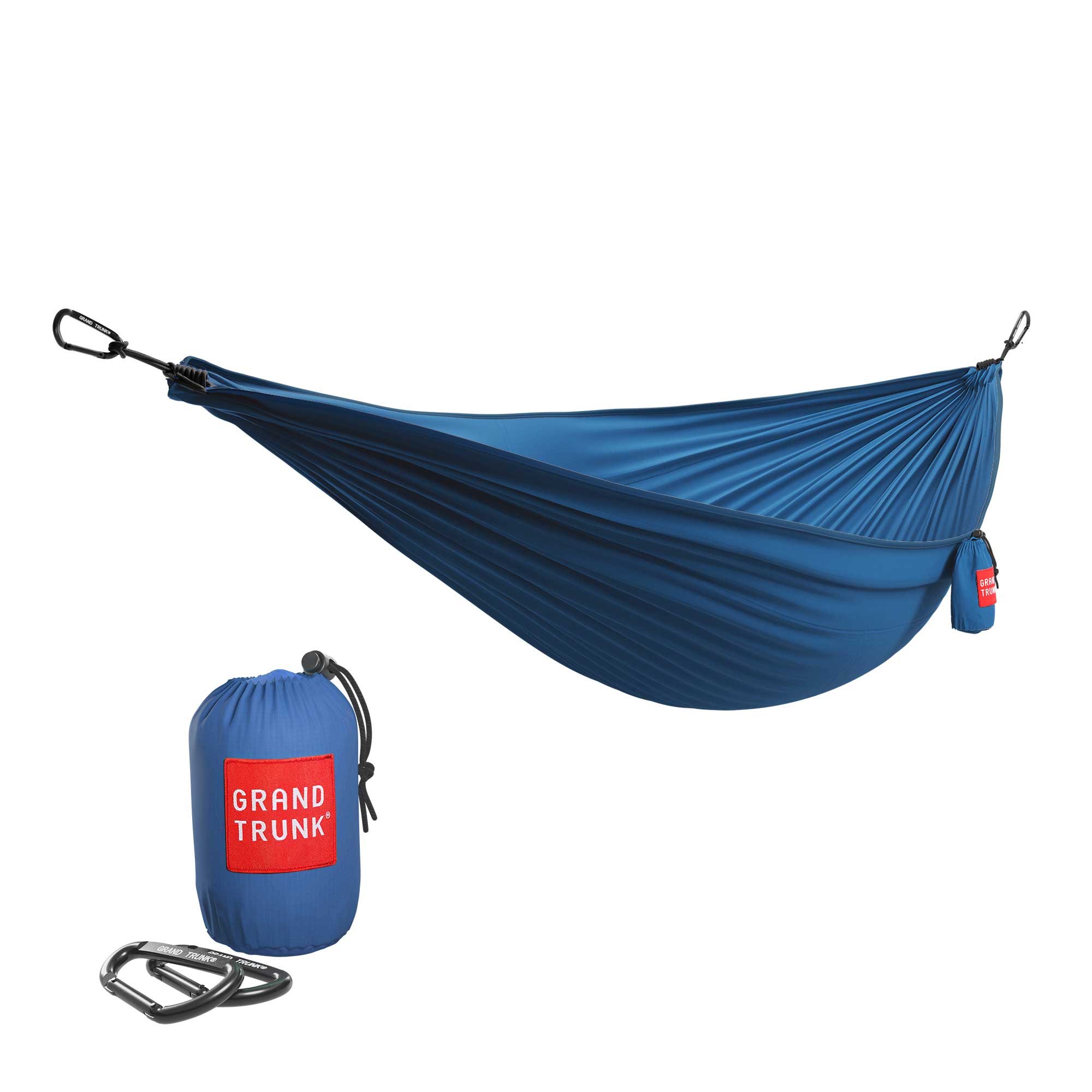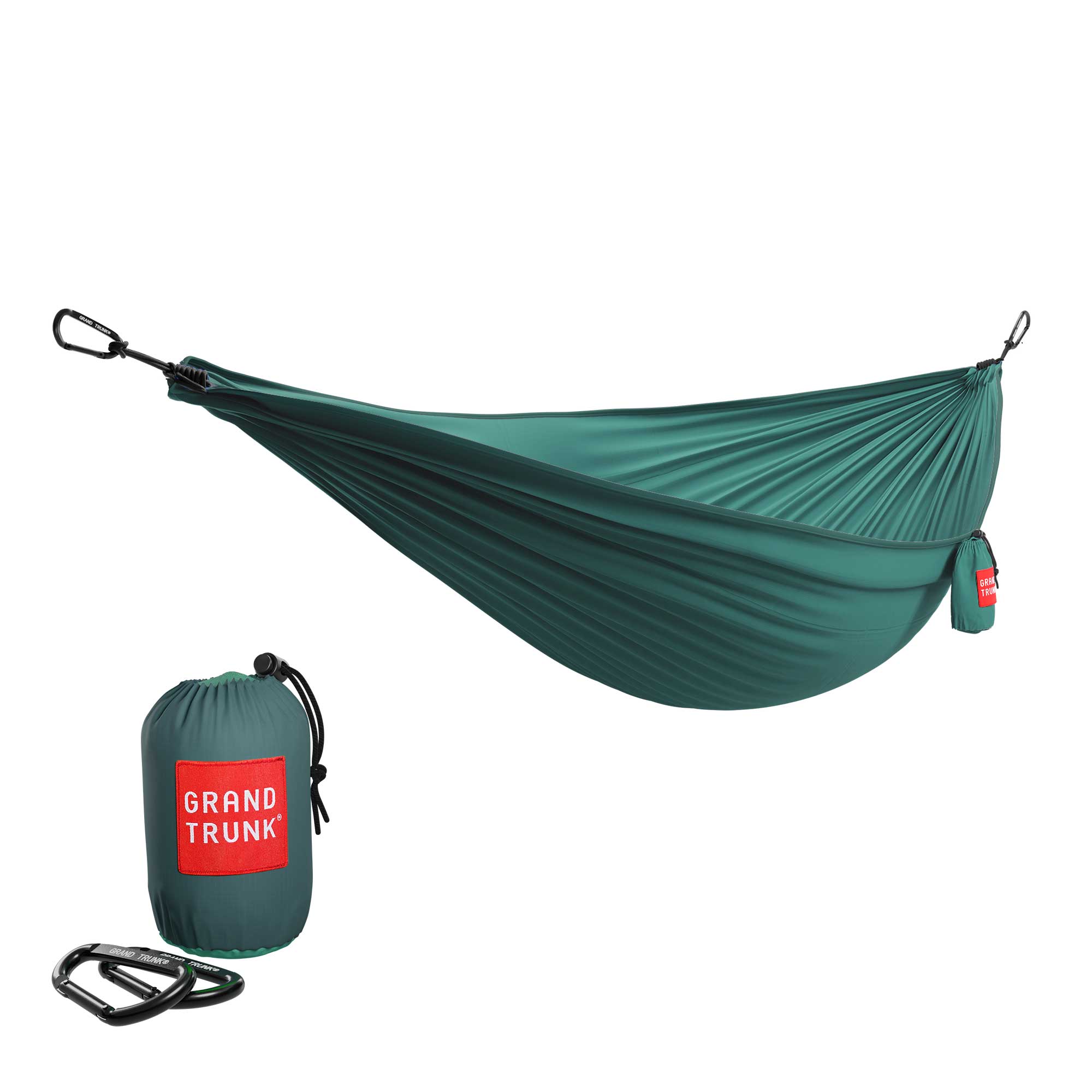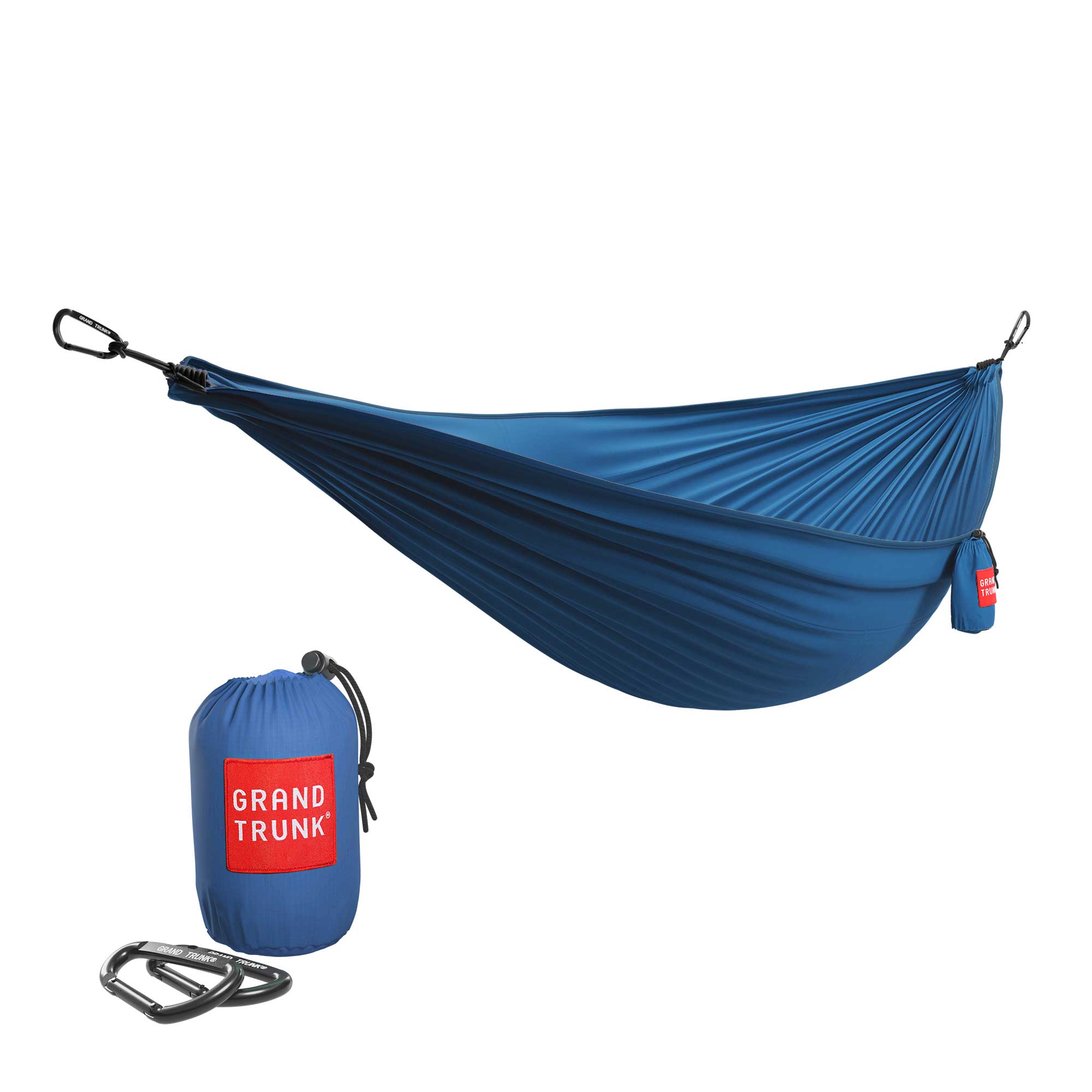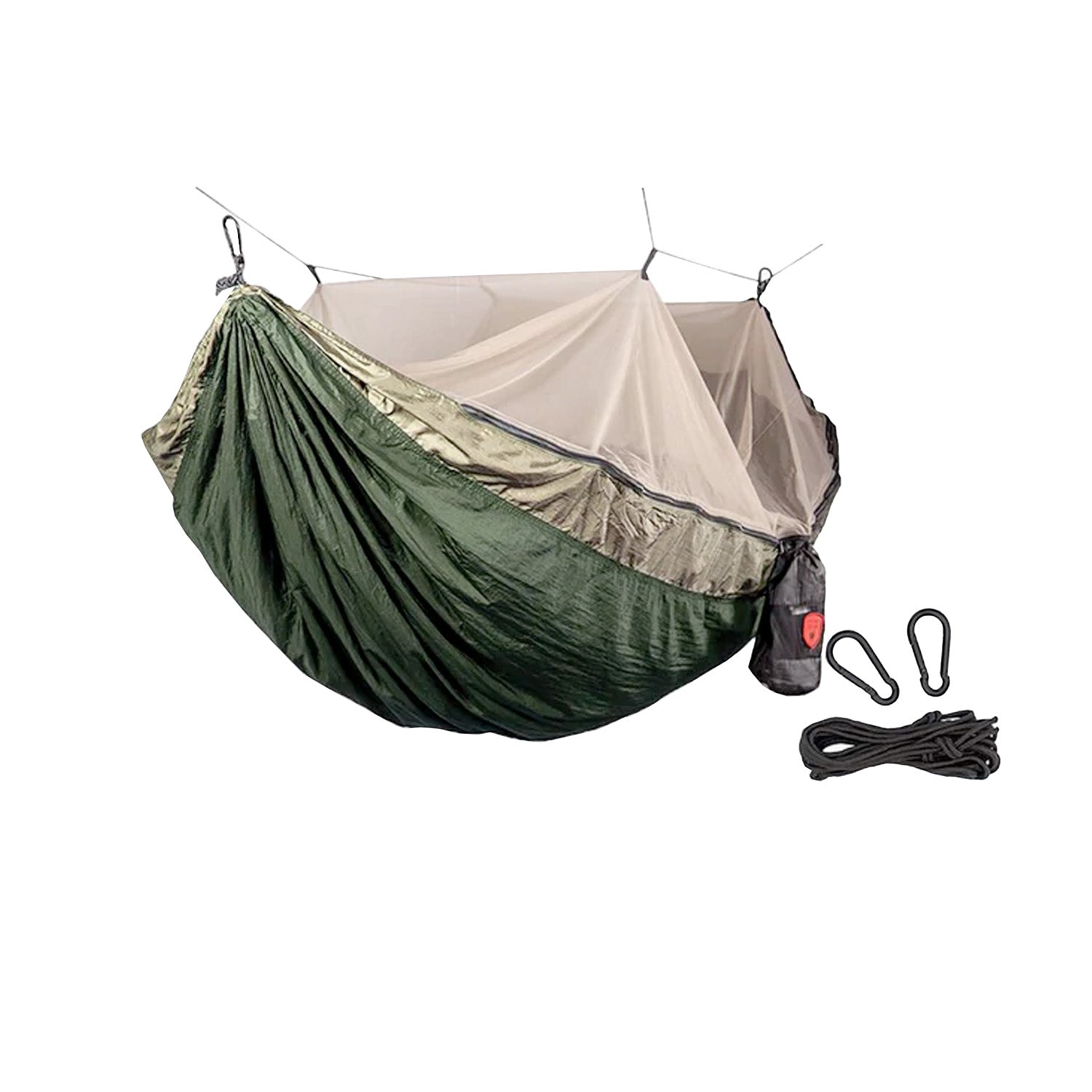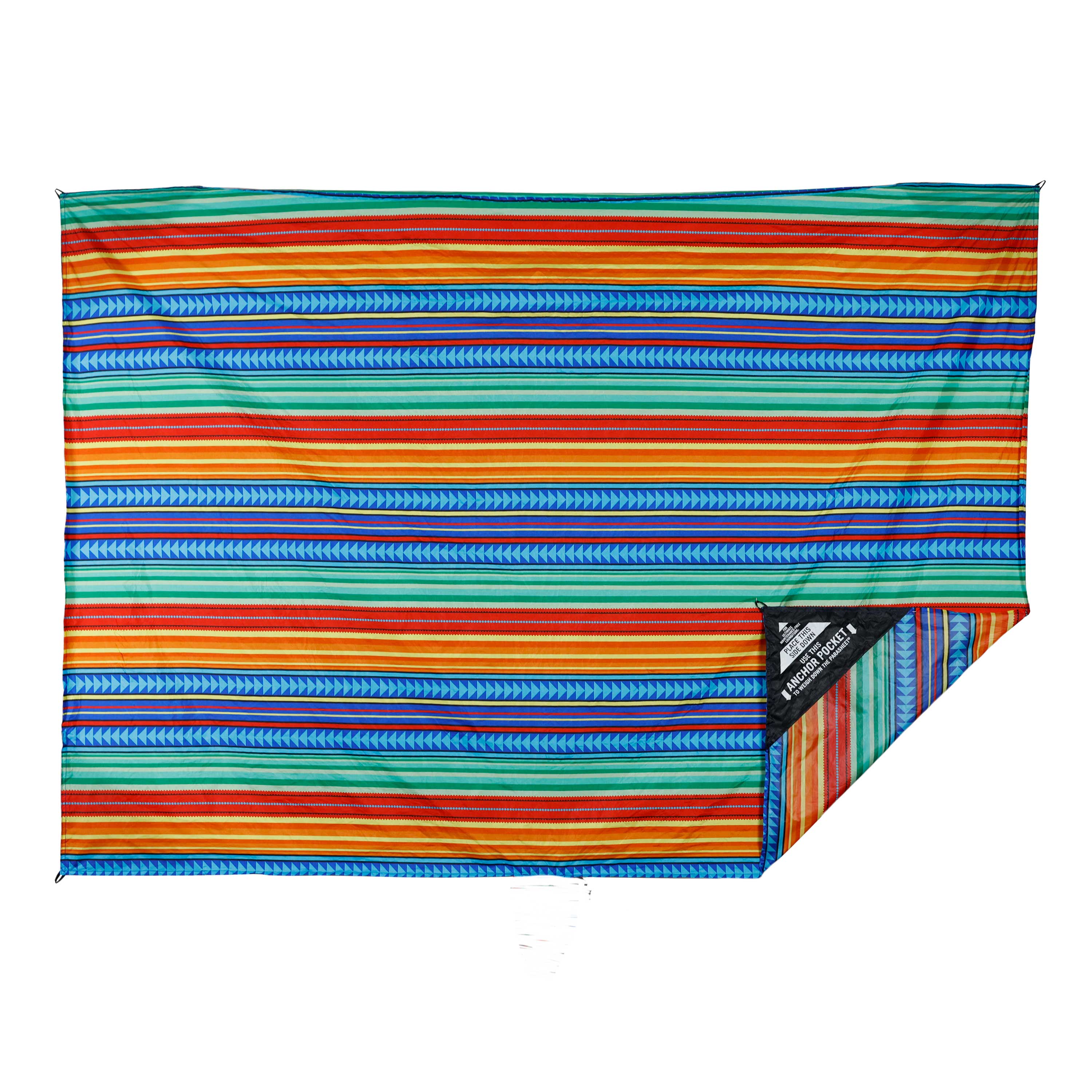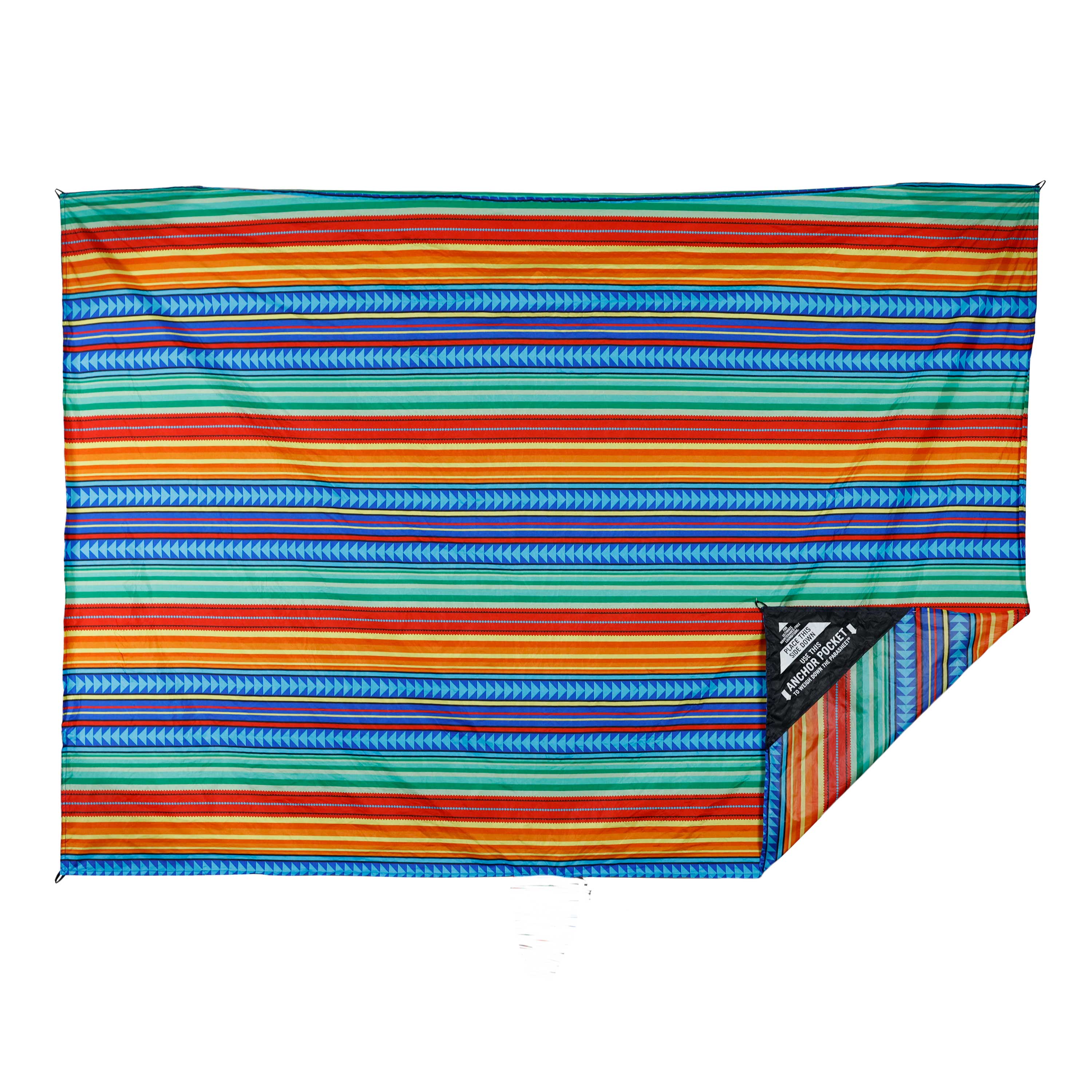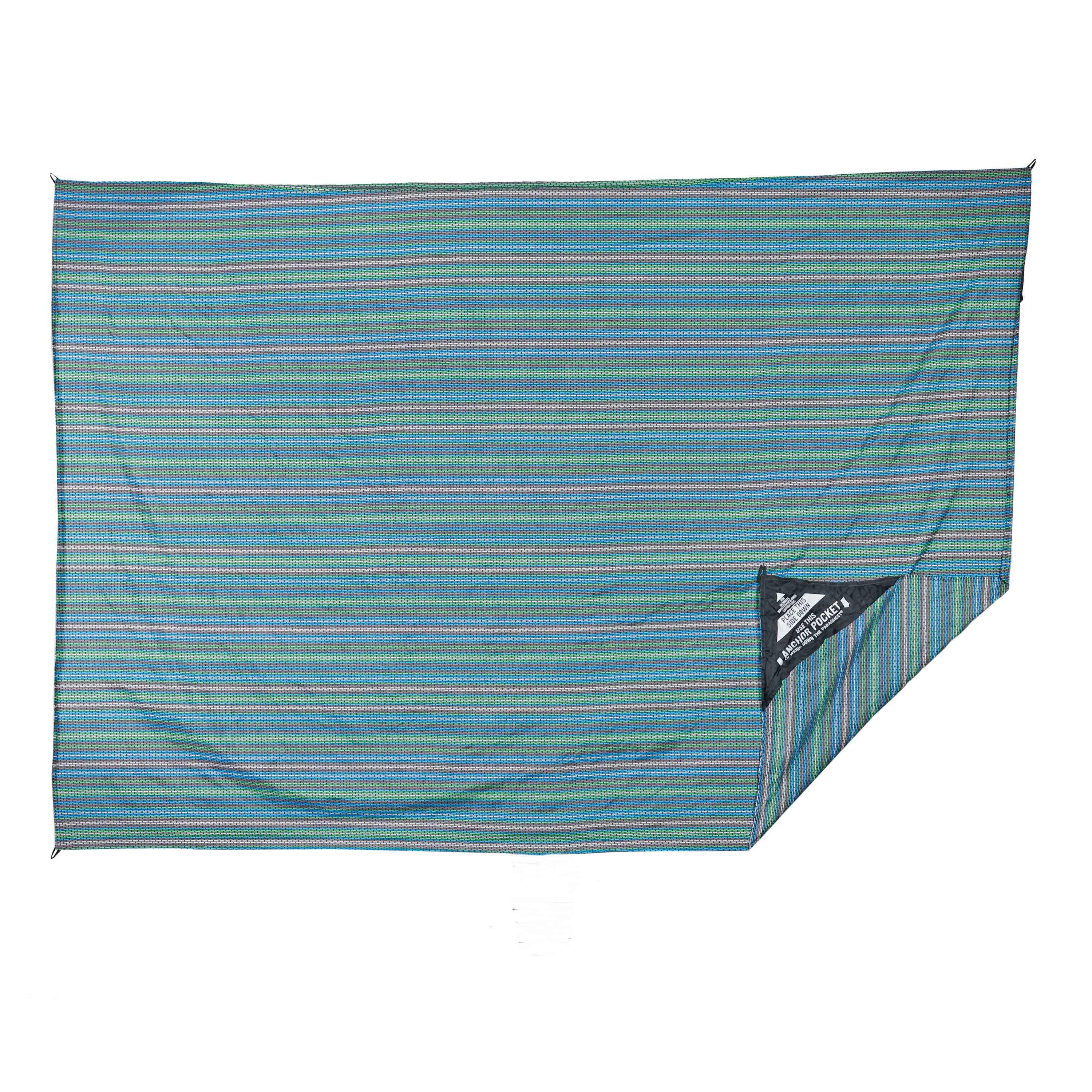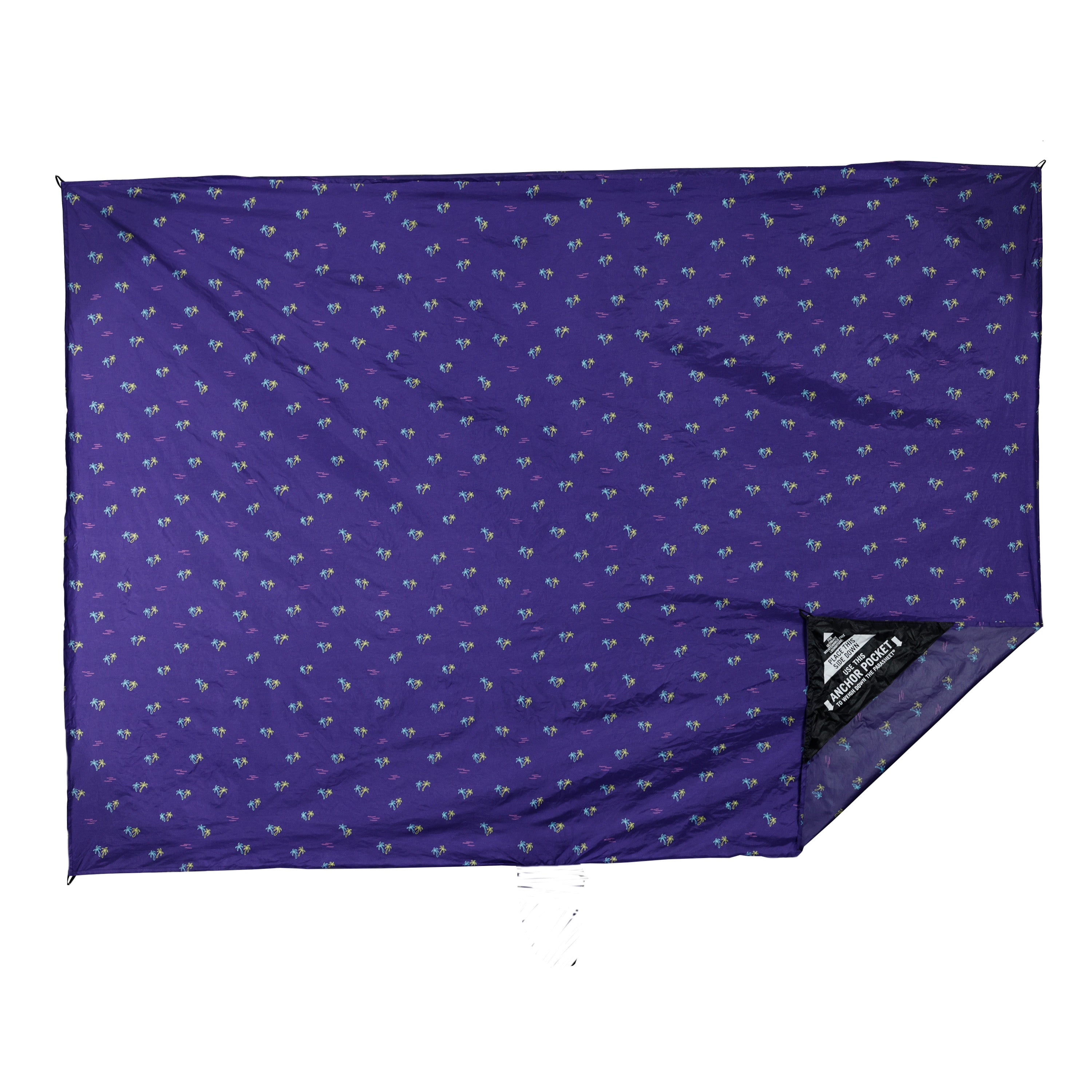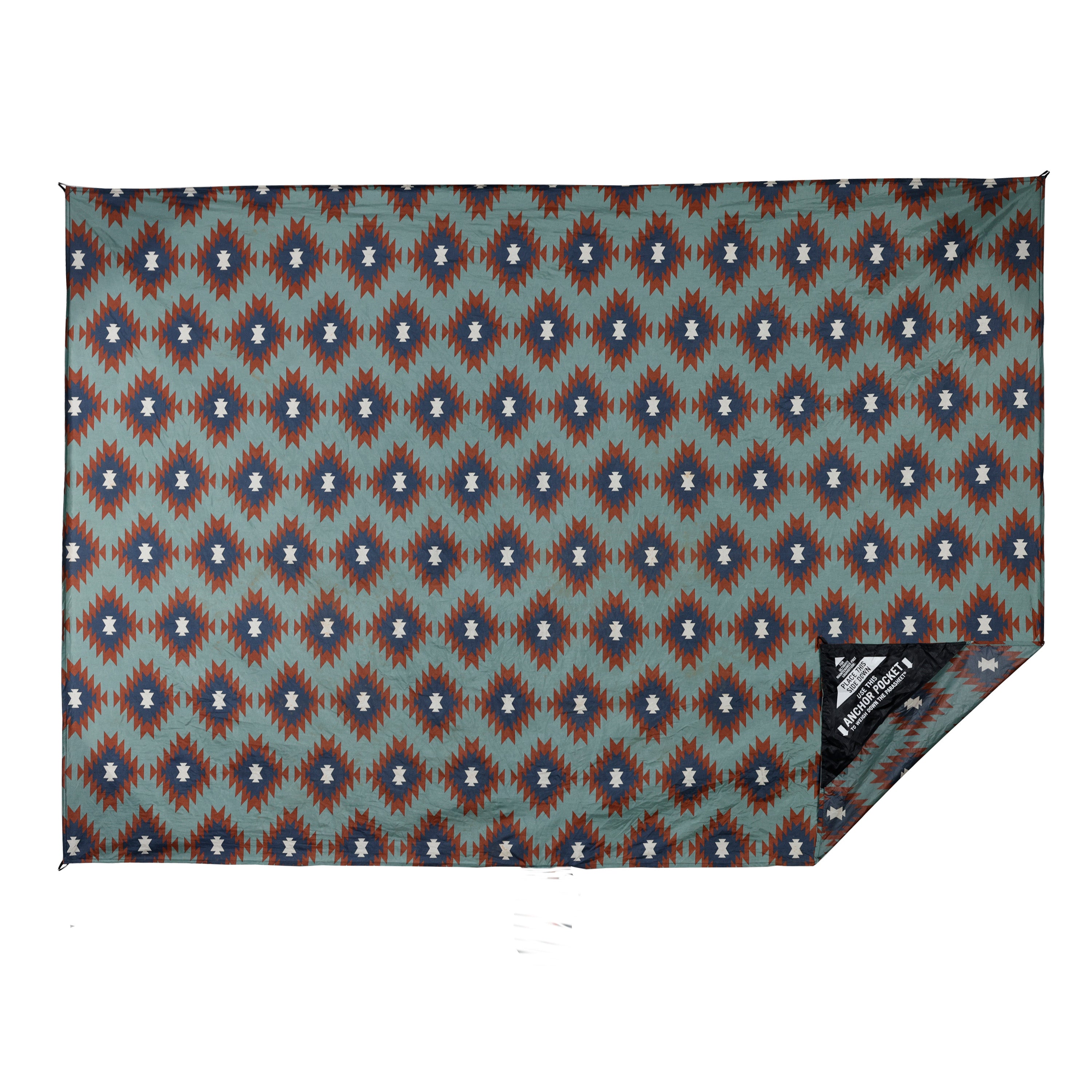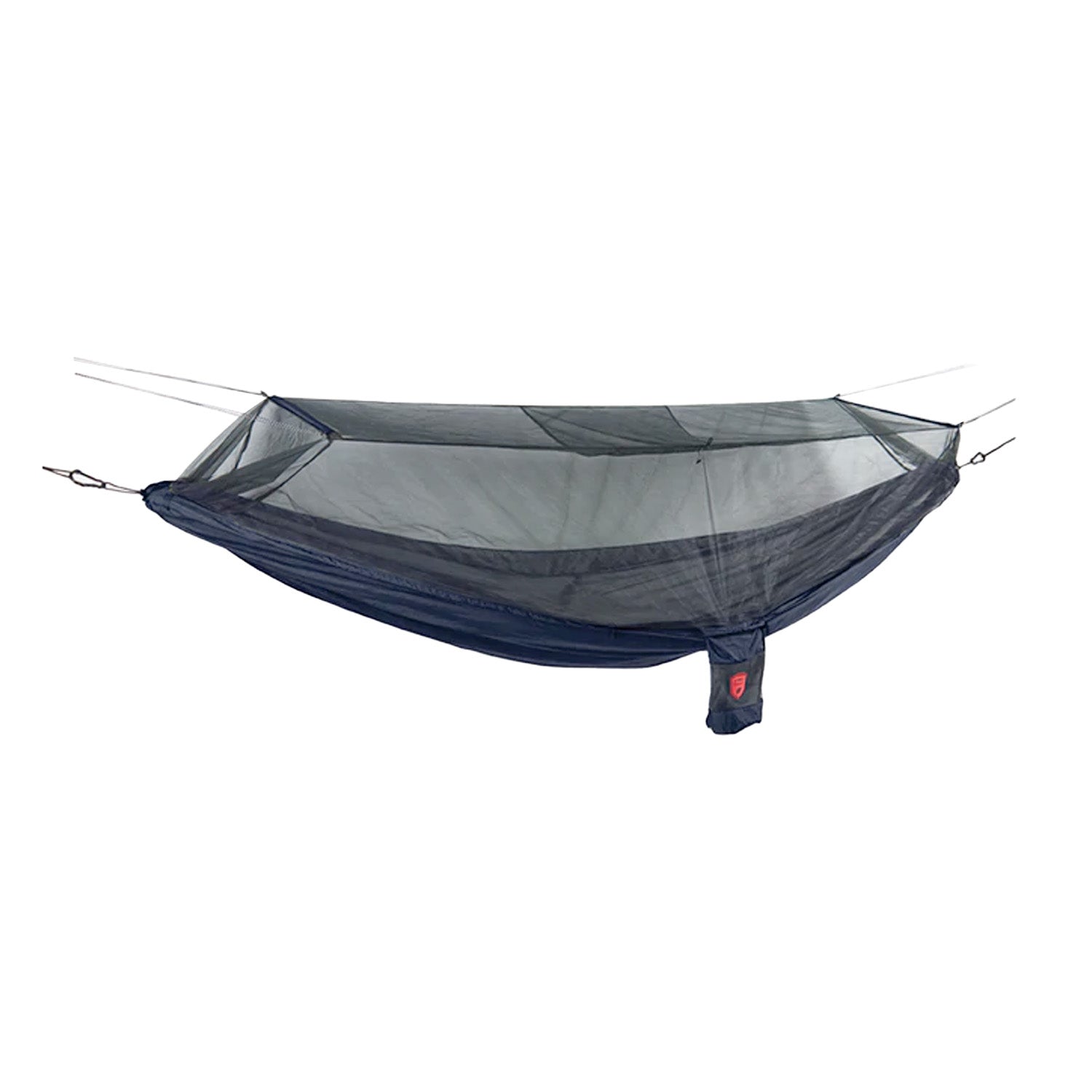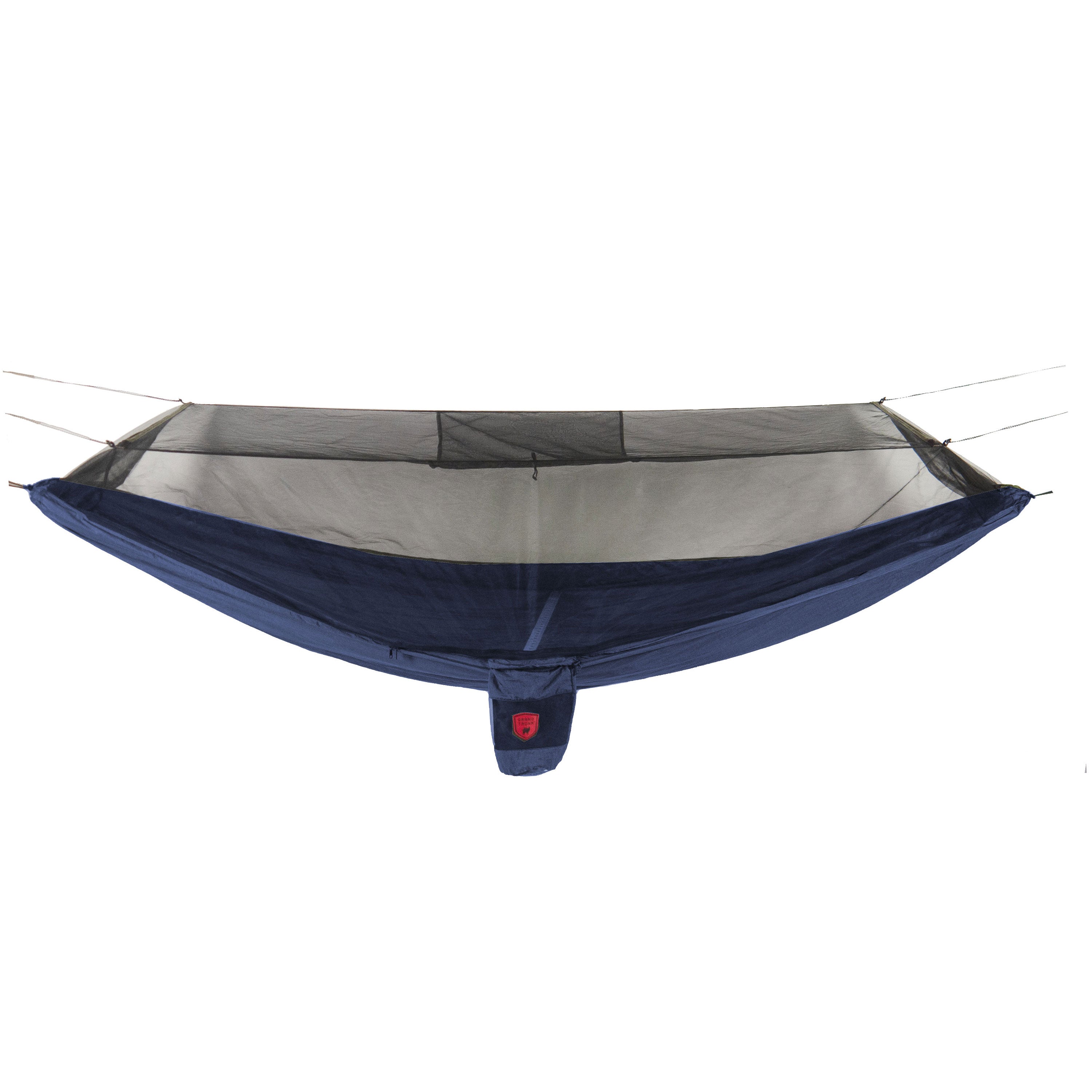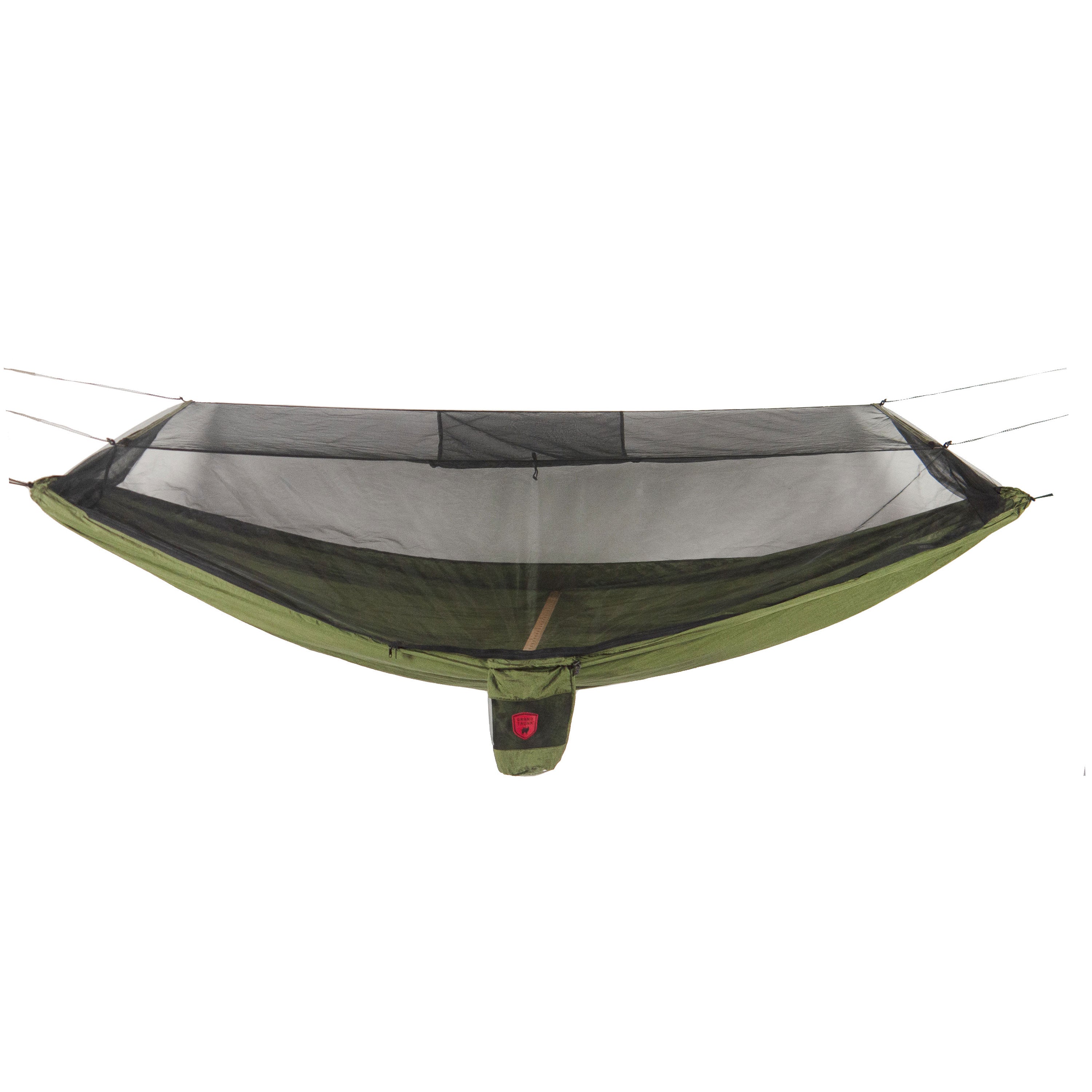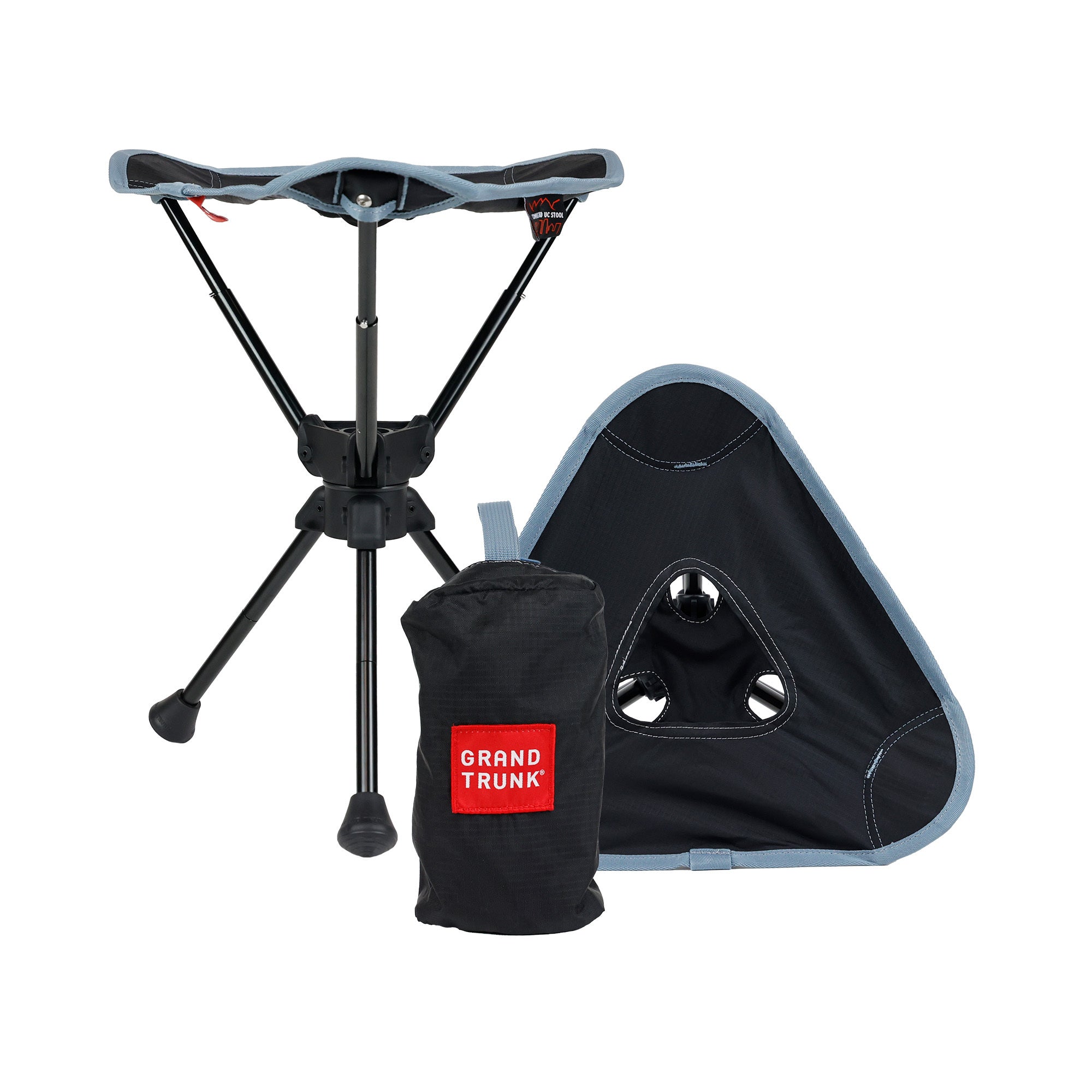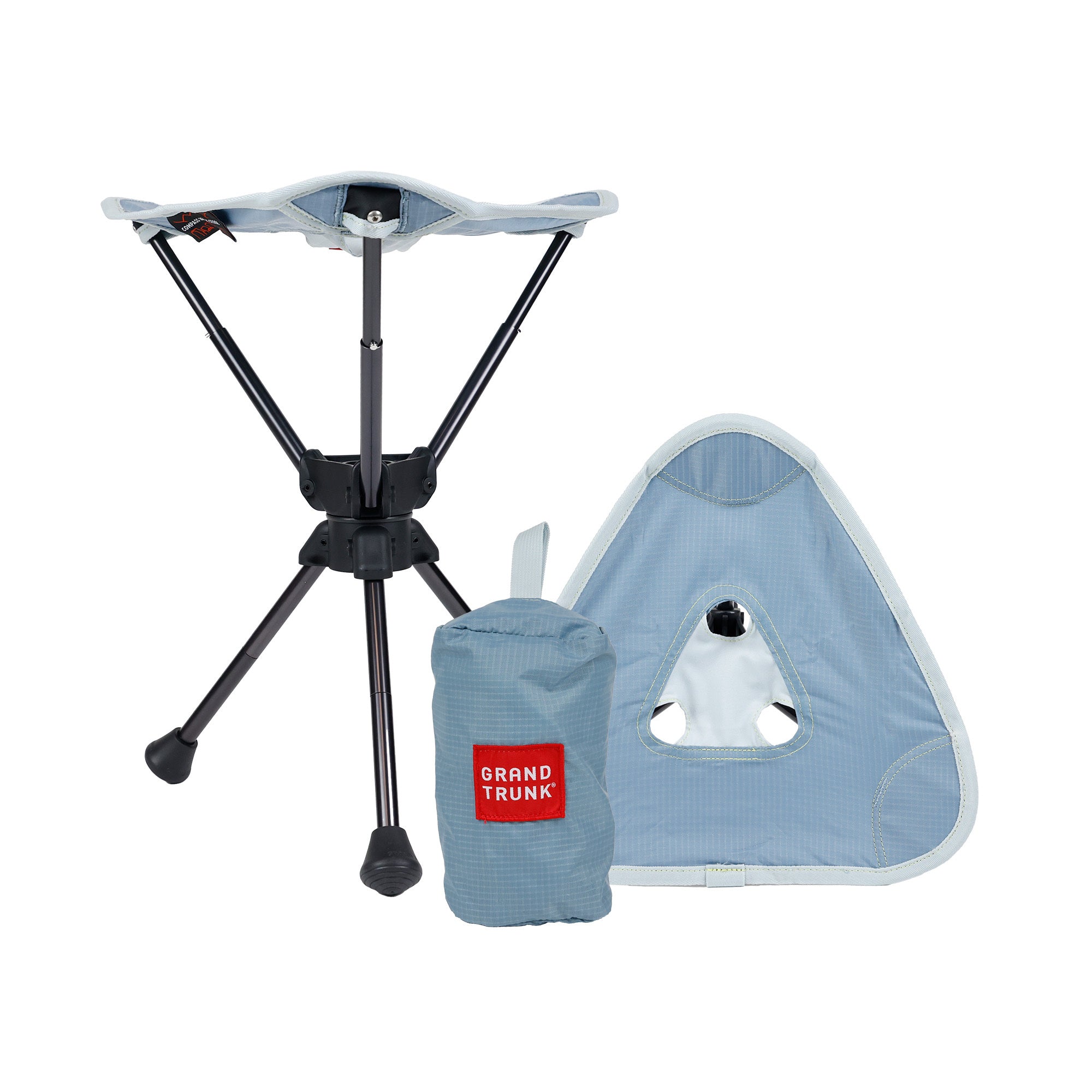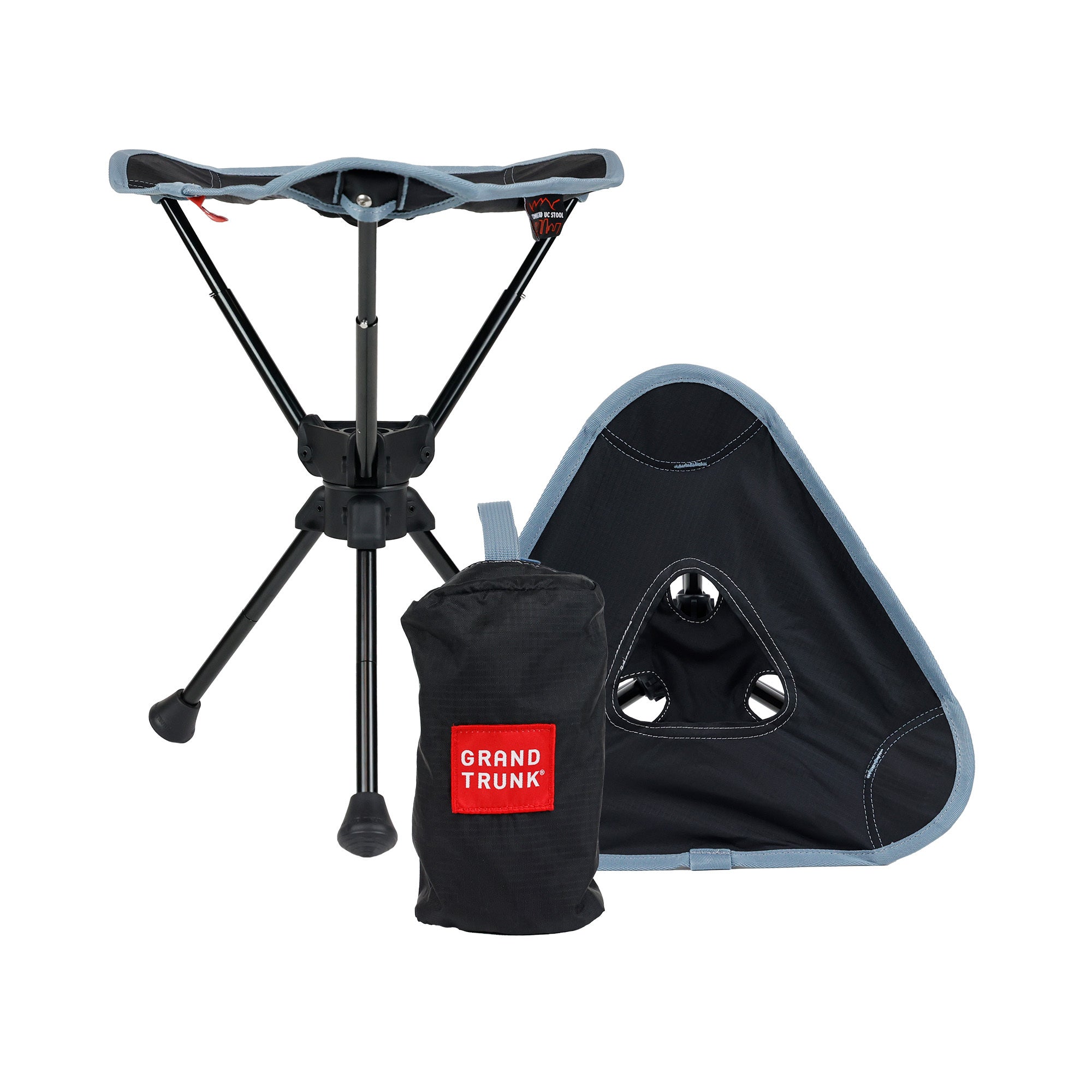Where to Hang…
Written by Emily Struss, National Forest Foundation
Sleeping in a hammock is one of the most comfortable and freeing ways to set up camp in the woods. Who doesn’t love that gentle sway, relaxing suspension, and being able to look up at the stars at any moment?
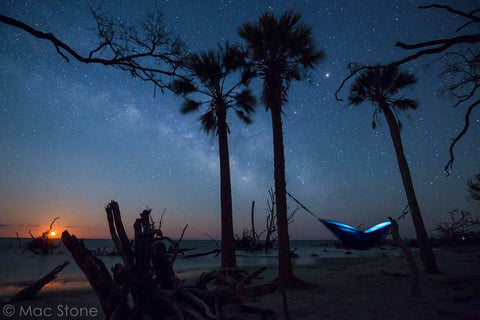
The common conception of hammock-related injury comes from that “plop” when you miscalculate the placement of a strap or get a little overzealous jumping in and end up on the ground. But there is an even greater risk that comes from choosing the wrong spot or trees to hang your hammock. Although the laughable “plop” can result in a bruised tush and maybe some gentle mockery from your friends, the less laughable but very real danger stems from choosing trees that cannot support your weight, resulting in the tree snapping and potentially causing serious injury or even death. (Yes, this tragically does happen more than you might think).
Below are some best practices from the tree nerds at the National Forest Foundation on where to hang:
- Choose two hanging points about 12-17 feet apart.
- Make sure your hammock is at least 18 inches off the ground, but not so high that falling out will cause more than a bruised ego.
- When choosing your tree:
- Choose a tree that is alive.
- Choose a tree with at least a 6” diameter (but bigger is always better).
- Check above your desired spot to make sure there are no large branches that could fall off.
- Know the type of tree you’re hanging under and choose appropriately. Cottonwood trees, for example, are known for their brittle branches that can break without warning, and the paper-like bark of birch trees is fragile and delicate.
- Make sure to use the right straps that will hold your weight while protecting the trees’ delicate bark.
- Use wide nylon straps that will help protect the bark. Don’t use rope, which can cut into the bark.
- Invest a few bucks in tree-friendly straps, which you can find from many hammock retailers/manufacturers, such as Grand Trunk Goods Trunk Straps.
- Be aware of rules prohibiting hammocks in some spaces and be sure to follow them.
- Clean your straps after each use, so you don’t unintentionally spread insects or disease from one tree or forest to another.
- Don’t screw or nail anything into a tree.
- Be aware of wildlife, especially birds. Don’t hang your hammock near a bird’s nest or other habitat where wildlife may be resting or eating.
- Select a spot at least 200 feet from any water source to protect the delicate ecosystem where land meets water.
- Do not cut branches or deface a tree in order to get that “perfect spot.”
- ALWAYS practice Leave No Trace.
If you follow these simple tips, spending the night delicately slumbering in your hammock can be a low-impact way to enjoy your next camping adventure.
No Trees Around? No Problem! Try our Hangout Hammock Stand

Have fun, hang out, and enjoy your National Forests!
We would like to make a special request to our favorite hammocks that we are extra careful in the Joshua Tree National Park. Bringing hammocks out to this beautiful park is becoming increasingly popular, and for good reason. But the flora in the park is not the most conducive to supporting hammocks. The flora in Joshua Tree is mostly desert scrub, so the best way to go is bring your hammock stand. In the backcountry it may be possible to hang from rock piles, but you can't do this in developed campgrounds. Higher elevations in the backcountry do have scattered Pinyon Pine and Juniper trees, but few of these are big enough to support a hammock either. Please be cognizant of what you are hanging your hammock from and please make sure it is safe for both you and your hammock support!
